

The Perfect 3, 4 or 5 Days in Northern Ireland Itinerary
Last Updated on February 12, 2024
by Maggie Turansky
Disclaimer: This article contains affiliate links. That means if you click a link and make a purchase, we may make a small commission. As an Amazon Associate we earn from qualifying purchases. For more information, see our privacy policy.

Planning out a Northern Ireland itinerary is an excellent option for those who want to see more of this area than a simple day trip along the Causeway Coastal Route or a day or two exploring Belfast.
If you have 3, 4 or 5 days to dedicate to exploring Northern Ireland, you can see a lot of the country and experience some of the island of Ireland’s most incredible scenery and learn about the heartbreaking recent history.
If you’re planning on visiting Northern Ireland and are curious about what to see and do here, this route will help you map out up to five days of exploring this corner of the United Kingdom.
Table of Contents
How Many Days in Northern Ireland?
Before jumping into this route, you’re likely wondering how many days to spend in Northern Ireland. This can really depend on what kind of trip you’re after, however, if you’re interested in spending time in the city along with seeing the iconic natural sites, then plan to spend at least 3 days in Northern Ireland.
With 3 days, you will have the time to explore Belfast and learn about that city while also having time to get to take in the basalt columns of the Giant’s Causeway and some of the other highlights of the Antrim Coast.
However, if you have 4 days in Northern Ireland, you will have more time to take your time on the Causeway Coast and to spend time at attractions other than the Giant’s Causeway.
For those who want quite a holistic experience, then plan to spend 5 days. This will allow you to add on a visit to the city of Derry and learn about the history here.

Getting To & Around Northern Ireland
There are a range of options available for you when it comes to arriving in Northern Ireland. First and foremost, Belfast is home to its own international airport that connects it to a number of destinations within the UK, Europe and further afield.
Though flying into Belfast is certainly an option, you will find that there are far more flight options going into Dublin airport. Dublin is located only about a 2-hour drive from Belfast and there are also lots of stops along the way . The two cities are also well-connected by bus or train.
It’s worth noting that there is no hard border between Northern Ireland and the Republic of Ireland and it is likely you won’t even notice that you’ve crossed. However, if you are driving, keep in mind that speed limits in Northern Ireland are listed in miles per hour while they’re listed in kilometres per hour in the republic.
It’s also possible to arrive into Belfast via ferry from Liverpool in England and from the village of Cairnryan in Scotland.
Once in Northern Ireland, you’ll be wondering how to get around whilst there. In Belfast and Derry, you can certainly plan to get around on foot and via public transport – in fact, it’s probably easier than planning on driving.
Those venturing outside of the cities have a couple of options. The easiest and most convenient option to get around is by having your own vehicle as it will give you the flexibility to visit where you want when you want without having to reckon with bus timetables and routes. Doing a Northern Ireland road trip is easygoing, fun and incredibly scenic and generally the most recommended option.
And if you’ve decided that a Northern Ireland road trip itinerary is the choice for you, you can browse car hire options on Rentalcars.com to compare prices across major companies.
However, you can also get around regional Northern Ireland by bus and train, where applicable. For instance, there is a regional bus system connecting the sites along the coastline so it is possible to travel independently in this area even if you don’t drive.

3, 4 or 5 Days in Northern Ireland Itinerary
Without further ado, here is how to spend 3 to 5 days exploring Northern Ireland. This route is meant to be built upon each day so if you’re only seeing Northern Ireland in 3 days, then plan to spend the first 2 in Belfast before heading onto the Causeway Coast. And if you’re spending 4 days, it’s best to leave a visit to Derry for another time.
Day 1 – Belfast
Begin your time in Northern Ireland in the capital city of Belfast . Though this city has a bit of a dark reputation and something of a rough-around-the-edges vibe, it’s very much worth exploring and it has a lot to offer visitors – especially for those interested in learning more about its recent history.
On your first day in Belfast, make sure to learn as much about the history of the city as possible by embarking on a black cab tour . On these tours, you can learn about the Troubles from knowledgeable guides and also get a good feel for the geography of this divided city.
After your tour, head to Belfast City Hall and then visit the historic Crumlin Road Gaol before rounding out your day.

Where to Stay in Belfast
The Warren Belfast – Those looking for luxury will love this plush, centrally-located hotel in the heart of Belfast. They have several luxe rooms to choose from, great amenities, breakfast each morning and an unbeatable location in the Queen’s Quarter
Central Belfast Apartments: Citygate – If you’re looking for a self-catering option while visiting Belfast, then these apartments are the perfect choice. Centrally located, they have many fully-furnished flats available along with free parking for guests.
Vagabonds – Budget and solo travellers will love this cool, highly-rated hostel in Belfast. Offering both private rooms and dorms, there are also clean facilities and great common areas making it easy to meet other travellers.
Not quite what you’re looking for? Click here to browse more Belfast hotels!
Day 2 – Belfast
On day 2, it’s time to visit one of the Northern Irish capital’s top museums – the Titanic Belfast. The infamous ocean liner was actually constructed in Belfast before it embarked on its fateful 1912 journey across the Atlantic.
This iceberg-shaped museum will take you through a range of exhibits explaining all there is to know about the Titanic and the history surrounding both the construction of the ship itself and also some information about the crash and its repercussions. It’s truly a great experience to have while in Belfast. You can book tickets in advance here.
Spend the rest of your day in Belfast exploring some of the sites that you didn’t make it to the first day. For instance, you can grab a bit to eat at St George’s Market, get the views from the Victoria Square Dome or even head to CS Lewis Square to take in some statues dedicated to the late children’s author and theologian.

Day 3 – Causeway Coast
On day 3 of this trip, it’s time to head out of the city and make your way to the north of the country – to the iconic Causeway Coast. We highly recommend leaving Belfast as early as possible to make it to the Giant’s Causeway before the tour buses arrive – it takes about an hour to drive here from the capital.
If you don’t have a car, there are a number of guided tour options such as this full-day tour or this full-day tour that will pick you up from Belfast in the morning.
The Giant’s Causeway is the name for a collection of roughly 40,000 hexagonal basalt columns that were likely formed as part of an ancient volcanic eruption.
However, in Irish myth, it is said to have been formed when an Irish giant built a causeway in order to fight a Scottish giant — there are similar rock formations on the island of Staffa just off the Hebridean Isle of Mull in Scotland.
Note that the Causeway is free to enter, however, it is not free to park at the visitor’s centre or go inside unless you’ve paid for that. If you’re up for a bit of a (beautiful) walk, we recommend parking at the Salmon Rock Beach car park in the town of Portballintrae and walking to the Giant’s Causeway – that way you can visit entirely for free!

Plan to spend a couple of hours at the Giant’s Causeway as there is more here than just the rock formations. Take the time to walk on all of the trails and really take in the views of this gorgeous place. It’s a truly spectacular experience and an essential inclusion on any Northern Ireland road trip itinerary.
After visiting the Giant’s Causeway, you can take the time to take in some other sites on the Northern Ireland Coast. Head over to the town of Bushmills and tour the Bushmills distillery. You can also make your way over to some viewpoints and maybe even go on a few more walks.
If you’re only spending 3 days in Northern Ireland and want to maximise your time here, you can take in some of the other sites in this area, such as the Carrick-a-Rede rope bridge, Dunluce Castle and the Dark Hedges. However, if you are planning a 4- or 5-day itinerary, then you can take your time more at go at a slower pace.
End your day in the town of Portrush. This makes a great base in the area and the town itself is a popular seaside resort complete with its own amusement park and lovely beach. There are also plenty of pubs and restaurants to unwind in at the end of the day with a pint of Guinness and a good meal.
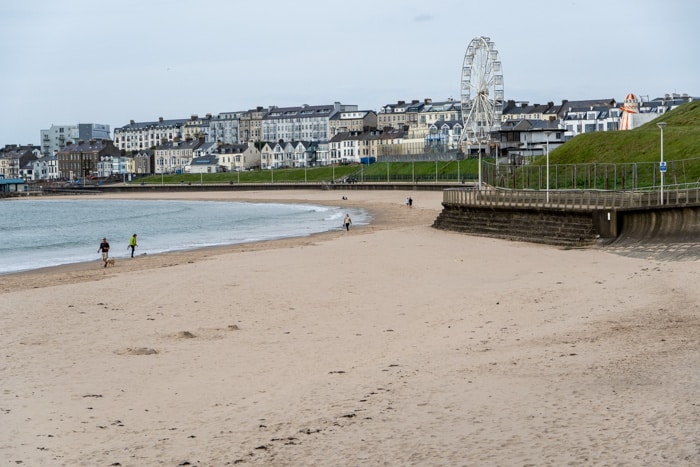
Where to Stay on the Causeway Coast
Anvershiel House – Located in the town of Portrush, this bed and breakfast is an excellent mid-range option for those exploring this part of Northern Ireland. They offer several clean and bright rooms, an excellent breakfast available in the mornings, and a location within walking distance of the beach and town centre.
Elephant Rock Hotel – Those looking for a luxury hotel while on the Causeway Coast will love this chic hotel in Portrush. Centrally located, they have a range of lovely rooms to choose from, an on-site restaurant and bar along with plenty of other great amenities.
Causeway Hotel – If you’d like to stay within a stone’s throw of the Giant’s Causeway and see it without the tour buses, then this hotel is a great option. Located adjacent to the visitor’s centre, booking a night here will also grant you free entry to the centre along with plenty of other perks.
Not quite what you’re looking for? Click here to browse more Causeway Coast hotels!
Day 4 – Causeway Coast
Those who have more time to devote to the Causeway Coast will be energised to hit the road early and start exploring again.
Start your day by touring the lovely and striking Dunluce Castle. This ruined castle is perched on striking cliffs not far at all from the town of Portrush and it makes for an excellent place to visit.
Next, you can make your way over to the Carrick-a-Rede rope bridge. This place was used as a filming location for the HBO series Game of Thrones and it is now very popular amongst visitors – so make sure to book your tickets online in advance and also to arrive relatively early if you want to beat the crowds.
You can spend a fair amount of time hiking around here and it’s worth doing this on your second day so that you don’t feel rushed.
Of course, no visit to this area of Northern Ireland is complete without heading to the Dark Hedges. Again, this was used as a filming location for Game of Thrones and it is an incredibly popular tourist attraction. It’s simply a country laneway that is lined with intertwining trees.
Keep in mind that it is definitely a lot more beautiful in the late spring and summertime when there are leaves on the trees and it can seem a bit lacklustre in the winter to about mid-May.

Day 5 – Derry
If you’ve got five days to devote to your Northern Ireland road trip, then make sure not to miss the city of Derry (Londonderry). As Northern Ireland’s second-largest city, Derry can be overlooked by visitors here, however, it has a lot to offer visitors and can provide important cultural context.
Though the city has been popularised as a destination because of the sitcom Derry Girls (you can even tour filming locations ), it doesn’t get the same amount of attention as Belfast.
Derry is a small city and you can certainly take in the majority of the sites and points of interest within the confines of a day. Take the time to walk the city walls – Derry is, in fact, the only walled city in Ireland and this is a great thing to do here.
Of course, no visit to Derry is really complete without taking the time to learn about the city’s more recent history and what life was like during the Troubles. You can visit the Bloody Sunday memorial to learn more about the 1972 massacre and you can also opt to take a walking tour of the Bogside murals with a knowledgeable local guide.
Those who want to learn even more about the city’s history will also find the Free Derry Museum interesting.
Another top Derry attraction is the Peace Bridge. The pedestrianised bridge connects the majority Unionist east side of the city to the majority Republican west side of the city and was meant to be an emblem of bridging the gap of a centuries-long political divide.

Have More Time?
If you have more time after this Northern Ireland itinerary, why not continue on from Derry into the Republic and visit County Donegal ?
If you’re coming from Northern Ireland and only have a day, then driving the Inishowen 100 is an excellent way to explore this part of northwestern Ireland. However, you could easily spend more time exploring this area, as well.
You can reach the town of Muff in County Donegal in about 15 minutes or you can drive north and take the ferry across Lough Foyle to the town of Greencastle. The latter option would also give you the opportunity to make a stop at Mussenden Temple.
For those who want to tour more of the Emerald Isle, then consider heading further south and enjoying some of (or the entirety of) the Wild Atlantic Wa y. County Donegal is absolutely gorgeous, but other highlights include Benbulben in County Sligo, Achill Island in County Mayo, Connemara in County Galway and more.

When planning a trip to Northern Ireland, you may not realise just how much this small country has to offer visitors. From vibrant and historic cities to some of the most spectacular natural scenery there is to offer in this world, spending a few days exploring Northern Ireland is never a bad idea.
Are you planning to visit Northern Ireland? Have any questions about this route? Let us know in the comments!

Related Posts:

The Ultimate Giant’s Causeway Day Trip from Belfast

The Perfect 1, 2, or 3 Days in Belfast Itinerary

10-Day Ireland Itinerary: 3 Road Trip Routes

About Maggie Turansky
Maggie is a co-founder and writer for The World Was Here First. Originally from the US, she has lived in five different countries and has travelled to dozens more, both solo and with her partner, Michael. She particularly loves exploring Spain and spending time in the Caucasus and the Baltics. Read more about Maggie
Hi, I enjoy reading your travel blogs and find them informative. Living in Northern Ireland I’d like to let you know that not only do we have an airport some 20 miles away from the city centre but there is also George Best Airport less than 2 miles from the City Centre and is great for those arriving to the city for its convenience. Also please note that St George’s market is only open from Friday to Sunday . I have seen many disappointed tourists arrive to the market on other days only to find it closed. Finally if you are travelling from Britain and have a National Trust membership this will allow free entry at the Causeway centre and other attractions – their website would provide more detail.
Thanks for those insights, Barbara!
Thank you so much Barbara Would not have thought about our N T membership. We are thinking about driving, any suggestions??
Leave a Comment Cancel reply

©S-F/Shutterstock
Northern Ireland
An exploding food scene, hip cities and the stunning Causeway Coast: there's plenty to pull visitors to the North. When you cross from the Republic into Northern Ireland you'll notice a couple of changes: the road signs are in miles and the prices are in pounds sterling – you're in the UK. At the time of research, there was no border checkpoint and not even a sign to mark the crossing point.
Best Things to Do
Attractions, must-see attractions.
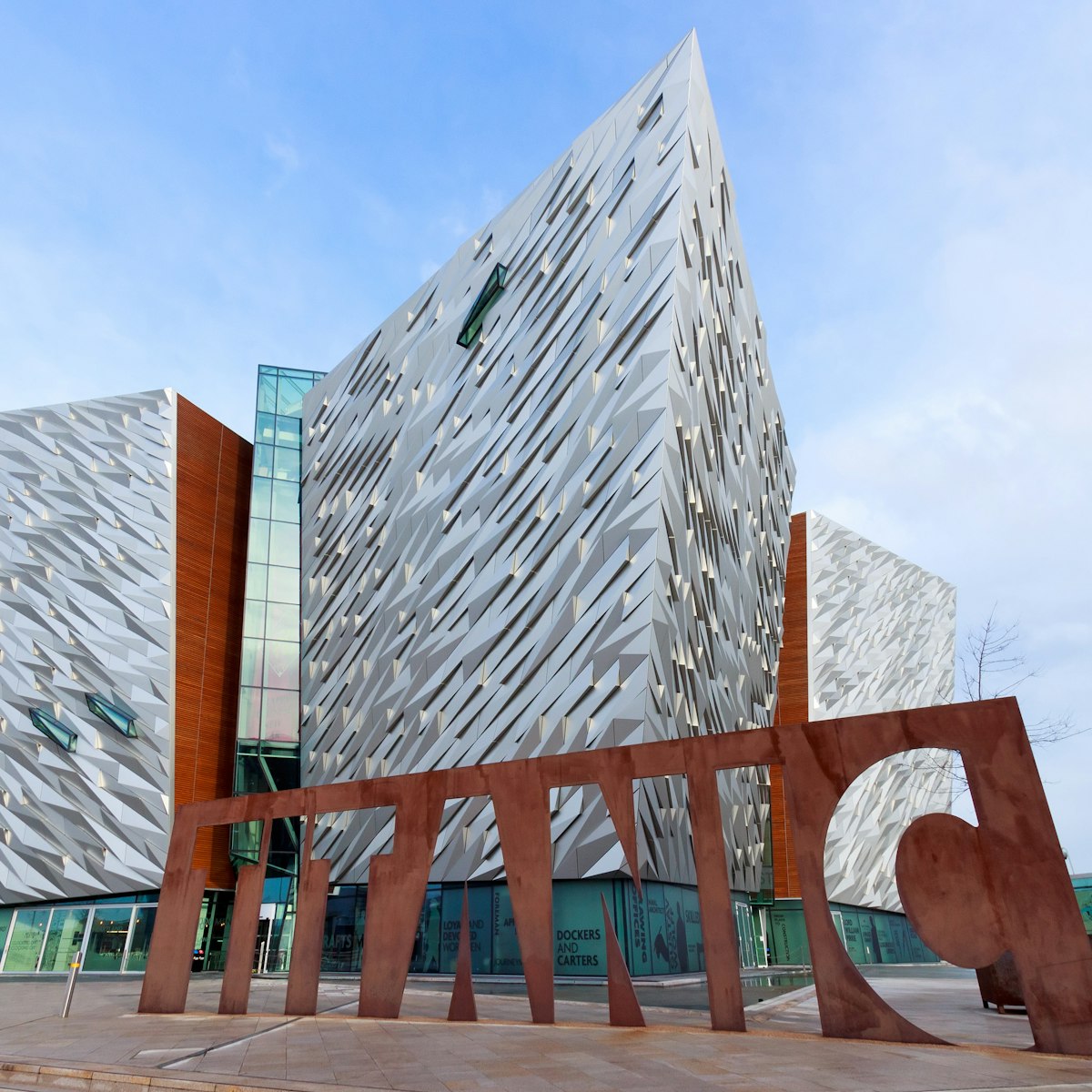
Titanic Belfast
The stunning, star-shaped Titanic Belfast is the city's number-one tourist draw. Standing majestically at the head of the slipway where the Titanic was…
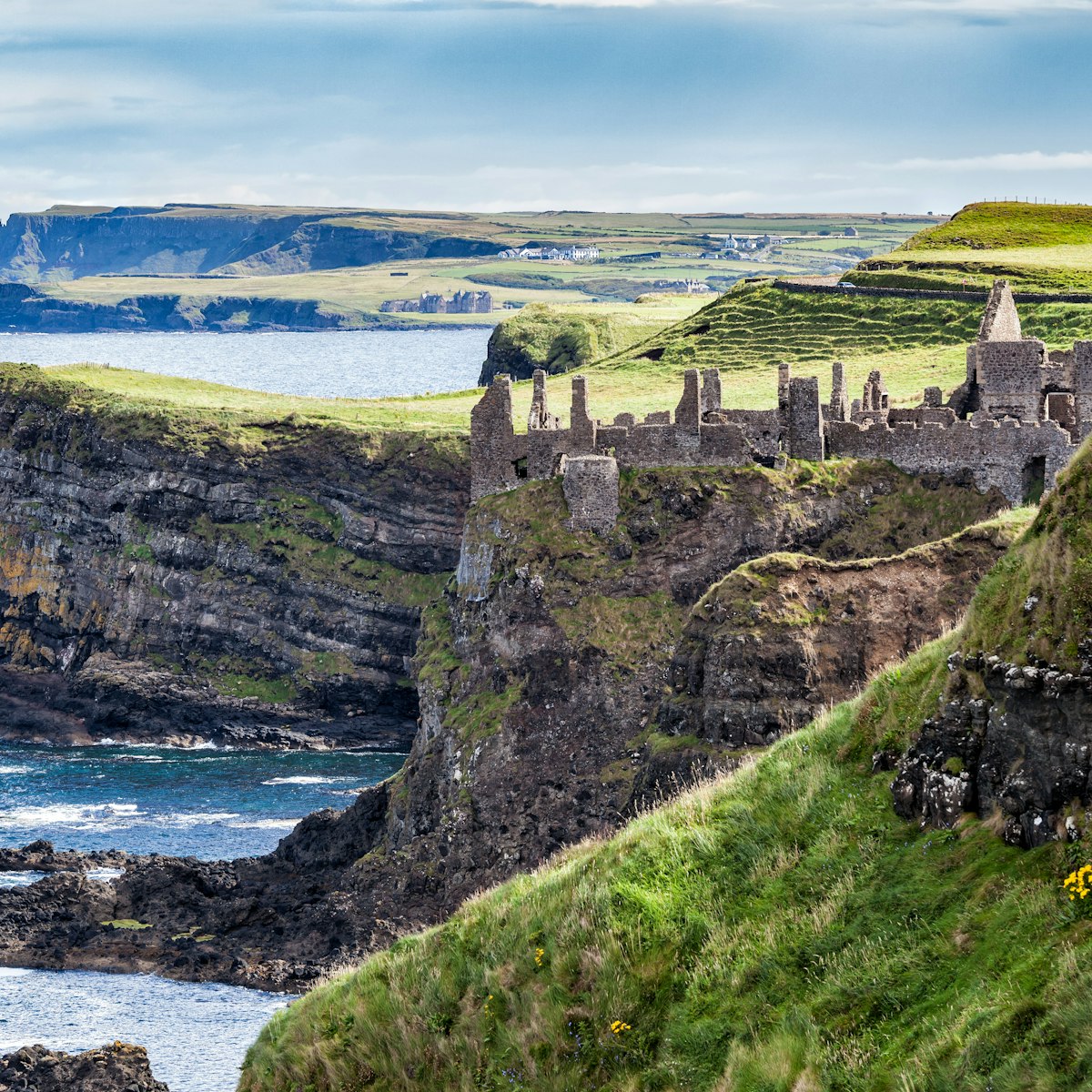
Dunluce Castle
This medieval castle ruin is perched on top of a dramatic cliffside overlooking the glorious Causeway Coast.
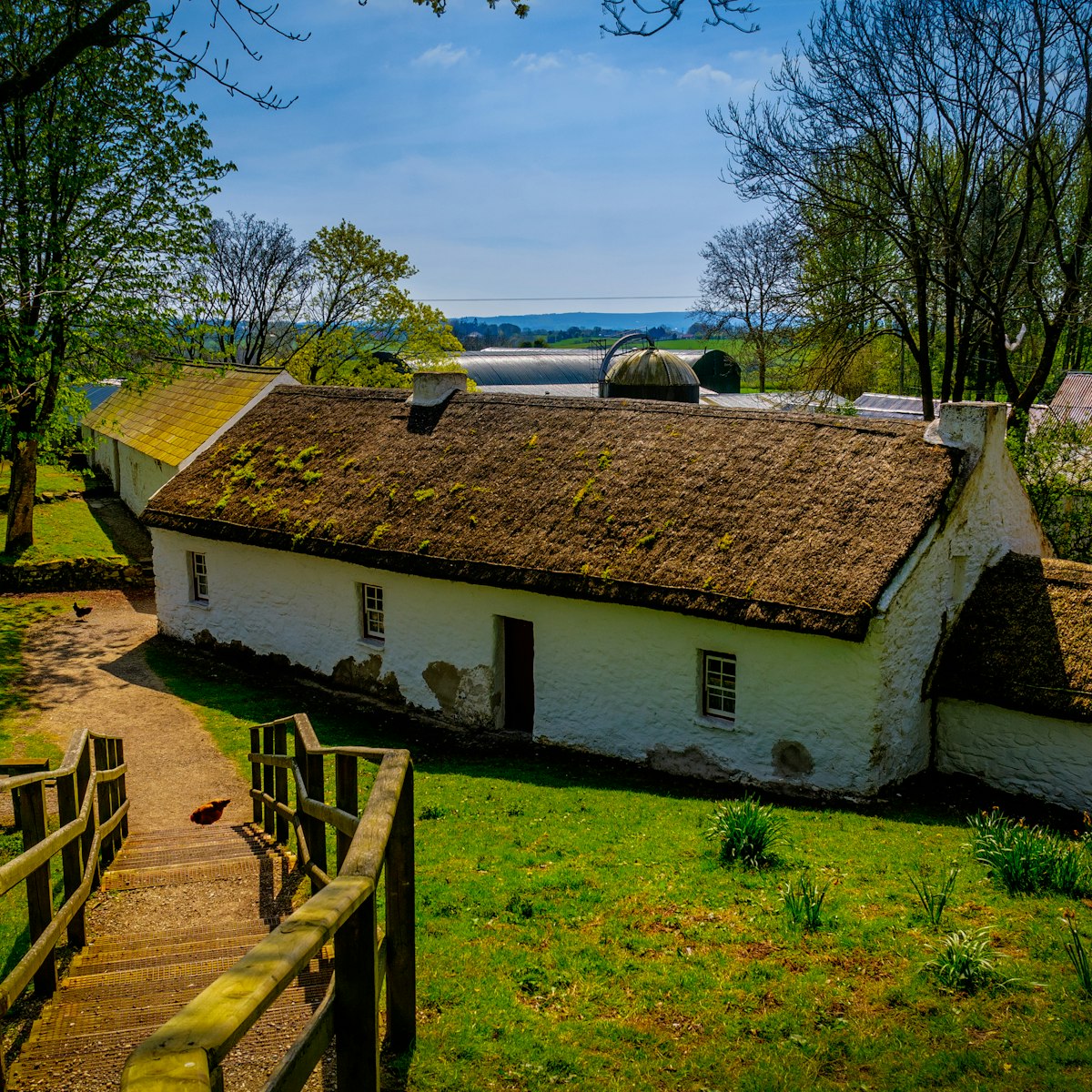
Ulster American Folk Park
Counties Fermanagh & Tyrone
In the 18th and 19th centuries more than two million Ulster people left their homes to forge a new life across the Atlantic. Their story is told here at…
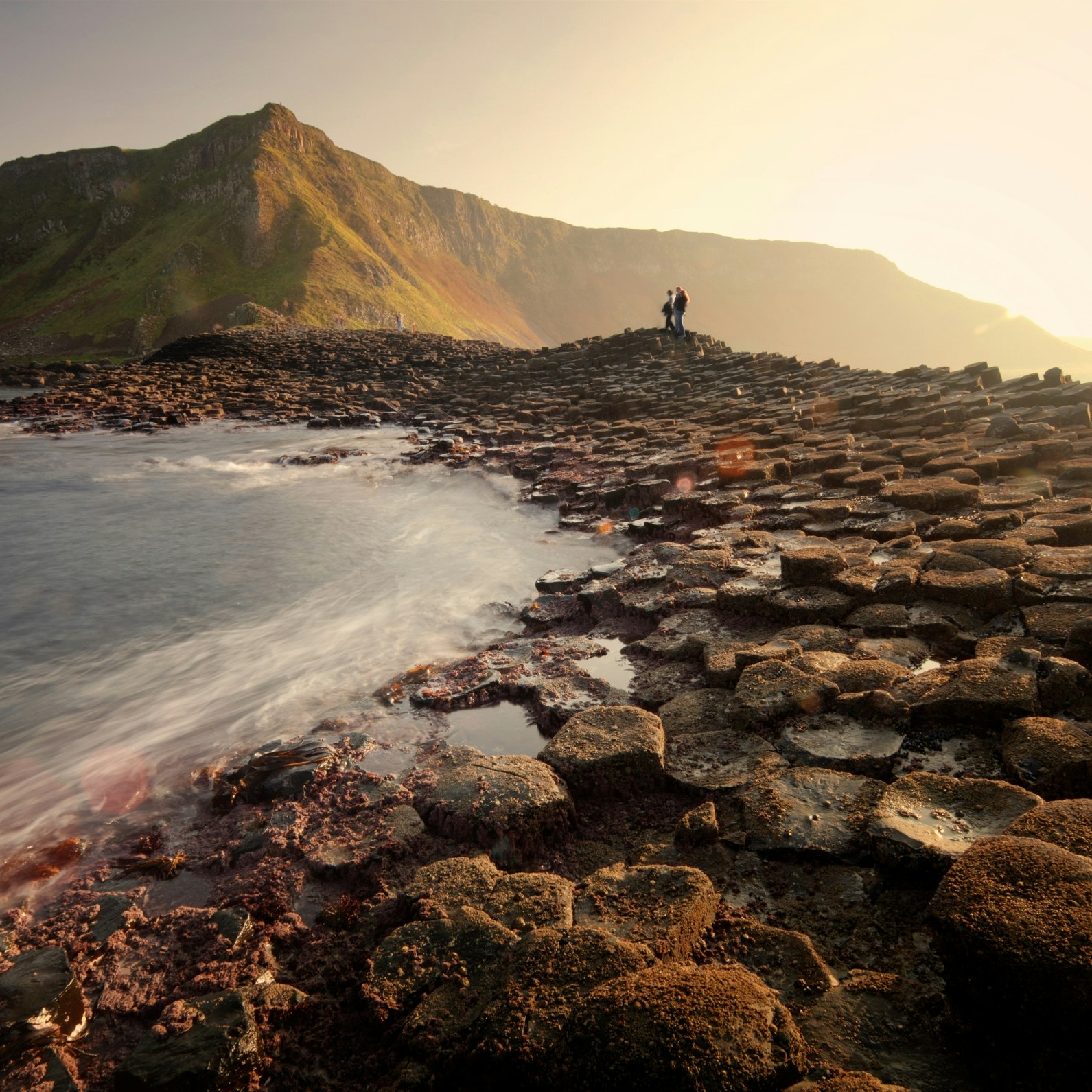
Giant’s Causeway
County Antrim
This spectacular rock formation – Northern Ireland's only Unesco World Heritage site – is one of Ireland's most impressive and atmospheric landscape…
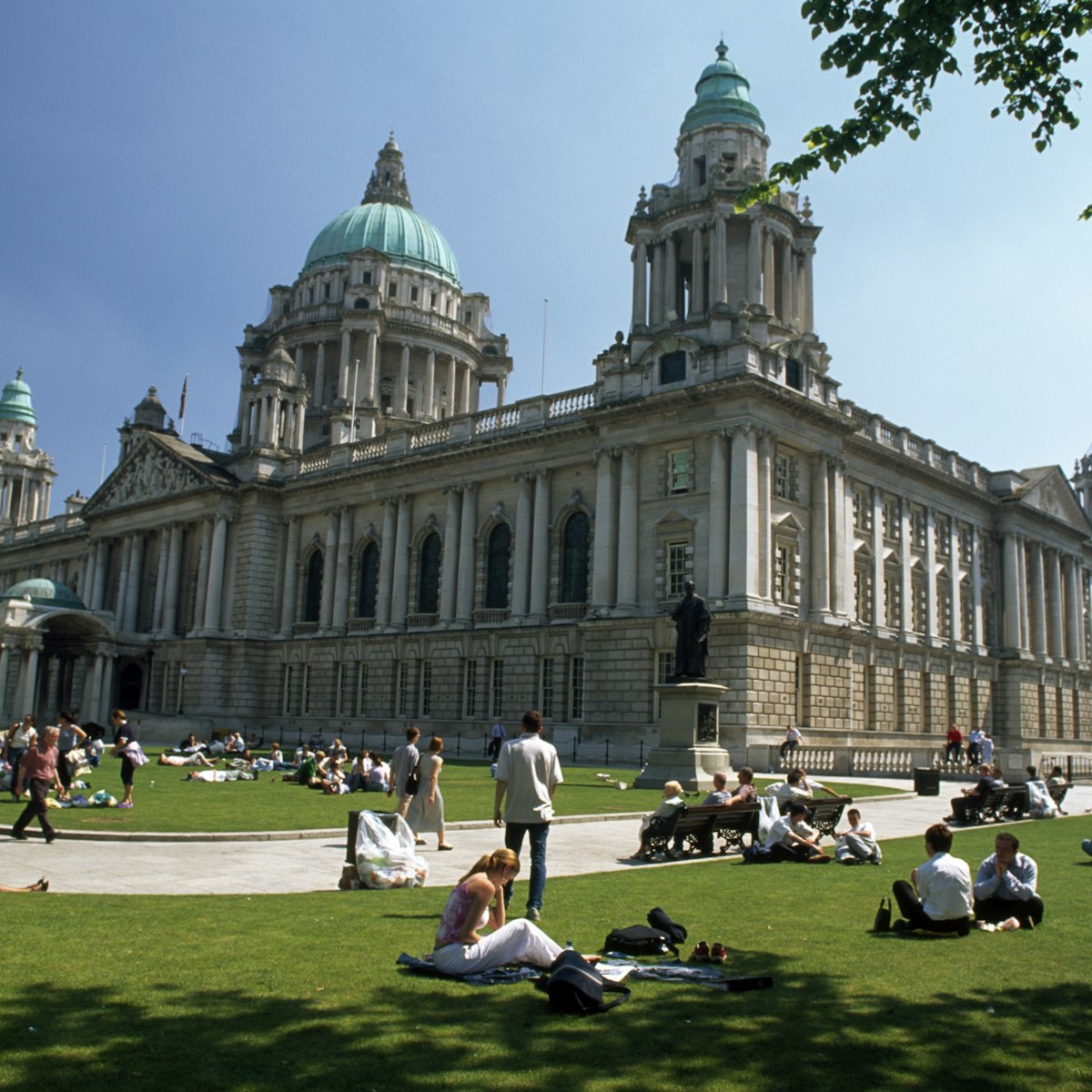
Belfast's classical Renaissance-style City Hall was built in fine, white Portland stone in 1906. Highlights of the free, 45-minute guided tour include the…
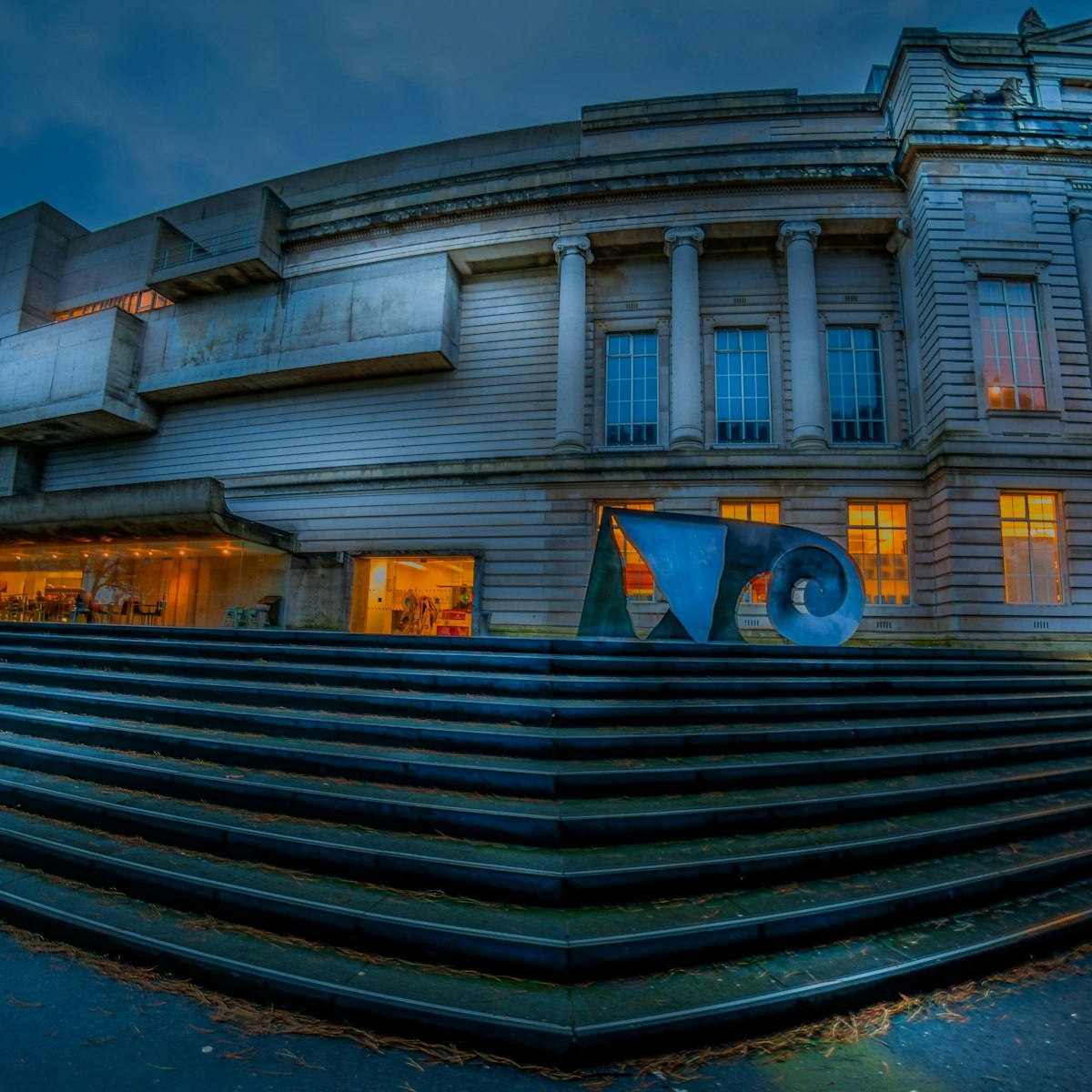
Ulster Museum
You could spend hours browsing this state-of-the-art museum, but if you're pressed for time don't miss the Armada Room, with artefacts retrieved from the…
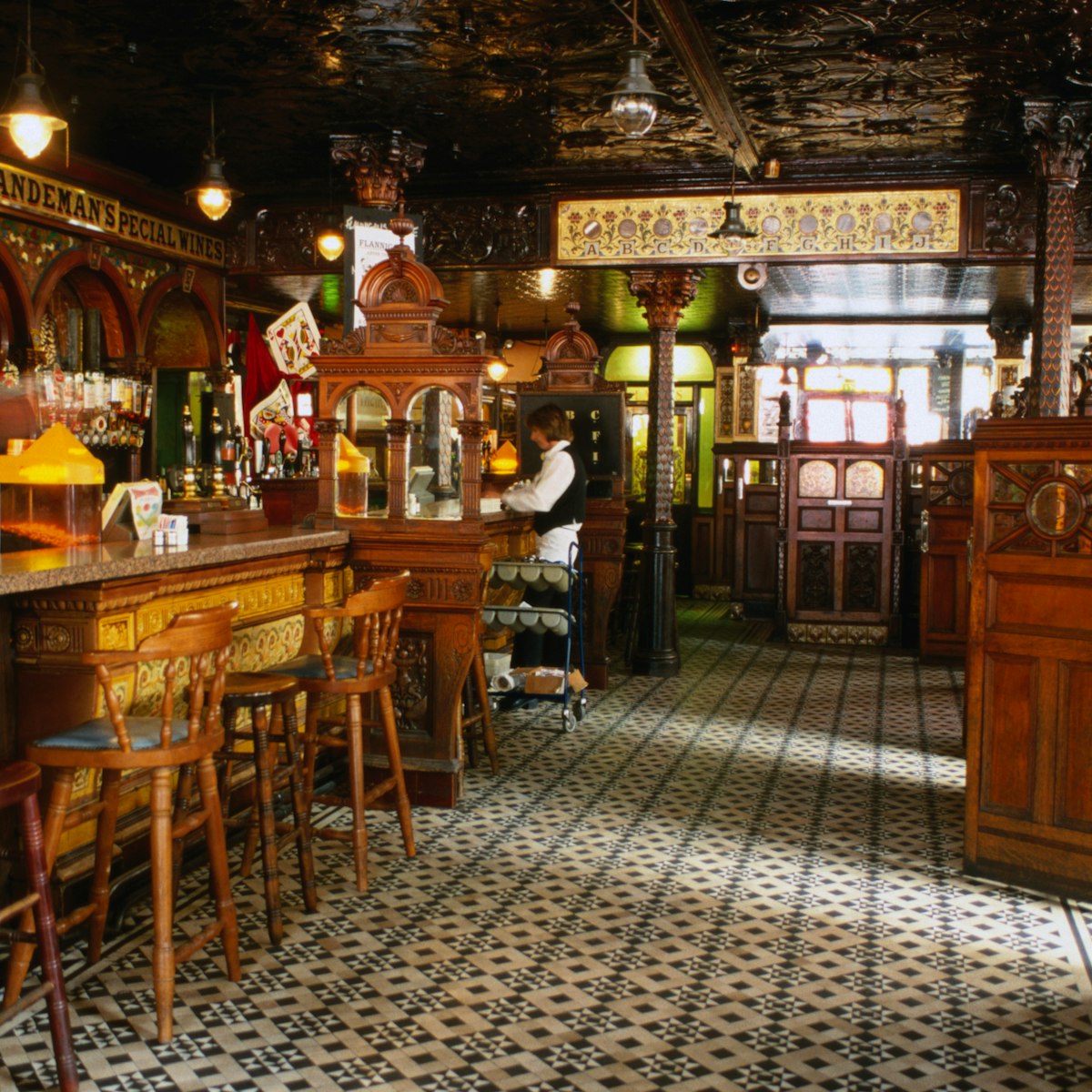
Crown Liquor Saloon
There are not many historical monuments that you can enjoy while savouring a pint of Guinness, but the National Trust's Crown Liquor Saloon is one of them…
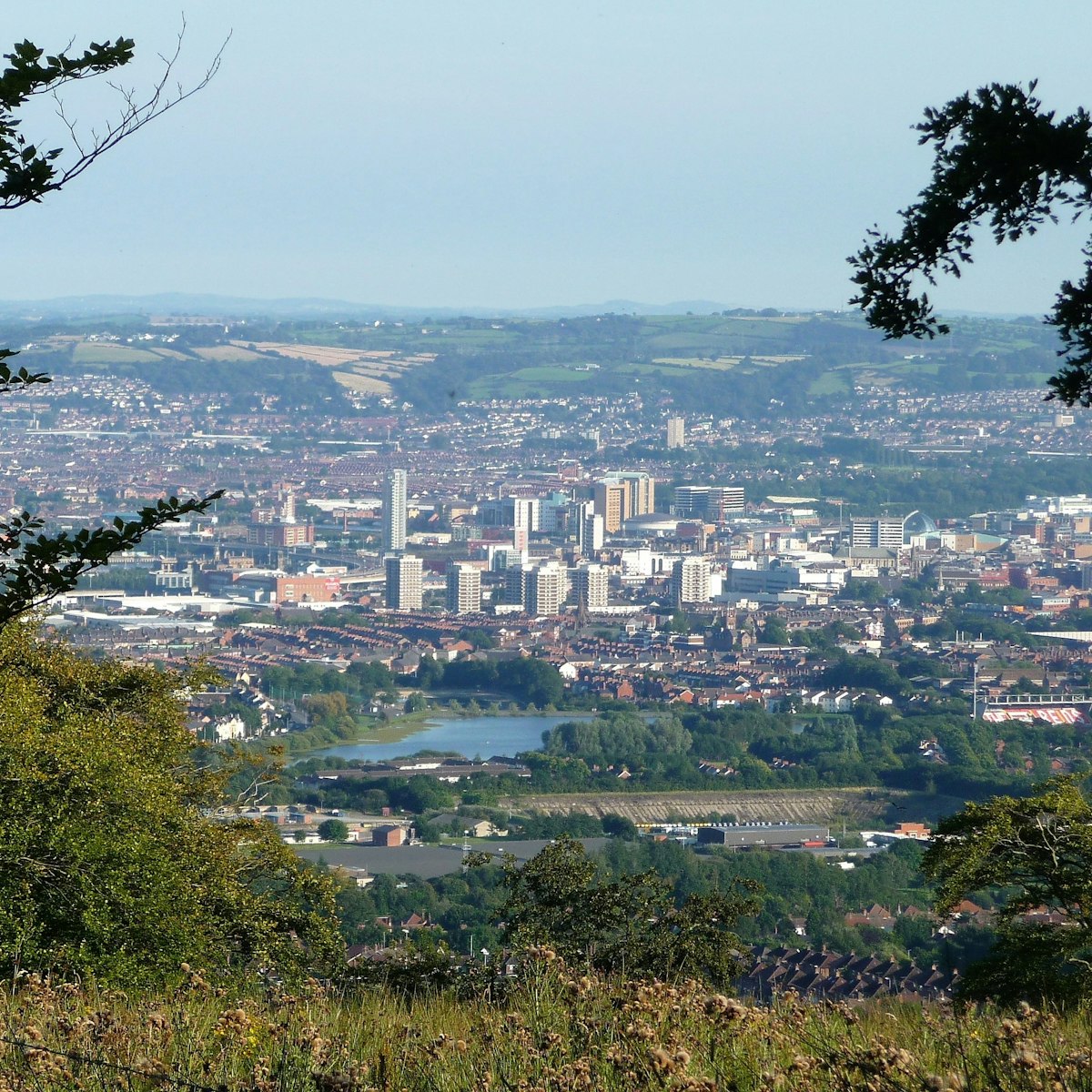
Cave Hill Country Park
The view from the summit of Cave Hill (368m) takes in the whole sprawl of the city, the docks, Belfast Lough and the Mourne Mountains – on a clear day you…
Top picks from our travel experts
10 top things to do in mythical northern ireland.

Dark Hedges
Planted by the Stuart family in the 18th century as the formal entrance to their property, these shadowy, gnarled, entwined beech trees are now among…

Glenarm Castle & Walled Garden
Glens of Antrim
Since 1750, Glenarm has been the family seat of the McDonnell family, earls of Antrim; it's currently the home of Lord and Lady Dunluce. The castle itself…

People's Gallery Murals
Derry (Londonderry)
The 12 murals that decorate the gable ends of houses along Rossville St, near Free Derry Corner, are popularly referred to as the People's Gallery. They…

Castlewellan Forest Park
County Down
Castlewellan Forest Park offers gentle walks around the castle grounds, one of the world's largest hedge mazes, the Peace Maze (entry free), and, from…

Free Derry Corner
The Free Derry Corner, where the gable end of a house painted with the famous slogan 'You are Now Entering Free Derry' still stands, is all that remains…

Old Bushmills Distillery
Bushmills is the world's oldest licensed distillery, having been given permission to produce whiskey by King James I in 1608. The whiskey is made with…

Bloody Sunday Memorial
A simple granite obelisk that commemorates the 14 civilians who were shot dead by the British Army on Bloody Sunday, 30 January 1972.

Carrickfergus Castle
The central keep of Ireland's first and finest Norman fortress was built by John de Courcy soon after his 1177 invasion of Ulster. The massive walls of…
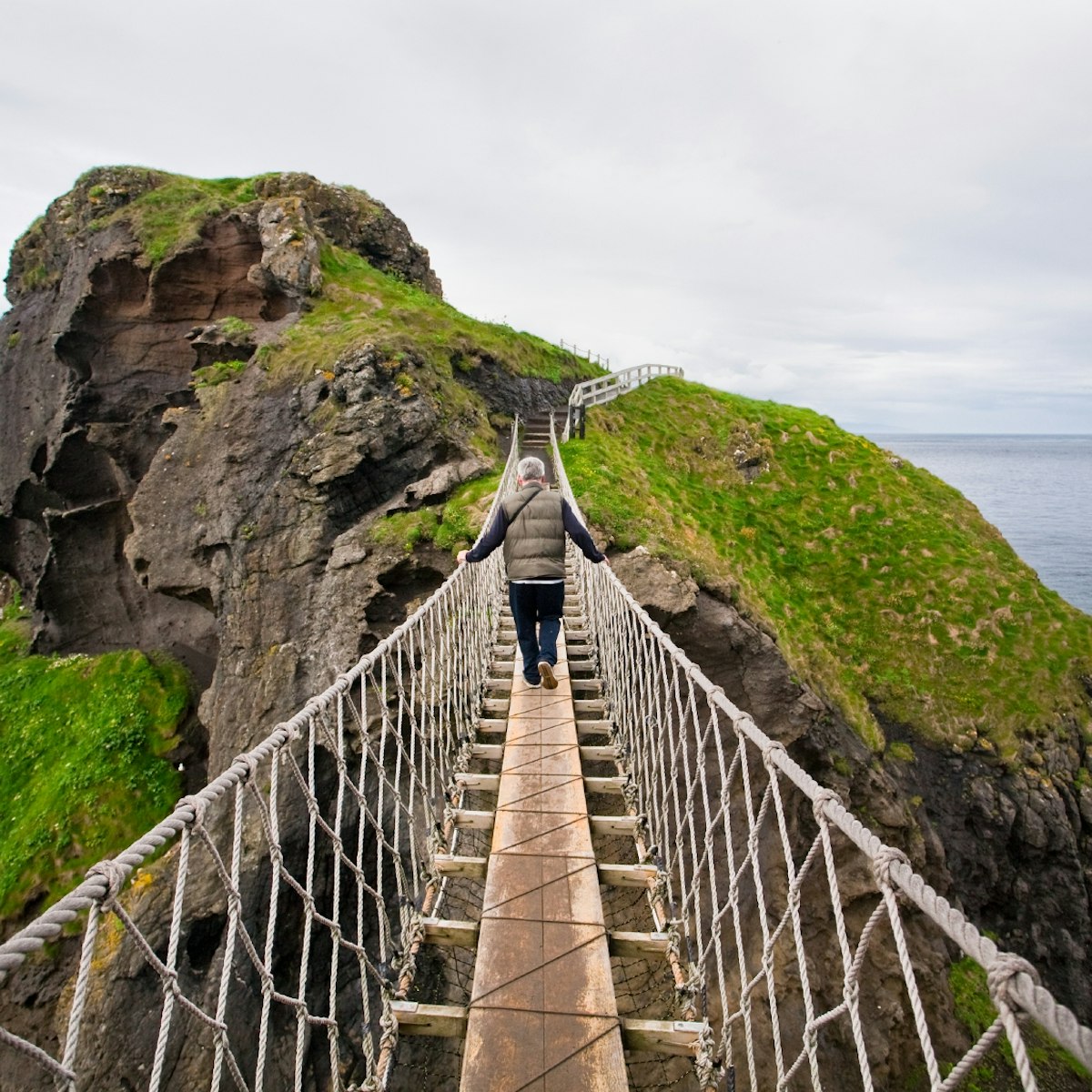
Carrick-a-Rede Rope Bridge
This 20m-long, 1m-wide bridge of wire rope spans the chasm between the sea cliffs and the little island of Carrick-a-Rede, swaying 30m above the rock…
Plan with a local
Experience the real Ireland
Let a local expert craft your dream trip.

Latest stories from Northern Ireland
Filter by interest:
- All Interests
- Adventure Travel
- Art & Culture
- Beaches, Coasts & Islands
- Food & Drink
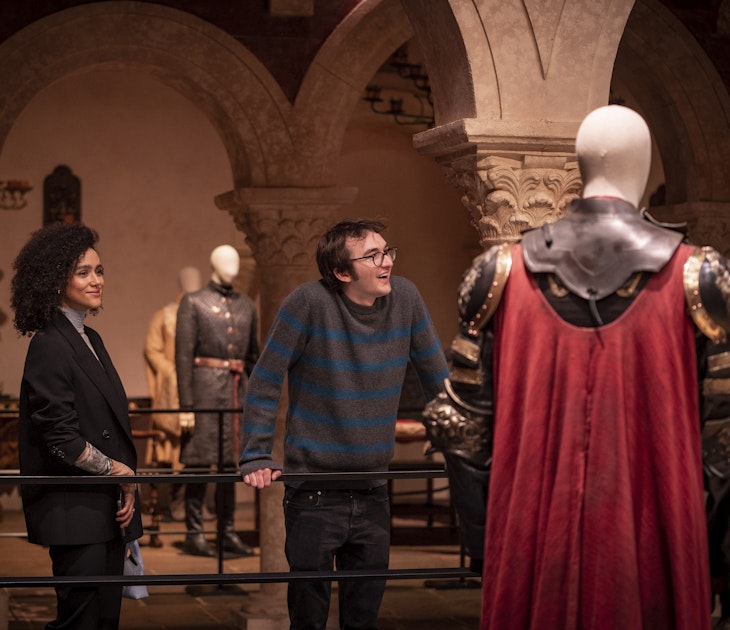
Feb 7, 2022 • 1 min read
Game of Thrones fans can continue to experience the Seven Kingdoms as a new HBO-backed Game of Thrones Studio Tour opens in Northern Ireland
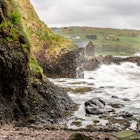
Sep 23, 2021 • 6 min read

Dec 10, 2020 • 2 min read
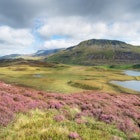
Aug 14, 2020 • 4 min read
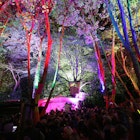
Jul 13, 2020 • 2 min read

Oct 25, 2019 • 2 min read

May 17, 2019 • 3 min read

May 16, 2019 • 6 min read

Apr 18, 2018 • 5 min read
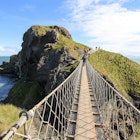
Oct 30, 2017 • 4 min read
in partnership with getyourguide
Book popular activities in Northern Ireland
Northern ireland and beyond.
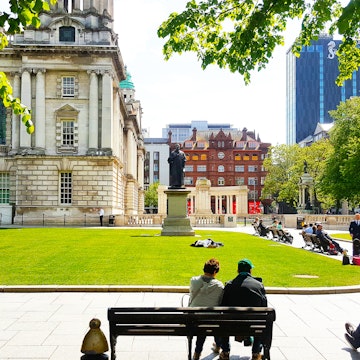

A Guide To The Ins And Outs Of Northern Ireland
By Author James March
Posted on Last updated: January 2, 2024

If you’re unfamiliar with Northern Ireland, from how it’s different to the Republic of Ireland to what there is to see and do, this guide will get you up-to-speed fast.
Home to colourful political murals, soaring mountains, gorgeous coastlines, the Titanic’s birthplace, Game of Thrones filming locations and the world’s oldest whiskey distillery – Northern Ireland’s a magnificent corner of our island.
However, it’s also a place that can cause some confusion to visitors. We will demystify everything in the guide below.
Table of Contents
Some quick need-to-knows about Northern Ireland

Photos via Shutterstock
1. It’s both part of Ireland yet separate
While Northern Ireland may be on the island of Ireland, it’s officially part of the United Kingdom (and has been that way for over a century). The border is open and easy to cross, but note that you’re entering an entirely different country when you do.
2. Differences between NI and ROI
Though the landscapes of Northern Ireland and the Republic of Ireland are largely the same from a visual point of view, when you cross the Northern Irish border, you’ll be using pound sterling rather Euro. You’ll also notice that the road signs have changed to miles instead of kilometres.
3. Counties of Northern Ireland
Antrim, Armagh, Down, Fermanagh, Derry/Londonderry and Tyrone make up the six counties of Northern Ireland and they’re all part of the historic province of Ulster. The most populous of these is Antrim (thanks mostly to Belfast), while Fermanagh is the least populous. By area, Tyrone is the largest and Armagh is the smallest.
4. Home to endless things to do
As we mentioned in the intro, there’s endless things to do in Northern Ireland ! From the majesty of the Mourne Mountains in the south to the coastal charm of Portrush in the north with the colour and history of Belfast in between, there’s tons to do here and that’s just scratching the surface.
A speedy history of Northern Ireland
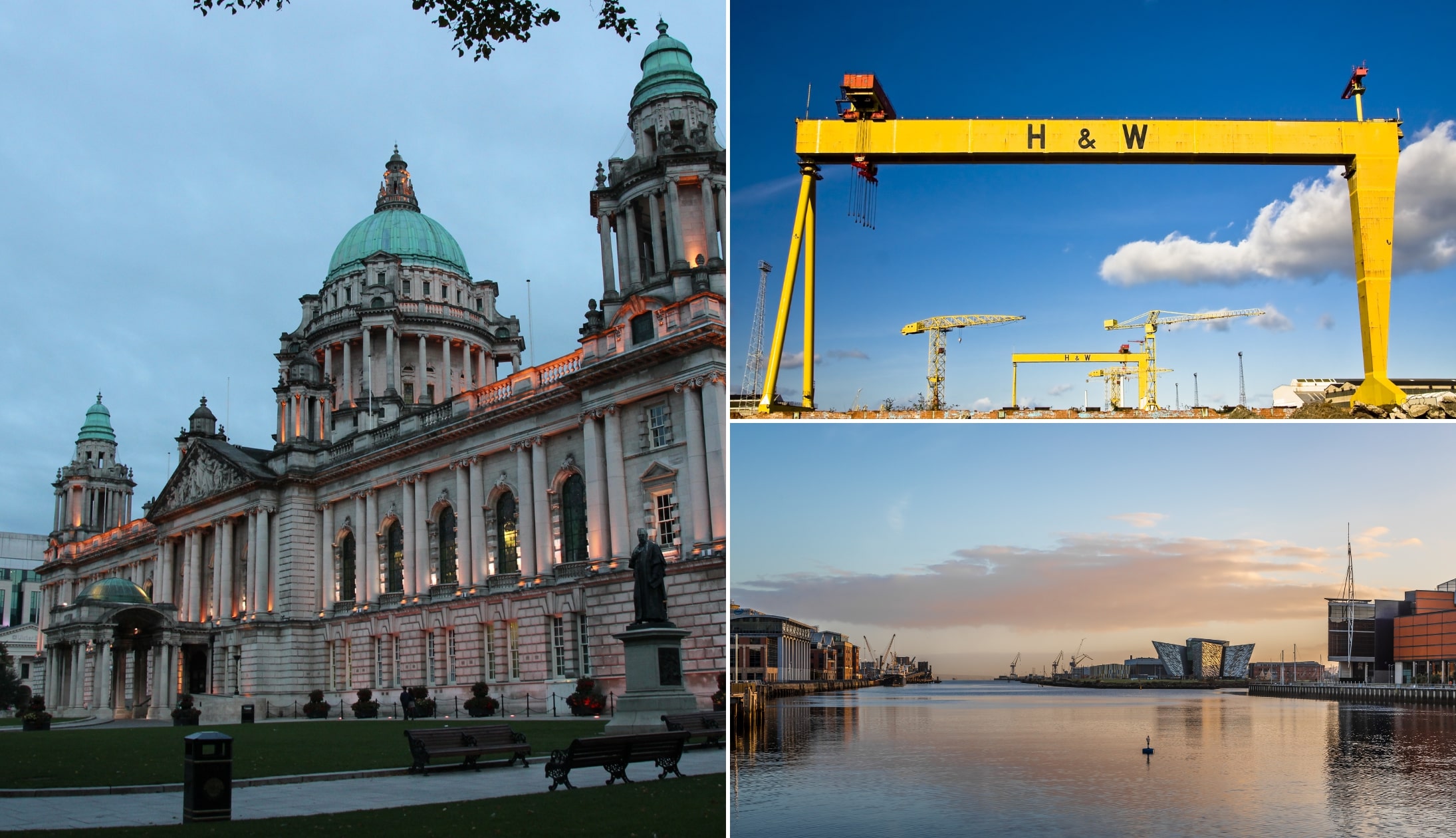
When we say speedy, we mean speedy. The paragraphs below are intended to get you up-to-speed on Northern Irelands turbulent past in 60 seconds.
For a more detailed account, see our guide to Northern Ireland vs Ireland , which delves more into everything from the partition to the Troubles.
Northern Ireland was partitioned from the rest of Ireland in the aftermath of the 1916 Easter Rising and the end of the First World War.
The Anglo-Irish Treaty of 1921 formally gave the 26 counties of Southern Ireland their independence (eventually becoming the Republic of Ireland), but the Parliament of Northern Ireland opted to stay part of the United Kingdom and it’s been that way for over 100 years.
The Troubles
The Troubles was the 30-year sectarian conflict in Northern Ireland that saw a huge amount of violence. Over 3,500 people lost their lives.
It lasted from roughly 1969 until the signing of the Good Friday Agreement in 1998.
Present day
These days Northern Ireland is a far more harmonious and welcoming place and embraces its past with honesty and reconciliation.
To see what I mean, check out one of the fascinating taxi ride tours through the Shankhill and Falls Roads in Belfast!
The 6 counties of Northern Ireland
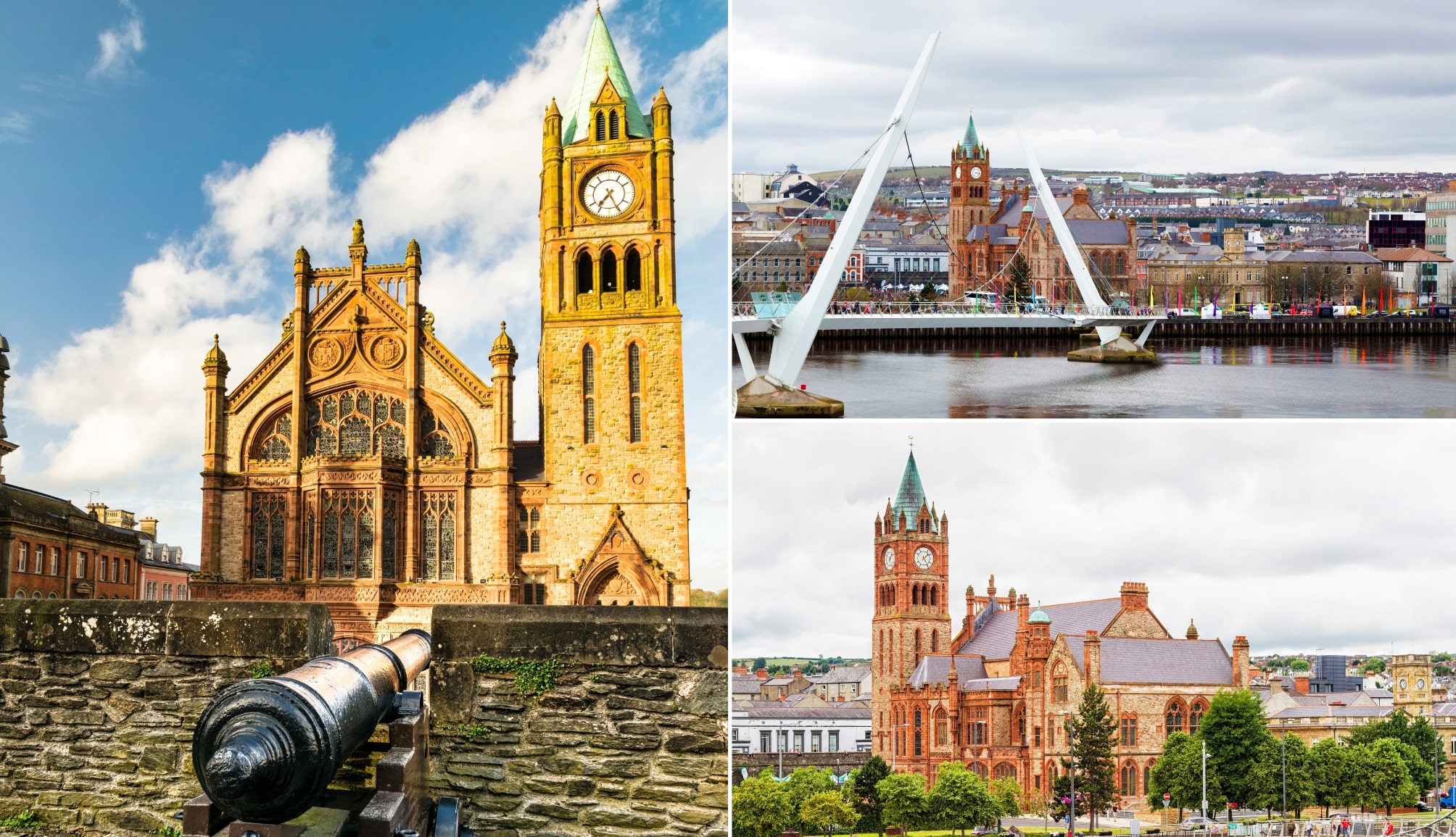
The counties of Northern Ireland are home to a wealth of history, natural beauty and endless attractions.
Below, you’ll find a quick overview of each.

The most populous of Northern Ireland’s counties, Antrim contains coastal treasures such as Portrush and the Giants Causeway alongside the unique history and cracking pubs of Belfast.
See our guide to the best things to do in Antrim for more.
Armagh

Home to one of Ireland’s greatest scenic drives (the Slieve Gullion Scenic Drive), Armagh is also full of apple orchards and has an incredible cider heritage to explore (and drink!).
See our guide to the best things to do in Armagh for more.
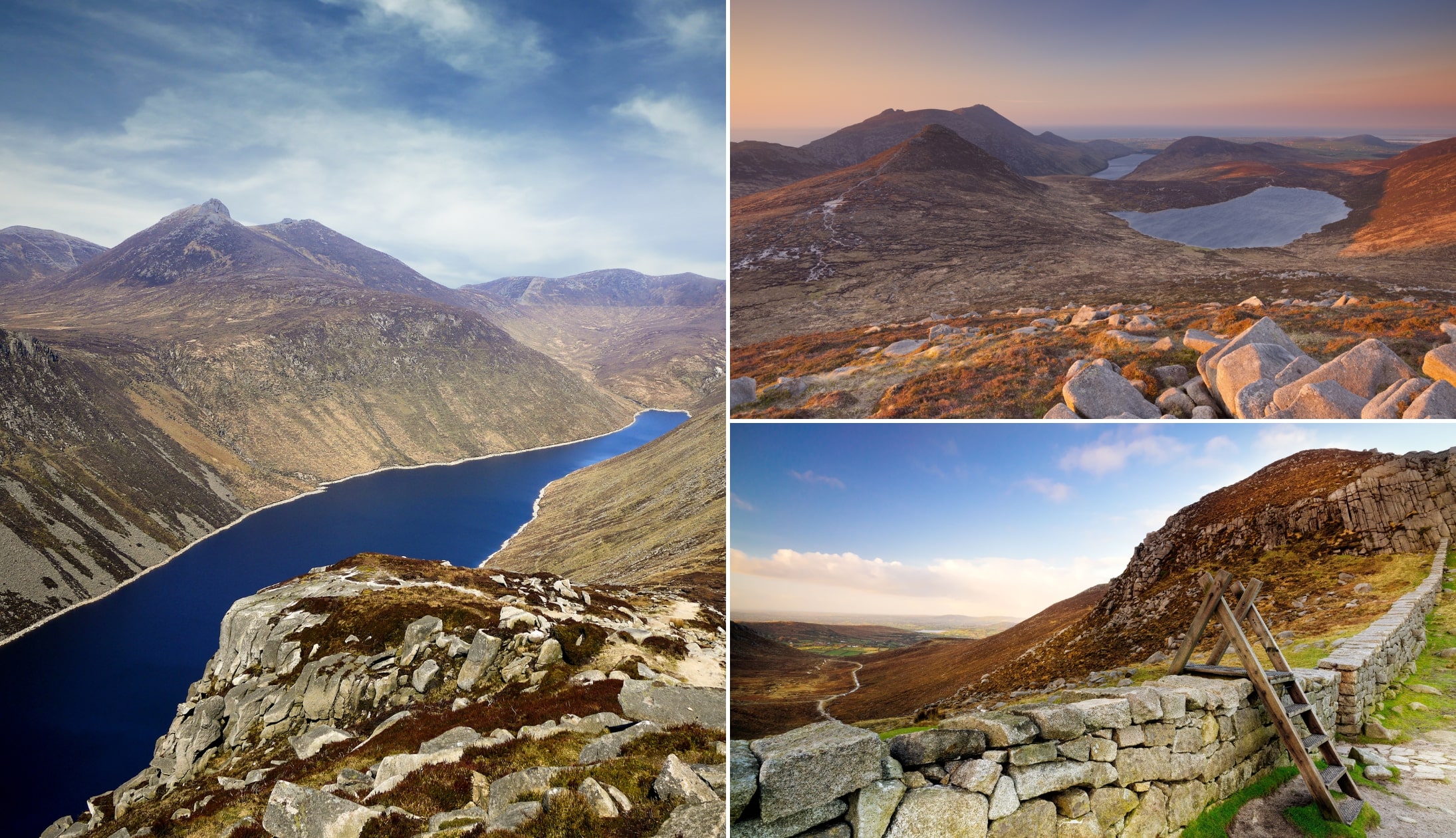
Located directly south of Antrim, no trip to County Down would be complete without a tour of the stunning Mourne Mountains . Don’t miss Tollymore Forest Park and Murlough Beach , also.
See our guide to the best things to do in Down for more.
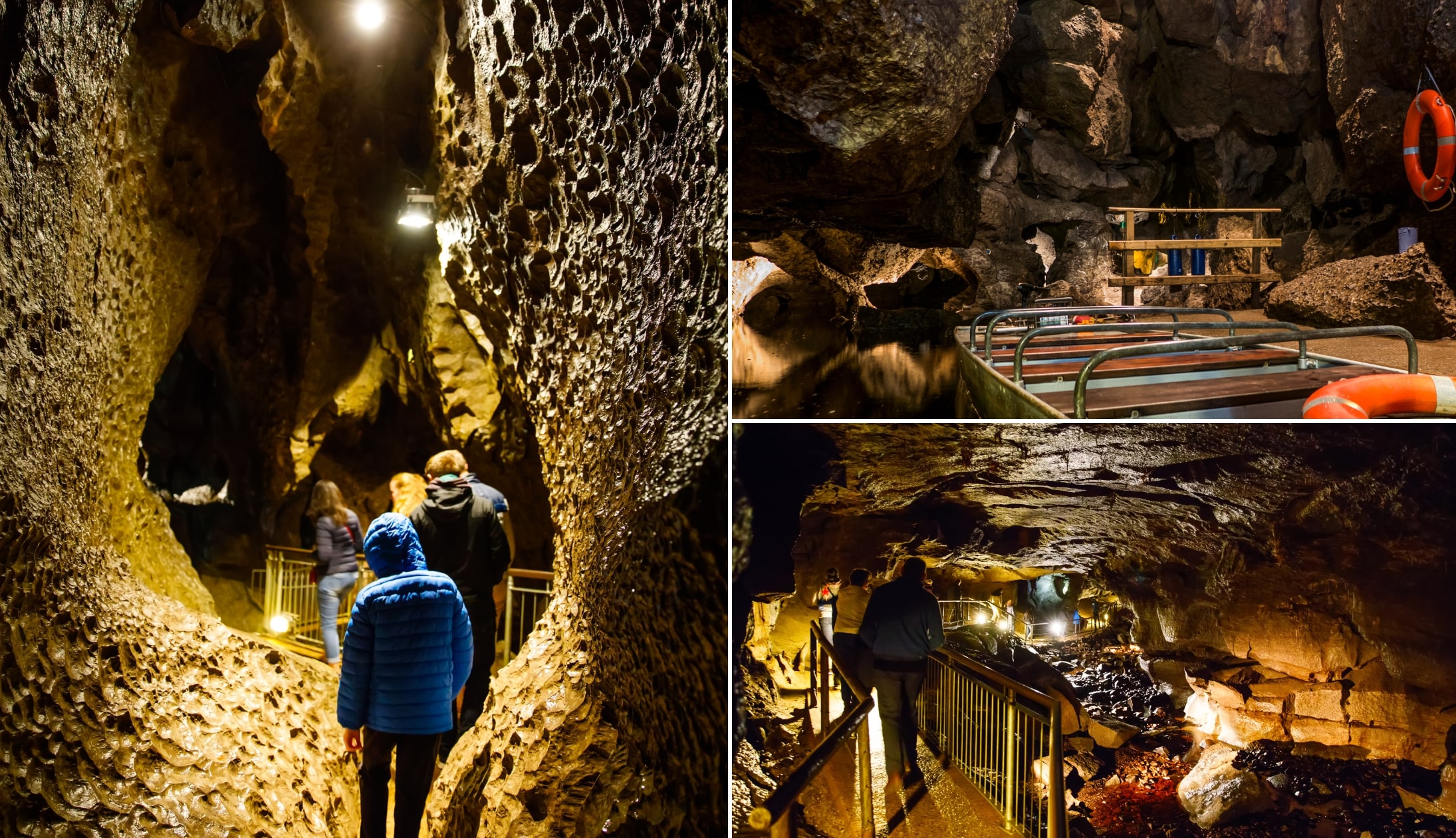
Fermanagh might be Northern Ireland’s smallest county by population, but there’s loads to see. Make sure to check out the remarkable Cuilcagh Boardwalk Trail (also known as the Stairway to Heaven!).
See our guide to the best things to do in Fermanagh for more.
Derry has great scenery but definitely kick off your time here in Derry City. Explore its medieval city walls before enjoying a few creamy pints at one of Derry’s many pubs or checking out the Derry Girls mural.
See our guide to the best things to do in Derry for more.

Photos by Emma Mc Ardle via Ireland’s Content Pool
Northern Ireland’s largest county, Tyrone, is also home to the spectacular Sperrin Mountains. Before you visit them, make sure to check out the lakes and waterfalls of Gortin Glen Forest Park.
The key differences between Northern Ireland and Ireland
There are many differences between Northern Ireland and Ireland , the most notable of which is that they are two separate countries.
Here’s a quick explainer on the ‘main’ differences as of 2023.
Northern Ireland is part of the UK’s political system and has a completely different head of state than the Republic of Ireland. It has a devolved power-sharing government at Stormont but ultimately answers to Westminster (the ROI’s government is in Dublin).
The currency in Ireland is the Euro (EUR), whereas, in Northern Ireland, they use the Pound Sterling (GBP), just like the rest of the UK.
When travelling, it’s always worth having the right currency on you, although it’s generally best just to pay by card.
EU membership
The Brexit Referendum has put the status of Northern Ireland under the microscope like never before. Although the UK is now no longer part of the EU, Northern Ireland shares an open border with the ROI which is a full EU member.
Because of this, NI is still part of the EU single market and customs union at the time of writing, but this is all subject to change.
When driving in Ireland , you’ll notice the signs are bilingual, with the Irish language and English both represented, whereas in Northern Ireland, all road signs are written in the same format that you would see in mainland Britain and are all entirely in English.
Things to do in Northern Ireland
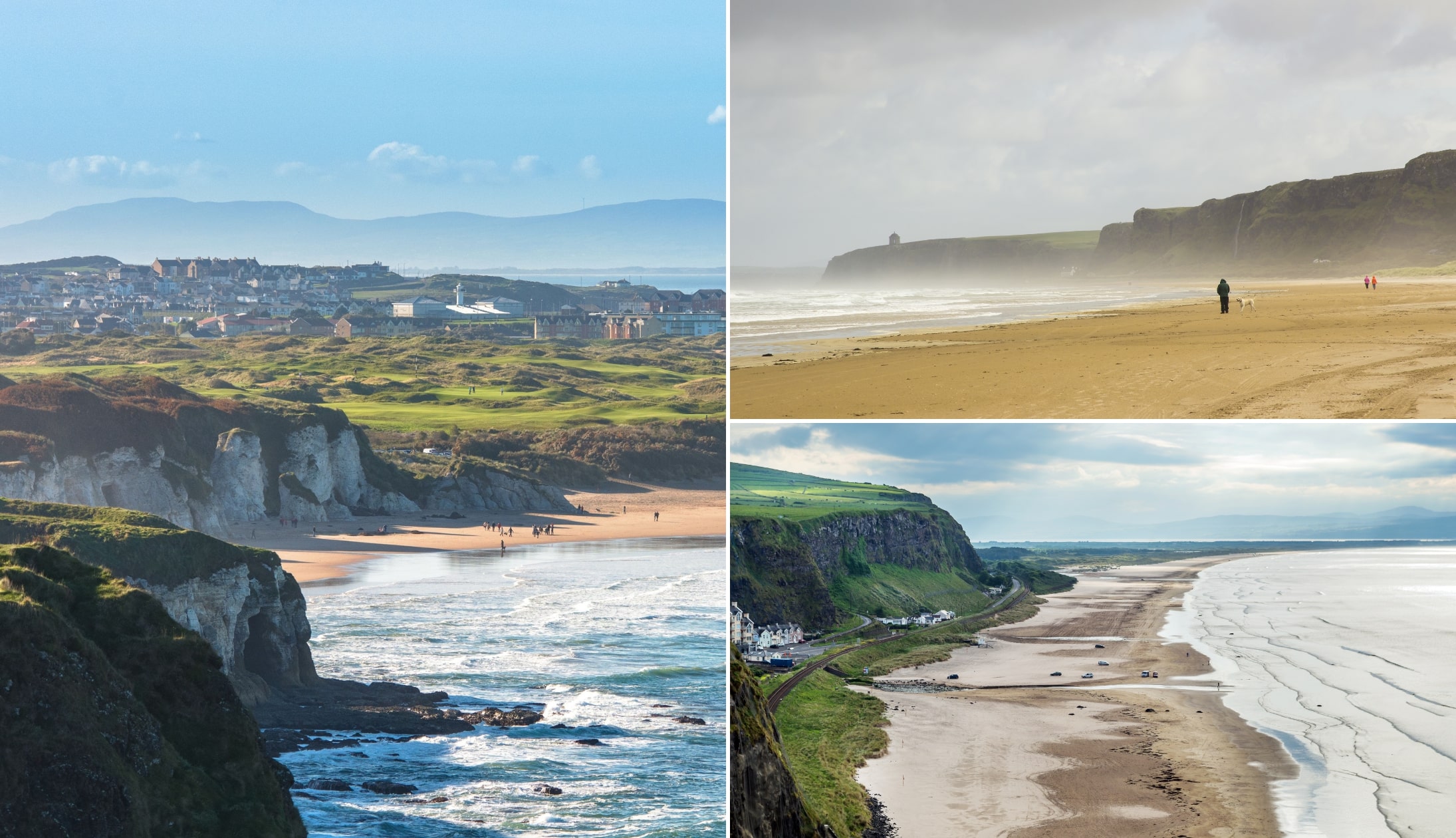
There are endless places to visit in Northern Ireland .
Below, we’ll take you through some of the main attractions.
Main attractions
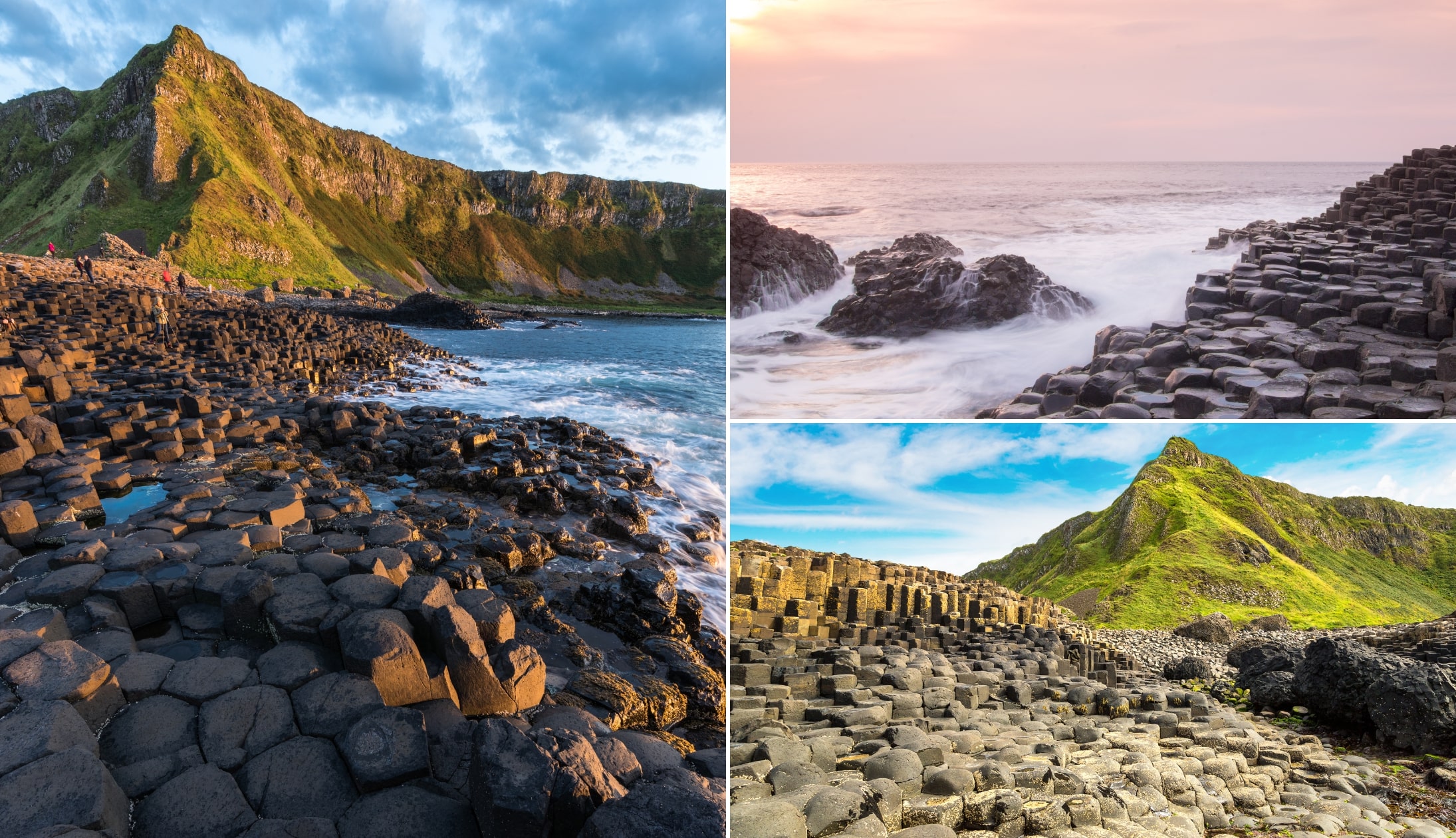
Northern Ireland is full of things to do, but if it’s your first time here then you’ll want to cross off the heavy hitters first!
The North Antrim Coast is a treasure trove of historic and scenic delights that should probably be your first port of call in Northern Ireland.
The Causeway Coastal Drive is a fine way to explore this stunning part of the world. Make sure you see the Giants Causeway UNESCO World Heritage Site and Dunluce Castle .
Further east are the beautiful Glens of Antrim . Steeped in myth and home to tons of trails, wildlife and stunning views, these glens are the North at its best.
Hikes and walks

Speaking of trails! From the majestic Mourne Mountains in the southeast to the Sperrin Mountains soaring up from the Tyrone and Derry border, Northern Ireland is a walker’s paradise.
There are walks and trails here for everyone, whether you’re an experienced hiker or an absolute beginner.
If you’ve just landed at Belfast, then you can give the nearby Cave Hill a spin or you can travel out to one of the higher peaks.
There are also loads of lovely forest trails to enjoy, so don’t miss the chance to wander amid the likes of Tollymore Forest or Gortin Glen Forest Park.
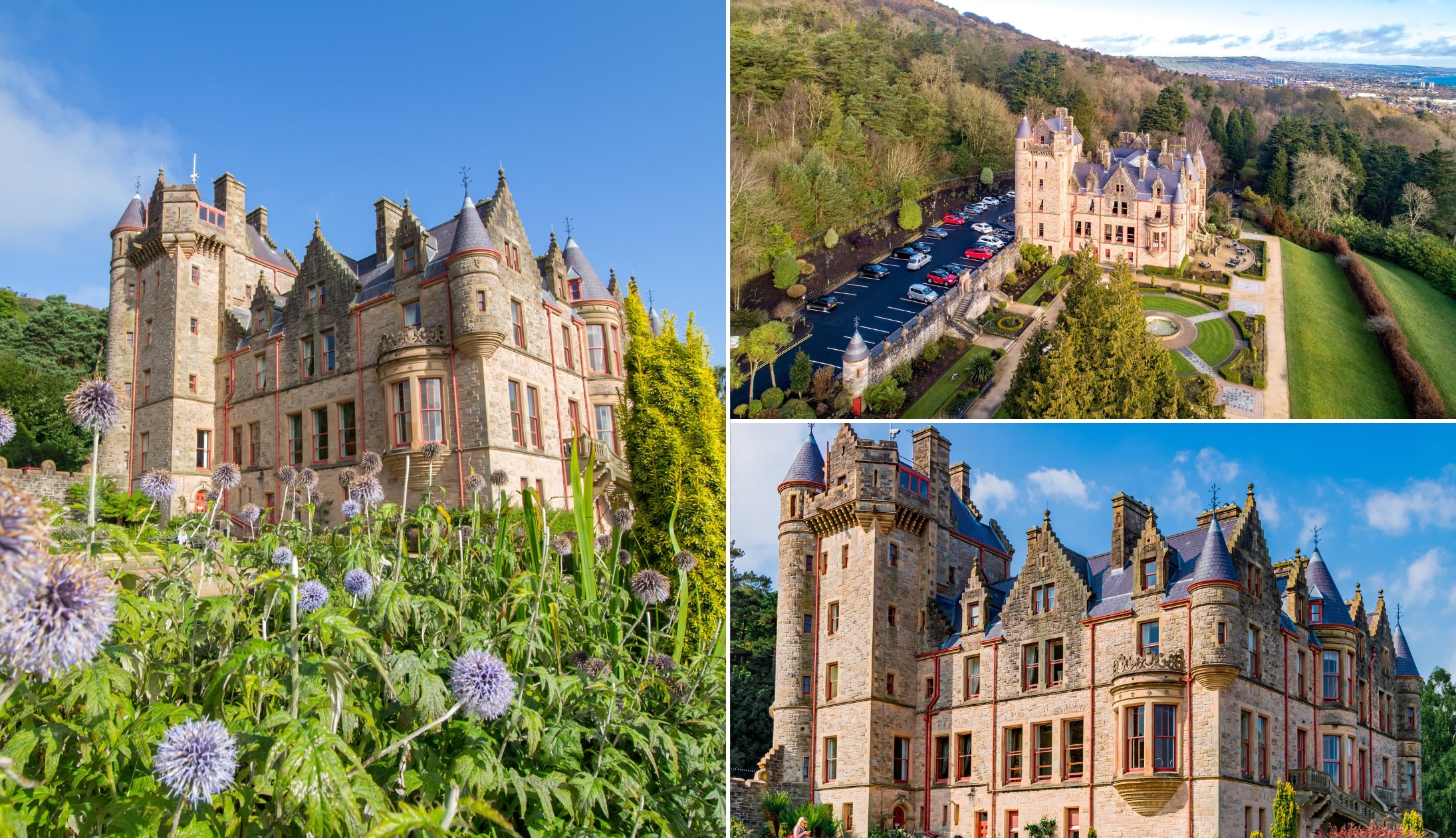
One of the most unique cities in Europe (let alone Ireland!), Belfast’s turbulent history means there are few other cities like it.
And the city now embraces that history with a passion so make sure to take one of the taxi tours to learn a whole lot more from the people who were there and see the colourful murals that dot the neighbourhoods.
Belfast’s street art tours are great, too, and make sure to drop in at Titanic Belfast, an interactive experience exploring the world’s most famous ship (built in Belfast!).
Then settle in at one of the city’s fabulous pubs for a creamy pint (White’s Tavern is a belter and one of Belfast’s oldest). See our guide on things to do in Belfast for more.
Castles galore
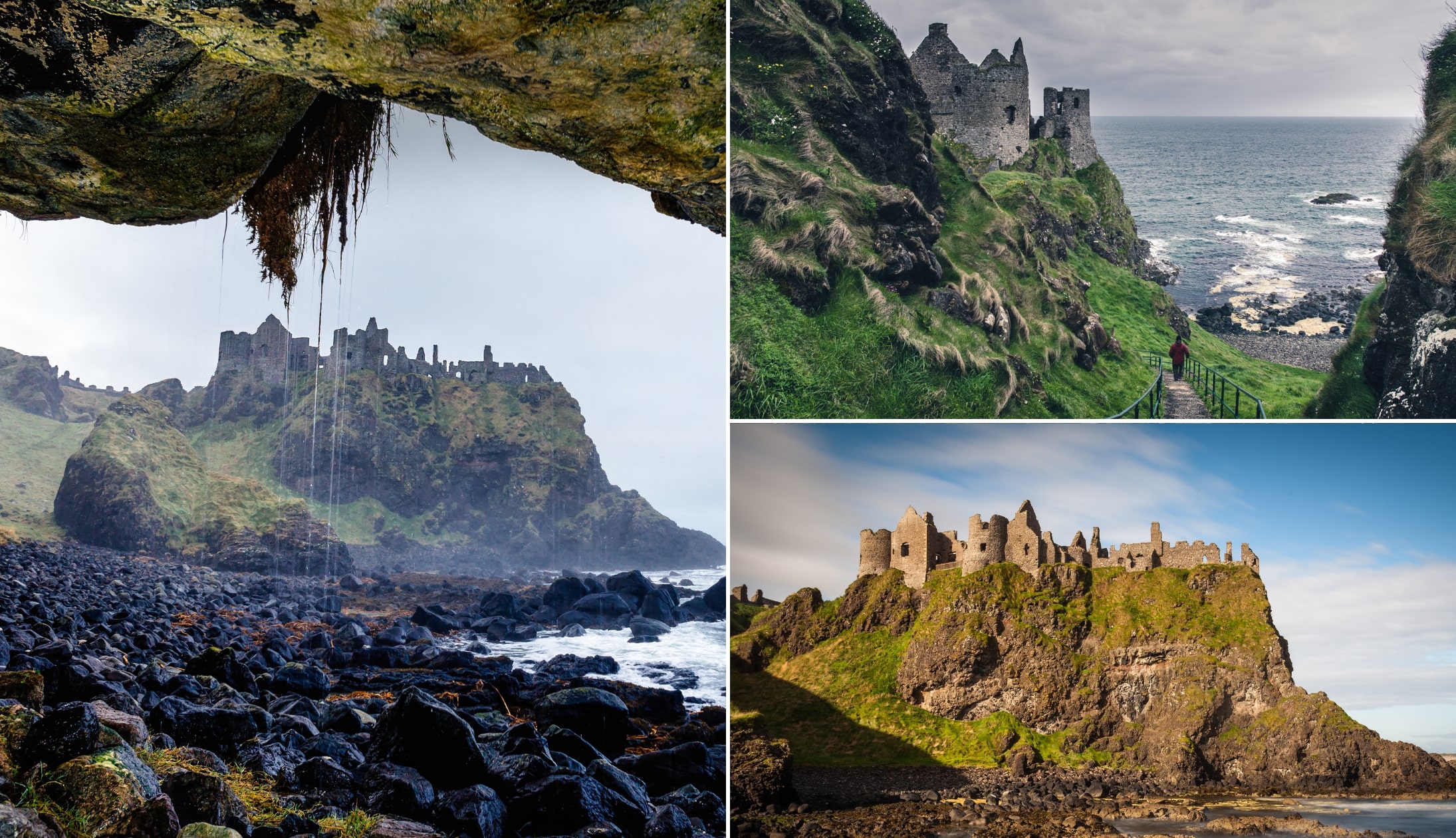
If you like towers and turrets, then there are far worse places to be! From picturesque coastal fortresses to crumbling ruins, there are some magnificent castles in Northern Ireland .
Part of the awesome north Antrim coast, Dunluce Castle is probably the most well-known of the coastal castles and is just a few minutes down the road from Portrush.
Perhaps just as evocative is the ruined remains of Dunseverick Castle (which can easily be twinned with a trip to the Giants Causeway!).
Back in Belfast, the elegant Victorian Belfast Castle sits on the lower slopes of Cave Hill and gives cracking views across the city.
Game of Thrones
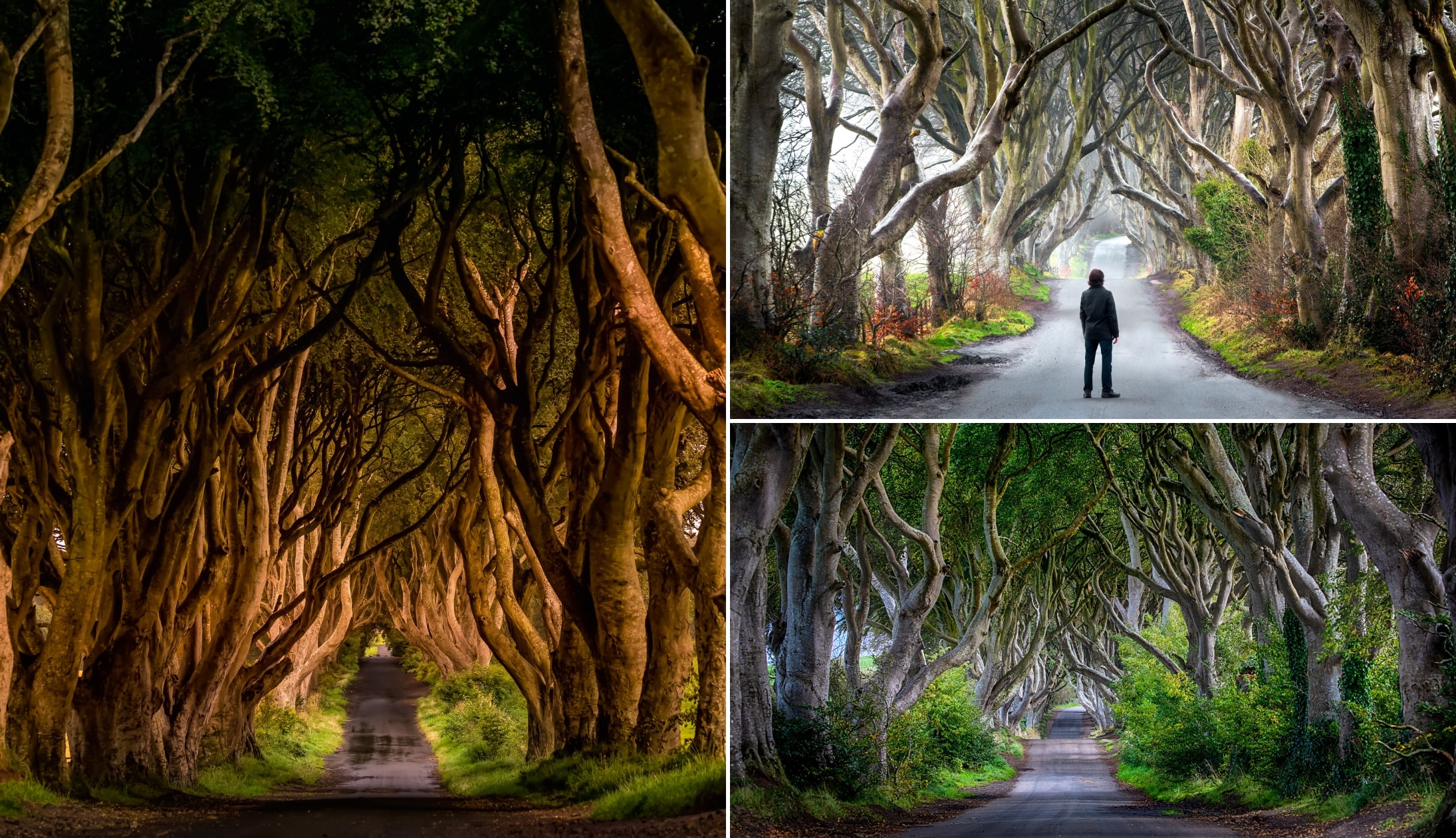
If you’re a big fan of the popular HBO series, then you’ll probably already know that there are many different Game of Thrones filming locations in Northern Ireland where the ultra-popular TV show was filmed!
The producers gave this part of the world so much attention that there are now a bunch of tours of these filming locations.
But you don’t need to go on an official tour to enjoy some of the show’s famous locations! While you probably won’t have time for them all, make sure to visit Glenariff Forest Park , the Cushendun Caves and, of course, the famous Dark Hedges .
Unique attractions
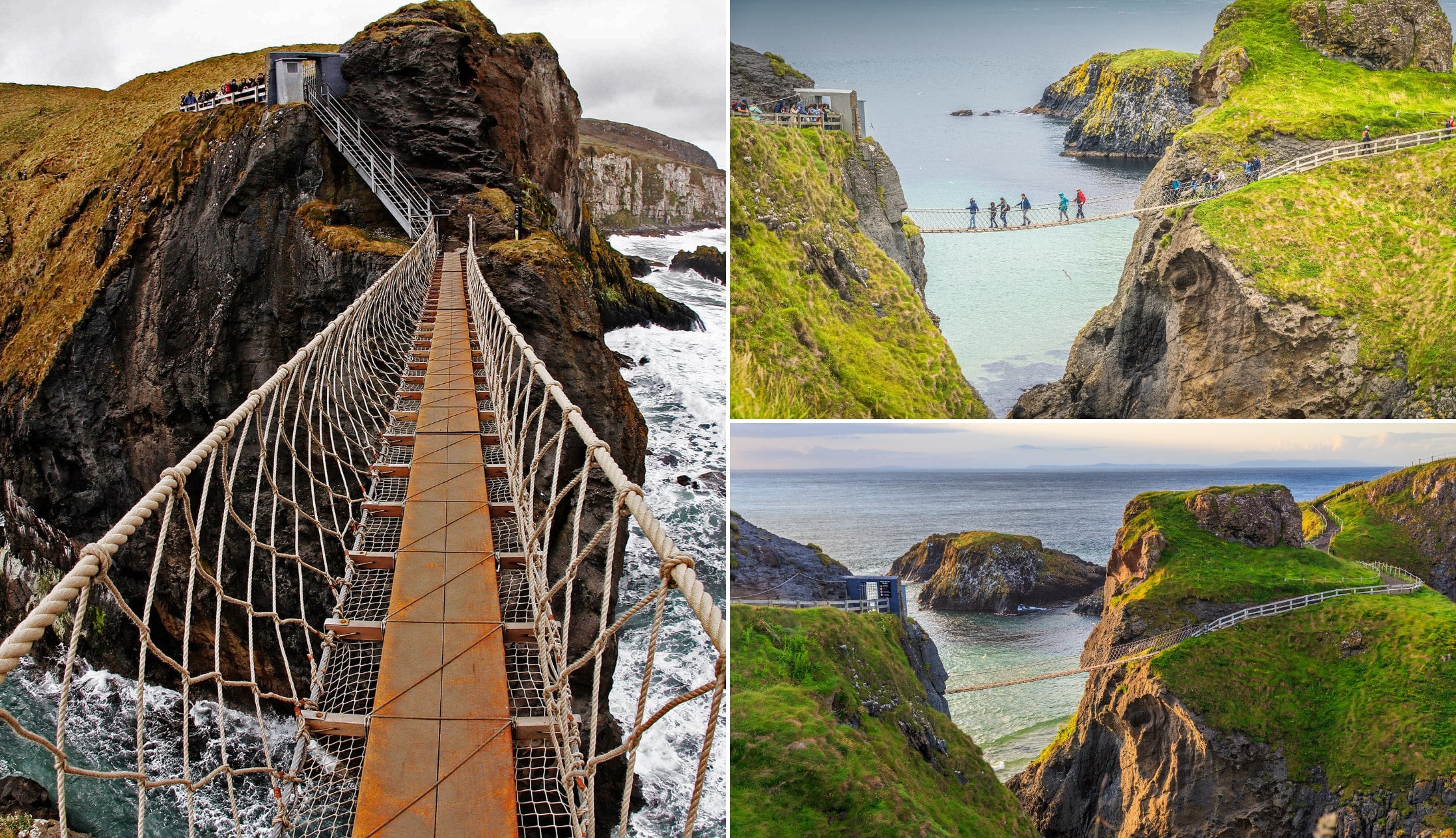
Northern Ireland’s classic attractions are great, but there are a few quirkier attractions if you want to get out of your comfort zone (always a good thing, in our experience!).
The fragile-looking Carrick-a-Rede Rope Bridge might look scary, but it’s a safe and spectacular crossing on the north Antrim coast that will guarantee some fabulous photographs and memories (and some sweaty palms!).
Along a similar vein are the remarkable Gobbins Cliff Walk and the rugged Torr Head headland.
Back in Belfast, Crumlin Road Gaol is a cracking slice of macabre history with expertly presented tours.
Fancy escaping to some pristine beaches for a ramble or two? Northern Ireland has you covered and offers some fine sands for strolling with the wind in your hair!
Close to the lively seaside town of Portrush, the vast Whiterocks Beach is a superb spot for a wander and a few views. Even better, the proximity to Portrush means you can grab a coffee-to-go and take in the sea breeze – perfect for a morning ramble.
A little further down and famous for being a Game of Thrones filming location, Portstewart Strand is a stunning spot that’s great in any season. With 6,000-year-old sand dunes and tons of curious wildlife, this is far more than your average beach!
FAQs about Northern Ireland
We’ve had a lot of questions over the years asking about everything from ‘What is there to do?’ to ‘Why did they split?’.
In the section below, we’ve popped in the most FAQs that we’ve received. If you have a question that we haven’t tackled, ask away in the comments section below.
Is Northern Ireland a part of the UK?
Yes, the six counties of Northern Ireland (Tyrone, Antrim, Down, Derry, Armagh and Fermanagh) are officially part of the United Kingdom.
Is Northern Ireland worth visiting?
Yes – there are endless things to see and do in Northern Ireland, a wealth of history to be discovered and countless charming towns and villages scattered throughout its six counties.
This site uses Akismet to reduce spam. Learn how your comment data is processed .
- Search Please fill out this field.
- Manage Your Subscription
- Give a Gift Subscription
- Newsletters
- Sweepstakes
- Destinations
Why Now Is the Time to Visit Northern Ireland — Plus Where to Eat, What Do, and Places to Stay
Nearly 25 years after the Troubles, Northern Ireland’s scars are finally beginning to heal. Here's a guide to the best of the country right now.
:max_bytes(150000):strip_icc():format(webp)/Boris-Fishman-2000-0e85f853c1404294976e26ef90c2ee43.jpg)
Northern Ireland. What do those words bring to mind? Recently, I put the question to two American friends. “The Troubles,” said the first. “The Troubles,” said the other.
They were referring to the sectarian violence between largely pro-Britain, Protestant Unionists and largely pro-Ireland, Catholic Republicans that made Belfast a deadly place from the 1960s to the 90s. Riots, bombings, clashes between paramilitary forces, and attacks by the British army killed more than 3,500 before the 1998 Good Friday Agreement brought a tentative peace.
Having been born in the former Soviet Union, I’ve always been drawn to places known more for political headlines than for tourism. There, I’ve often discovered underappreciated destinations rather than security problems. Over the past few years, I had been hearing that things were changing in Ulster. I began to wonder if Northern Ireland was another of these secret marvels, waiting for the world to notice how outdated our assumptions about it had become. So I decided to plan a trip.
Simon Watson
My first stop in Belfast was the resplendently Victorian Merchant Hotel , a former bank with a soaring lobby that now survives as the Great Room, the restaurant where my eggs and croissants vanished under the beatific gaze of golden-faced cherubs mounted on colonnades. The Merchant’s conversion, in 2006, into a world-class hotel epitomizes the transformation of Belfast’s Cathedral Quarter, the elegant, cobblestoned heart of downtown. During the Troubles — when the threat of bombing, particularly in densely populated areas, was constant — the Quarter was all but deserted, a testament to former glory. Today, it is an international destination for dining and design.
As I met artists, farmers, lords, chefs, and Troubles survivors, the Northern Irish character came to feel like a glorious paradox: the warmest and least sentimental people I’d ever met.
But this cosmopolitanism hasn’t rubbed the edge off what makes the Quarter so different. The poetry, surely, is part of it. Northern Ireland gave the world the poets Seamus Heaney, Paul Muldoon, and Louis MacNeice, and I navigated the Quarter’s uneven stones surrounded not by international retailers, as in so many other European capitals, but by doorways and railings adorned with poems stenciled onto metal panels. The unsanitized view of the Troubles presented in the ubiquitous political murals — interrogations, protest marches, the bloody aftermath of a bombing — amplifies the sense of having wandered into a tourist district from a very different kind of brochure.
As I walked around, I came to a wall emblazoned with a poem by the early-20th-century Northern Irish writer Raymond Calvert, about a gentleman driven to such insanity by his “curse” of a wife that he slashes her throat, but then, in remorse, hangs himself with a sheet. “But the strangest turn to the whole concern/Is only just beginning,” the last stanza declares. “He went to Hell but his wife got well/And she’s still alive and sinning./For the razor blade was German made/But the sheet was Belfast linen.”
A Northern Irish accent, during the Troubles, “would make people edge away from you on the London Tube,” Kieran Gilmore, a cultural organizer, told me. That sense of inferiority has given way to the unapologetic pride, leavened by gallows humor, epitomized by Calvert’s comic poem. As I met artists, farmers, lords, chefs, and Troubles survivors, the Northern Irish character came to feel like a glorious paradox: the warmest and least sentimental people I’d ever met.
Belfast is small, and visitors don’t have to walk far for the Quarter and its polish to give way to areas with less evolved views on the Troubles. I took that walk with a guide named Colm McBrierty . As a musician during the Troubles, McBrierty, who has a recognizably Catholic surname, listed himself as Colin Smith so he could play in bars in Protestant areas. In 1972, his mother missed a weekly lunch date at the Abercorn Restaurant in the city center and, by doing so, avoided a bomb that killed two and injured 130.
More Trip Ideas : 8 Most Scenic Train Rides In the U.K.
A walk through West Belfast, where you need the eyes of a native to understand that you’ve crossed from a Unionist street to a Republican one, is a bracing reminder of how intimate the sense of violence must have been. McBrierty and I stopped by a “peace wall” set up by the British government — a euphemism for a barrier between the communities. The Unionist side features quotes by the Dalai Lama and work by local artists. The Republican side has nothing but barracks-green paint. In both Unionist and Republican areas, we saw murals commemorating victims, but also murderers. (In one, thanks to a chilling visual effect, the muzzles of rifles held by two painted men in balaclavas seemed to follow us as we drove past.) But we saw just as many murals by community groups urging reconciliation.
McBrierty suggested that neither side had sole claim to the truth. “There are two cultures on this island, and both have to be respected — that’s the short of it,” he said. He was both clear-eyed and optimistic. “These disagreements won’t end for a couple of generations,” he said. “People died too recently. But we’ve come a very long way.” McBrierty and his wife, a Protestant, sent their children to an “integrated” school. “People say, ‘Are you Catholic or Protestant?’ ” McBrierty said. “I say I’m an Ulster man.”
I thought of McBrierty’s unvarnished eloquence when I had dinner at Wine & Brine , in the village of Moira, in County Armagh, a 20-minute drive southwest of Belfast. Chris McGowan, the chef, cooked in London for 20 years before deciding to return to Northern Ireland with his family in 2014. “We came back for the people,” McGowan said. “People here are so genuine. They’ve gone through so much. And it’s such an exciting food scene at the moment.”
Wine & Brine is a family affair in multiple ways: McGowan’s wife, Davina, manages the front of the house, and the restaurant draws as many couples on dates as multigenerational family outings and retirees on weekly lunch engagements, giving the place an easygoing quality that belies the ambition of the cooking. (That day, the chef was serving pig’s-head doughnuts with malt vinegar and smoked eel from Lough Neagh, just west of Moira.)
The feeling is similar at Noble , a dark-walled 26-seat restaurant with a kitchen the size of a phone booth, in Holywood, just outside Belfast. Chef Pearson Morris raids the fields and waters that make the Northern Irish larder so bountiful: I had a tartare of local beef with gribiche sauce; lamb shoulder with curry oil and mint raita; and a weightless halibut with chanterelles in a roasted-bone sauce. But it was co-owner Saul McConnell’s service — warm and unobtrusive, but with a sense of occasion — that made the evening. Noble was the recipient of the Michelin Guide’s 2021 Welcome & Service Award. Belfast has three Michelin-starred restaurants, but the best meals I had were at restaurants like Wine & Brine and Noble, which cook for the neighborhood as if it were a global stage.
McGowan and McConnell are part of a growing number of entrepreneurs creating things the country hasn’t seen before. For instance, the creative director Ryan Crown had a thriving career in Brooklyn when he came home for a visit at the start of the pandemic. He encountered a Belfast transformed, with so much demand in his field that he stayed. One of his earliest endeavors was Hill Street Hatch, a Cathedral Quarter incubator that was set up to help local entrepreneurs with marketing and branding. Its first project was the Toast Office , a grilled-cheese shop whimsically designed to resemble an old British post office. It became an Instagram sensation.
A deep feeling for the land is, perhaps, one of the few things that unites virtually every soul in the country. No trip to the countryside would be complete without a glimpse of the legendarily beautiful North Coast .
Around the corner on Donegall Street, Richie Stokes and Gareth Young run Never Never , a shop for skater fashions created on the counterintuitive premise that the city’s young people prefer to buy their hoodies from human beings instead of algorithms. On Little Donegall Street, Mike Thomson slings farmstead cheese from small Irish and Northern Irish producers at a shop whose name, Mike’s Fancy Cheese, sends up in classic Irish fashion the solemnity with which certain shops sell artisanal goods.
To experience the unassuming creativity of Belfast’s young entrepreneurs is to rediscover some of the wonder we’ve lost in places where creativity has become commodified. That they live in a city that remains affordable enough for them to lease commercial spaces downtown is essential to that ferment. So is the fact that they borrow equally from British and Irish influence. As Colm McBrierty suggested, perhaps the right answer to the question “Britain or Ireland?” is: “Both.”
Midway through my stay in town, I relocated to the Titanic Hotel Belfast , a 25-minute walk east of downtown. Against all odds, this theme hotel is a thoughtful, stylish place of pewter accents and floor-to-ceiling windows that give out onto the shipyard where the Titanic was built. The hotel is next to the Titanic Belfast museum , opened in 2012, whose striking exterior of massive shimmering panels is home to impressively curated, immersive exhibits that manage to reclaim the story from Hollywood. But perhaps my favorite thing about the Titanic Quarter was the walk it required from the action downtown, across the river Lagan, which bisects the city before emptying into the Belfast Lough and the Irish Sea. Belfast’s intimate size and mash-up of Victorian and postindustrial spaces make it a flaneur’s delight. The British side of its charm includes Black English taxis. I never took one.
Related : The Best Time to Visit Ireland
Unlike those places where the capital city siphons off the best of the provinces, Northern Ireland’s transformation has also reached deep into the countryside. In the seaside town of Bangor, a half-hour’s drive east of the city, I met the cultural organizers Alison Gordon and Kieran Gilmore. The couple returned home from London after the Good Friday Agreement because they wanted to use the arts to help create a “new, shared Northern Ireland,” Gilmore told me. As they walked me around, sea brine in our lungs, they showed me what two decades of peace had allowed them to achieve.
Gordon and Gilmore pointed out murals by artists they’ve hosted (in one, the London artist Irony had given a crab the chef’s knife), performance spaces for a music festival they organize every year, and an abandoned courthouse that they are transforming into an arts center. “Dereliction is an opportunity,” Gordon said. “It’s not the end — it’s the beginning.”
If towns like Bangor have looked to the arts, the Northern Irish countryside owes its revival to the same elements that have sustained it since the beginning of time: rain and soil. In County Armagh, southwest of Belfast, entrepreneur Susie Hamilton Stubber of Burren Balsamics welcomed me into the country kitchen of my dreams, where the air was thick with the smell of the wheaten bread, a type of soda bread, that she had baked for our lunch. Here, Stubber and her business partner, the chef Bob McDonald, infuse vinegars, chutneys, marmalades, and piccalillis with local bounty as well as imports from Britain’s erstwhile empire: beets and cocoa nibs, Irish cherry, blood orange and cardamom.
The encounter of the Irish Sea and the North Atlantic nearby, Woods said, made for some of the best waves in Europe, still a relative secret among the Continent’s surfers.
McDonald spent 45 years cooking for the officers’ mess in the British army. (British officers eat well, he said — the cuisine was fit for a Michelin-starred restaurant.) For lunch, he finished a saddle of local venison, cooked sous-vide, by searing it in butter and some of Stubber’s garden thyme, as well as a stock of Pinot Noir reduced with a vinegar infused with blackberry and thyme. This arrived alongside a miniature lamb pie, foraged blackberries, white-currant jelly, and root vegetables. “It took some time,” McDonald said. “But people are beginning to realize that what we have is as good as anywhere.”
Even peers of the realm get in on the act, as I learned when I visited Ballywalter Park , a 270-acre estate where the unpretentious Lord and Lady Dunleath welcome visitors for tours. A lunch of local cheeses and Lord Dunleath’s own beet chutney culminated in a walk through the massive walled garden, which supplies some of Belfast’s best restaurants. “These are the pearly gates,” Lady Dunleath said as we approached the entrance, pheasants clearing out of our path, adding that paradise is Pashtun for walled garden. The couple grow edible calendula, black sunflowers, pinto peaches, gooseberries, Jerusalem artichokes, and more. “This was the 18th century’s supermarket,” she said. “When the newspapers are saying what they’re saying about climate change, you must look to your doorstep. The Irish Sea is 500 meters from here. I can have lobster from June to New Year’s Eve.” Ballywalter is in the process of going entirely off the grid, she told me.
A deep feeling for the land is, perhaps, one of the few things that unites virtually every soul in the country. No trip to the countryside would be complete without a glimpse of the legendarily beautiful North Coast . I explored it with the entrepreneur Portia Woods, who has turned her love of the region into a tour called Toast the Coast . As we drove along the craggy shoreline, the roar of the surf seemed to intensify instead of becoming familiar. On the sweep of Benone Strand Beach, Woods set up a picnic of soda-bread crostini, apple butter, and kelp pesto. Under a cold sun, we listened to the thundering waves on repeat: crash, hiss, repeat. The encounter of the Irish Sea and the North Atlantic nearby, Woods said, made for some of the best waves in Europe, still a relative secret among the Continent’s surfers.
Our most moving stop was the speck-sized town of Portstewart, where Woods introduced me to Stevie McCarry, who runs Native Seafood & Scran with his wife, Rebekah. Like so many in Northern Ireland, McCarry grew up without pride in the natural riches around him. “Back in the day, if you came to school with lobster in your lunch, another kid would give you their milk because they felt bad for you,” he said. As a young man, he moved to Thailand. “We all went to the far side.”
But at some point, McCarry started to understand what he’d left behind. He and Rebekah opened Native out of a frustration that Northern Ireland’s best catch was going to France rather than staying at home. Their offerings are so fresh that the shop has no microwave or freezer. As an experiment, I ordered the plainest-seeming thing on the menu: a roasted-salmon salad. Decorated by nothing save lightly dressed greens, the salmon was elementally, profoundly flavorful.
“We’re all starting to understand what we have,” McCarry said.
A Northern Irish Journey
Where to stay.
Culloden Estate & Spa : Located just outside the capital, this former bishop’s palace has views of Belfast Lough and an unmissable afternoon tea.
Galgorm : This resort, in the town of Ballymena, is home to a spa “village” with so many steam rooms, waterfalls, plunge pools, and hot tubs that it’s almost impossible not to get blissfully lost.
The Merchant Hotel : A prime example of Belfast’s Victorian splendor enlivened by a bit of contemporary style. Don’t skip its cocktail bar.
Titanic Hotel Belfast : Located by the Titanic museum and the shipyard where the ocean liner was built, this elegant hotel evokes the high style of the Gilded Age.
Where to Eat and Drink
The Duke of York: The flagship of the pubs owned by entrepreneur Willie Jack; he’ll give you a proper pint and a monologue for the ages. Stop by his whiskey shop, the Friend at Hand, around the corner.
Home : Situated on an ordinary Belfast block, Home is one of those unicorn restaurants of wild imagination and flawless technique that still manages to feel like your neighborhood bistro.
Noble: Electric cooking from a tiny kitchen and unfussy, festive service are the highlights of this low-lit restaurant in Holywood, just outside Belfast.
Wine & Brine : Chris McGowan cooked in London for 20 years before returning home to Belfast to take advantage of the glory of his native fields and waters, which can include smoked eel or turbot caught that morning.
Ballywalter Park: When they’re not lending their 270-acre estate out to film crews, Lord and Lady Dunleath host tours of their property, with its endless fields, 18th-century walled garden, and epic solarium.
Spectrum Cars: This chauffeur company offers a tour of Belfast’s Troubles that’s anything but canned, especially if Colm McBrierty is your guide.
Titanic Belfast: This immersive, informative museum in a gorgeous Modernist building provides a clear-eyed look at the famous ship’s tragic history.
Toast the Coast: The entrepreneur Portia Woods has turned her love of the North Coast into an exhilarating tour of spectacular landscapes and innovative projects by local proprietors.
Where to Shop
Armagh Cider: The only blossom-to-bottle cider operation in Northern Ireland. A three-course lunch is served to those who book a tasting of ciders, vinegars, and tonics.
Bound: A home-décor store in Belfast that showcases boundary-breaking Northern Irish and European designers.
The Bureau Belfast: Cool menswear from such indie brands as Engineered Garments and Arpenteur.
Burren Balsamics: In County Armagh, the entrepreneur Susie Hamilton Stubber and former military chef Bob McDonald infuse high-end Italian vinegars with Bramley apples, cocoa nibs, and other surprises. See if you can score a peek inside Stubber’s country kitchen.
Never Never: Undeterred by a recent fire, this skater-style shop is selling its wares online while it prepares to reopen.
How to Book
Siobhan Byrne Learat , a member of T+L’s A-List of top travel advisors, can orchestrate a journey across Northern Ireland that encompasses five-star hotels, walking tours of Belfast, and visits to the artisanal producers who are transforming the country’s culinary scene. Email: siobhan@adamsandbutler.com.
A version of this story first appeared in the December 2022/January 2023 issue of Travel + Leisure under the headline "Come One, Come All ."
Related Articles
Regions of Ireland & Britain
- East Ireland
- South East Ireland
- West Ireland
- South West Ireland
- North West Ireland
- Northern Ireland
- Britain and Ireland Cities
Our Travel Stories
- The Beara Peninsula
- Kenmare Bay
- The English Lake District
- More Travel Stories
Popular for Visitors
- Top Attractions of Britain & Ireland
- Hidden Gems
- Castles & Ancient Settlements
- Irish Islands & Islets
- Planning for your Group
- Solo Travel in Ireland
- Backpacking in Ireland
Your Interests
- Breweries & Distilleries
- Irish Culture
- Irish Film Locations
- Ireland Then and Now
- Travel Photography in Ireland
- Outdoors & Activities
- City Tours of Britain & Ireland
- Golf in Ireland
- Golf in Britain & Ireland
- Walking & Hiking
- Britain & Ireland's Places of Worship
- Britain & Ireland's Historic Locations
- Britain & Ireland's Castles, Palaces & Stately Homes
- Britain & Ireland's Historic Military Sites
Useful Information
- Advice for Visitors
- Laws, Customs & Staying Safe
- Working & Volunteering in Ireland
- Getting Married in Ireland
- Ireland in 7-Day
My Ireland Tour
- Our Tour Packages
- Arrange a Private Tour
News & What's On
- News & Events

Northern Ireland Travel Guide
- Introduction
- Attractions
- Where to Stay
- Food & Drink
Northern Ireland Visitor's Guide Visitor's Guide
In peace, Northern Ireland has staked its rightful claim as one of the most beautiful, memorable and cultural regions to be found anywhere on the island of Ireland. Nowhere is Ireland's recent history more strongly felt than in the North, and any visit would be incomplete without uncovering this rich and vibrant culture.
- Northern Ireland Attractions
- Eating & Drinking
- Historical Sites
- Art & Culture
- Hiking & Biking
- Book a Vacation
Top Attractions in Northern Ireland
Natural wonders and centuries of innovation and enterprise mean today's visitors to Northern Ireland are greeted with some of the island of Ireland's most unique attractions. Until recently, years of political unrest and uncertainty saw visitor numbers to Northern Ireland fail to grow at the same rate as the rest of Ireland.
After years of peace and relative calm, the people of Northern Ireland are proud to be given the chance to show off their top attractions. Below we have created a list of the top attractions in Northern Ireland, both man-made and natural.
For more ideas on things to do in Ireland, take a look at this great website: Ireland Before You Die .
Check out Belfast hop on hop off bus tours.
1 Belfast City
Since peace returned to Belfast in the late 1990s, Northern Ireland's capital has undergone an astonishing transformation. Once tied in with sectarian violence and, perhaps cruelly, lumped in with Bosnia, Beiruit and Baghdad on the list of places for globe-trotting tourists to avoid, the city is now a modern, thriving and cosmopolitan hub of hotels, restaurants and family-friendly attractions.
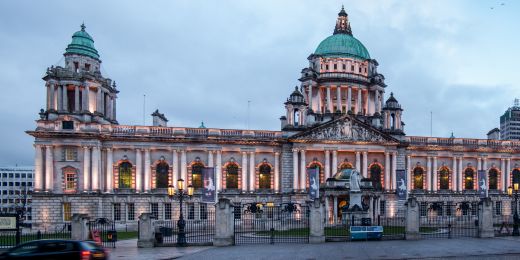
This transformation is made all the more evident in cultural representations of the region, which have at last moved beyond the all-too-predictable film and TV depictions of The Troubles with which the city become all but synonymous.
Just as Northern Ireland has garnered attention as the eye-catching backdrop to Game of Thrones, creating a sub-industry of its own comparable to "Tolkien Tourism", Belfast has gained added prominence as the location of the hit BBC drama series The Fall starring Gillian Anderson (The X Files, Hannibal) and Jamie Dornan (50 Shades of Grey).
For the best way to see Belfast City on foot, check out our Belfast City Walking Tour page .
Insider Tips
Right across the street, outside City Hall, you will find the meeting point for a free walking tour of the city which departs every day at 11:00 and 14:30.
2 The Giant's Causeway
According to Gaelic mythology, the causeway was built by the giant Fionn mac Cumhaill (Finn MacCool) so that he could reach Scotland and fight with his Scottish rival, Benandonner. As with all great rivalries, the outcome varies depending on whose version is being recounted.
More scientific data suggests that the spectacular formation is a result of an ancient volcanic fissure eruption around 50 to 60 million years ago. The 40,000 interlocking basalt columns were formed through the cooling and contracting of the resultant lava.
In 1693, the causeway began to enjoy international acclaim; Sir Richard Bulkeley, of Trinity College, mentioned the phenomenon in a paper presented to the Royal Society of London. In 1739, Susanna Drury really kick-started the global love affair with Giant's Causeway through her watercolour paintings, which were later engraved in 1743.
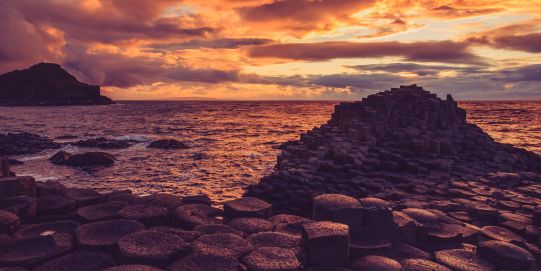
One legendary status which is not disputed, though, is the Causeway's immense pulling power as a tourist destination, with 750,000 visitors making the trip annually. Here, tourists can enjoy not only the geological feature itself, but also the modern and impressive Giant's Causeway Visitor Experience .
The walk to the Causeway itself can be a bit strenuous for those with lower mobility. Some stretches are steep and rocky. Sturdy shoes and some drinking water are recommended.
3 Derry / Londonderry
Although Derry's recent transformation is perhaps less dramatic than that of Belfast, visitors who come to Derry expecting a city still darkened by the long shadows of The Troubles will almost certainly be pleasantly surprised. In anticipation of the city's status as UK City of Culture 2013, Derry received considerable investment and underwent a rejuvenating makeover.
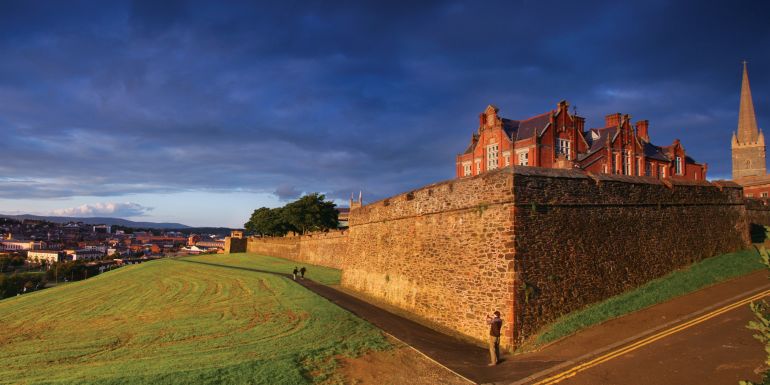
Visitors and locals alike can look to the Peace Bridge, Ebrington Square, the redeveloped waterfront and the Guildhall area as examples of a city which has shaken off its outdated stereotype, under whose weight Derry had unfairly served as a metaphor for Ulster's violent past. In the city which greets tourists so warmly today, visitors will find plenty of enjoyable diversions.
Visitors who wish to gain the fullest appreciation of this side of Derry should make time for Free Derry Corner , the Bloody Sunday Memorial , the People's Gallery Murals and the Museum of Free Derry . View the Visit Derry website for more information .
If you'd like to to see how best to explore Derry City on foot, take a look at our Derry City Walking Tour page .
If you're visiting in October, be sure to stick around for Halloween which is a major event in the city and culminates in the largest street party in Europe. Just remember to wrap up warm!
4 Titanic Belfast
The angular edifice which houses The Titanic Experience is so evocative of the transformation which Belfast has undergone in recent years that it has become almost as iconic as the ill-fated ship to whose short history this attraction is dedicated.
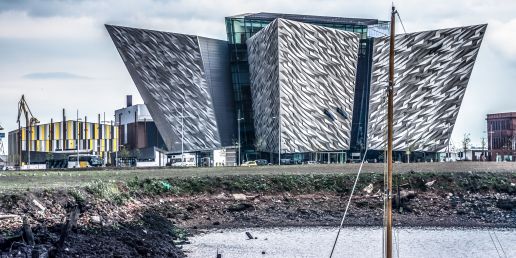
An extensive multimedia tribute to the world's most famous ocean liner, The Titanic Experience is located at the top of the slipway from which the ship made its first and only descent into the Belfast Lough and the waters of the Irish Sea beyond. Opened in 2012 for the centenary of the ship's launch and tragic demise, the museum has rapidly become Ulster's most visited tourist destination, outstripping even The Giant's Causeway .
Cleverly put together, the attraction encapsulates more than simply the scale of the ship, more even than the scale of the disaster which befell it; drawing on all the sights, sounds and smells of the age, the museum recreates all facets of this most fascinating period of history, bringing to life the experiences not only of the passengers but also of the ship workers who realized this vision of early twentieth century engineering.
While you are encouraged to take the tour of Titanic Belfast at your own pace, it is common for people to feel a bit rushed by the end. THis is mainly due to the fascinating opening section of the tour which outlines the history of Belfast City during the time the Titanic was built. Some of the best bits, like the "Shipyard Ride" and the light shows, are located towards the end of the tour.
Practical information
Tours typically last between 1.5 and 2.5 hours. You can access the Titanic Belfast in its entirety via wheelchair, with ramps and elevators located throughout. Assistance dogs are welcome and staff members are available to aid anyone with any special assistance.
Opening Hours
Titanic Belfast is open daily from 9.00am to 6pm , with final entry at 4.20pm
Admission fee
Titanic Belfast ticket prices range from £24.95 for adults and £11 for children .
5 Murals of Belfast
Although their history spans over a century, and although they began as a unionist motif, it was in the early 1980s that Belfast's iconic murals would gain the prominence that now draws tourists, when Republican depictions of the infamous hunger strike of Bobby Sands and his follow prisoners began to spread across Republican districts of the city.

For two decades, murals on both sides of the city voiced the deep divisions between communities whose differences seemed insurmountable. On the Unionist side, the imagery was chiefly militaristic, with slogans like "No Surrender" a near-constant refrain. In Republican communities, depictions drew on a more diverse palette of cultural and historical symbolism, but their message was no less clear and no less divisive.
To get the most out of a trip to Belfast and its rich history, a local tour guide is recommended.
6 Guildhall
Lording it over an open expanse of fountains and marbled stone, Guildhall rises to majestic heights to take its place on the Derry skyline. A £10m renovation in 2013 has brought the very best out of what was already a magnificent structure of stone and stained-glass. As well serving an important civic function for the city (it was the seat of the historic Bloody Sunday Inquiry headed by Lord Saville from 2000 to 2005), Guildhall has become a nexus for Derry tourism and a focal point for most visits here. View the Visit Derry website for more information .
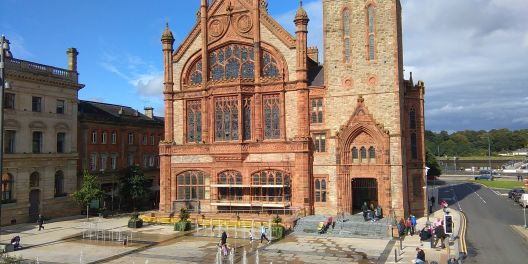
If you're are heading to Derry specifically to see the Guildhall, then be sure to call ahead and check what times are best to visit. Some days, areas of the building are closed for private functions.
7 Walled City
Ireland's first attempt at town planning, modelled in 1545 on the French town of Vitry-le-François. Visit derrywalls.com for further information. Those interested in architecture should allow time to visit St Columb's Cathedral, situated within the city walls.

A good local tour guide is recommended to get the most of this historic city and its iconic fortifications.
8 Carrick-a-Rede Rope Bridge
A handy stop-off point between The Giant's Causeway and Ballycastle, the Carrick-a-Rede rope bridge is a dizzying experience to be enjoyed or studiously avoided, depending on your head for heights. Looking like something from an Indiana Jones movie, the rope bridge conveys locals and tourists alike across the 20-metre chasm between the sea cliffs and the island of Carrick-a-Rede.
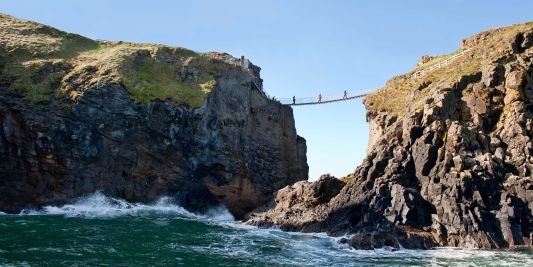
The bridge which draws visitors today is actually a stronger and safer version of the original which was put up every spring by fishermen whose nets, cast from the island's northern cliffs, would intercept migrating salmon. Today, there is a small visitor centre, a café and a car park.
The bridge itself is very sturdy and only bounces if people jump while crossing it. Take a deep breath and go for it!
9 Glenariff Waterfall Walk
Glenariff Waterfall Walk is one of a series of walks in the Glenariff Forest Park, County Antrim. The forest is laid out with pathways and steps for people to explore. It might take up to 2 hours walking to reach the payoff, the waterfall, but it is well worth the wait. The walk which leads to the waterfall is a little strenuous and is not advisable for everyone. The steps are steeper and can become slippery on approach.
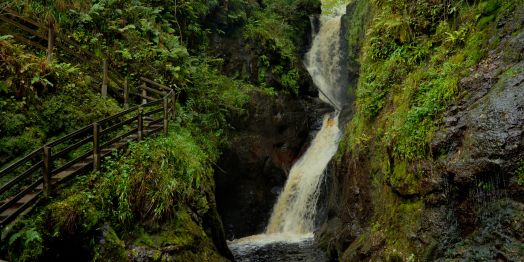
All trails are well-signposted and have clearly defined pathways. Bring sturdy shoes and a sense of adventure.
10 Ballymacdermott Court Tomb
Ballymacdermott Court Tomb, located on Ballymacdermott Mountain in County Armagh, is a megalith portal tomb. It dates from between 4000 and 2500 B.C. The tomb was excavated twice, in 1816 and 1962. The first excavation unearthed pulverised human bones in an urn while the second discovered human cremations. During the second excavation, archaeologists found that some of the stones in the tomb had been recently disturbed, locals informed them that this was caused by an American tank during World War II.
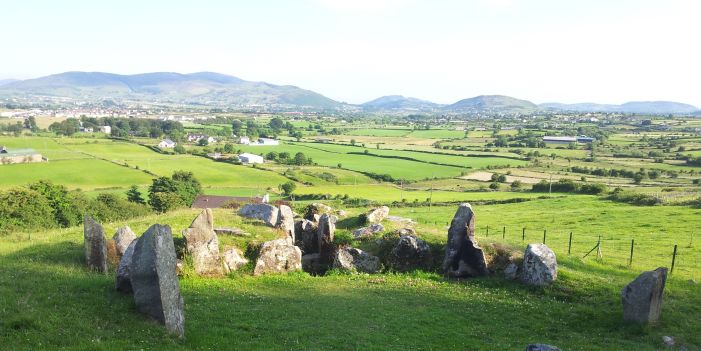
A beautiful spot but fairly exposed so be sure to wrap up on a blustery day.
11 Stairway to Heaven
The Stairway to Heaven, officially known as the Cuilcagh Mountain Trail, is a 4 and a half-mile walkway through bogland in County Fermanagh. The walkway was constructed to protect the rare blanket bog that was being eroded by walkers in the area. The walkway ascends to over 550 metres to the Cuilcagh Mountain face.
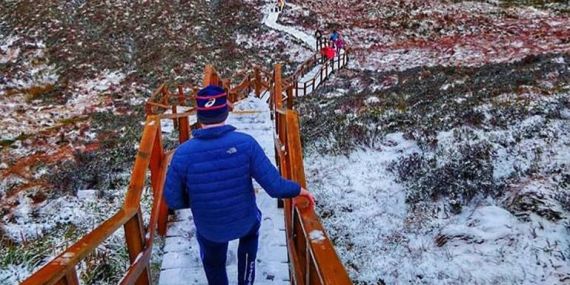
Bring cash for the carpark and a flask of something that warms the cockles while you take in the amazing views.

Getting to Northern Ireland
The easiest way to travel into Northern Ireland, if it is possible, is to aim for Belfast City. It is the capital city of Northern Ireland and is the area that all roads in the north eventually lead to. For simplicity, the following section will be mainly focusing on getting in and out of here. Think of Belfast City as the base of Northern Ireland, from there you can explore the smaller towns and villages of the region.
Arriving by Plane
From the uk and europe.
There are 3 International airports in Northern Ireland. In Londonderry, there is the City of Derry Airport and in Belfast City, there is George Best Belfast City Airport (Named after former Northern Ireland and Manchester United soccer player) and Belfast International Airport. These airports operate flights from the UK as well as Holland, Spain and Portugal.
From North America
Dublin Airport is the most convenient airport for visitors to Northern Ireland coming from the United States and Canada. You can travel to and from Dublin Airport to Belfast City in a number of ways. If you are renting a car in Dublin Airport be sure to book a Sat-Nav as well. This will come in handy to find your way out of Dublin city more than anything else. Once you find your way onto the M1 motorway the rest of the journey is pretty much plain sailing. Just remember that once you cross the border into Northern Ireland that the speed limit is read in miles per hour, whereas in the Republic it is in kilometres per hour. You can also avail of the direct bus from Dublin Airport to Belfast City via Aircoach and Expressway , this journey takes, on average, 2 hours and costs around 13 euro one-way.
Arriving by Bus
The main bus station in Belfast City is Europa Buscentre. Based in the city centre and servicing both Belfast airports and Dublin Airport. Europa Buscentre also has a route to Dublin City, which in turn connects you with the other cities in the Republic of Ireland. There is also a bus route running from Londonderry to Dublin , this route can have as much as three change overs and takes 4 hours 20 minutes.
Arriving by Train
The best way to enter Northern Ireland via train is also via Belfast City. The Dublin train runs from Connolly Station to Lanyon Place in Belfast. There is an average of eight trains per day, leaving every hour and 40 minutes, starting at 7:35 am and finishing at 8:45 pm. The quickest of these routes takes two hours and five-minutes. Dublin also acts as the change over point if you are taking the train to or from Belfast to any other city in Ireland.
Arriving by Car
If you have gotten to grips with driving in the Republic of Ireland and are crossing the border into Northern Ireland there are a few things to look out for. The roads of Northern Ireland are categorised the same as all other countries in the UK. The letter 'M' stands for motorway, the next most important roads are classed with the letter 'A', the next with the letter 'B' and so on. Both Northern Ireland and the Republic of Ireland drive on the left-hand side of the road and both use the 'Roundabout' system. The only real difference to keep in mind is that the measurement of speed in Northern Ireland is miles per hour while in the Republic it's kilometres per hour. To make it a little more tricky, the speed limit often appears on road signs as just a number in both countries.
Arriving by Ferry
There is a ferry route running between Larne, County Antrim in Northern Ireland to Cairnryan in Scotland and from Belfast City to Liverpool in England.
Getting around in Northern Ireland

Rail & Bus Services
One of the most cost-effective ways to travel around Northern Ireland is by bus. Translink is the main bus and train operator in Northern Ireland. They offer a great range of combo deal tickets and Smartcards which help lower your day to day travel cost.
Visitors can avail of the Ramblers Bus Service which is designed to make the more remote areas of Northern Ireland more accessible. If you are planning to travel around Belfast on public transport then the Belfast Visitor Pass from Translink is definitely worth a look. This gives you unlimited travel on all Metro, NI Railways and Ulsterbus services for £6.50 per day.
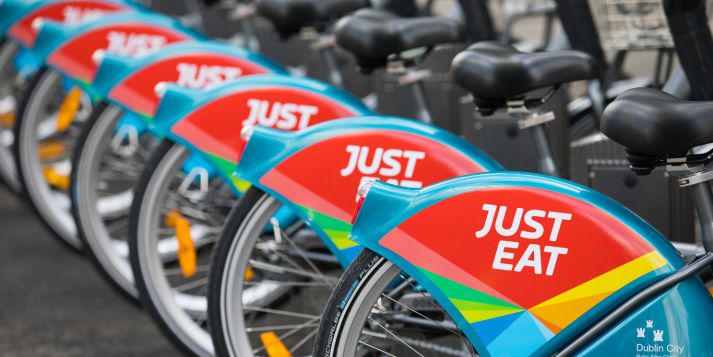
Just-Eat Bikes (Belfast only)
Belfast City runs a bike hire scheme, sponsored by the food delivery company Just Eat. It is a cost effective and quick way to get around the city. There are around 40 stations in total, each within close proximity to another.
A user must first create an account on the website , there is a £5 sign up fee which then goes towards your account as credit. You can choose from three different pricing options.
- Pay as you go: 30 minutes for £1
- Casual: 3 days for £6
- Annual: £25 per year

Taxis in Northern Ireland are broken down by classes A,B,C and D. Class A and B taxis are regular taxi cabs that can be hailed on the street or phoned from a base.
These class of taxis have an initial charge (up to 0.5 miles of £3). One mile is £3.80 and every additional mile is £1.60. Class C taxis are ones that are used chauffeur services, weddings and funerals, the above maximum fare structure does not apply to Class C taxis. Class D is Taxi Buses and again the maximum fare structure does not apply to these.
Other Regions of Ireland & Britain

Regions of Ireland & Britain
- Travelguide Homepage
- UK & Ireland Cities
Your Group & Interests
- Castles, Palaces & Stately Homes
Travel Advice
- Our Ireland Tour Packages
Adare Village and Thatched Cottages
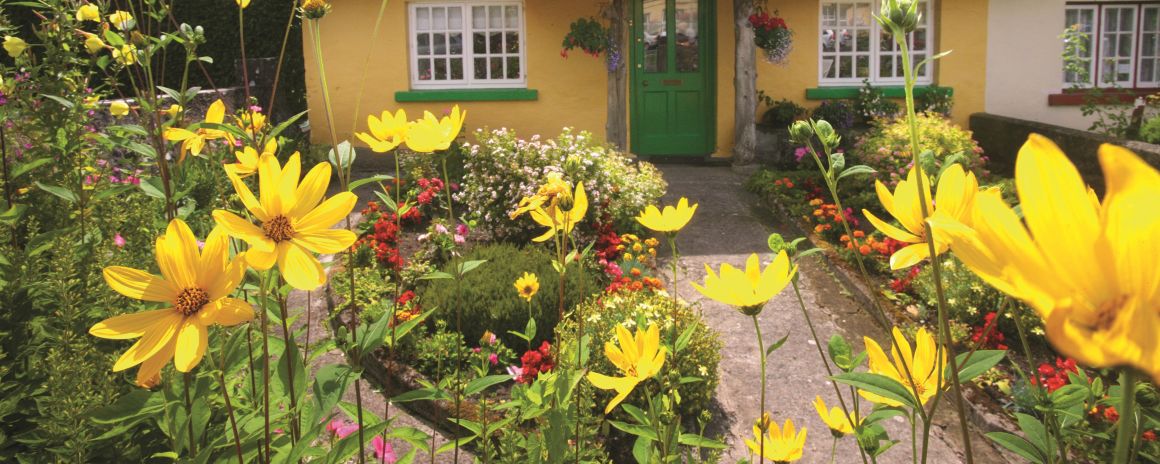
About Adare Village and Thatched Cottages
Adare is a small town in Co. Limerick, known for its quaint and colourful thatched cottages. Adare is considered to be one of Ireland's most beautiful towns so stop and take in the view. Don't forget your camera today - the perfect chance to capture the essence of old Ireland.
Explore Adare Village along the Wild Atlantic Way .
Black Taxi Tour Belfast
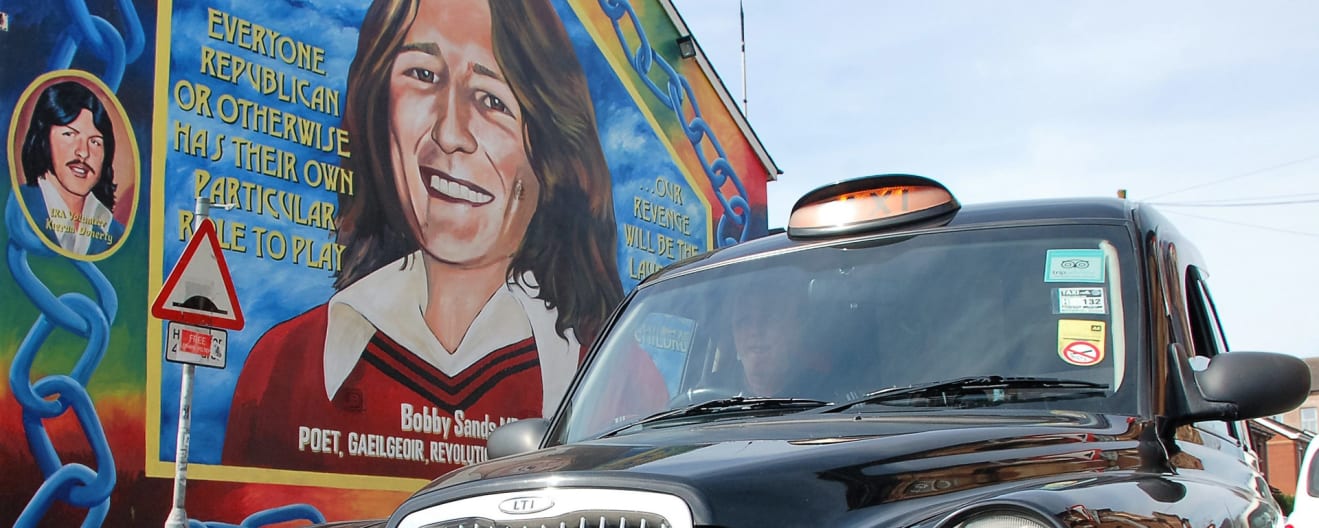
About Black Taxi Tour Belfast
Take a journey through this once troubled city. See the murals of the Loyalist Shankill Road & Nationalist Falls Road. The Troubles took their toll on the economic life of Belfast, but the past ten years of peace have returned much prosperity while the genuine friendliness of the city never left.
Blarney Woollen Mills
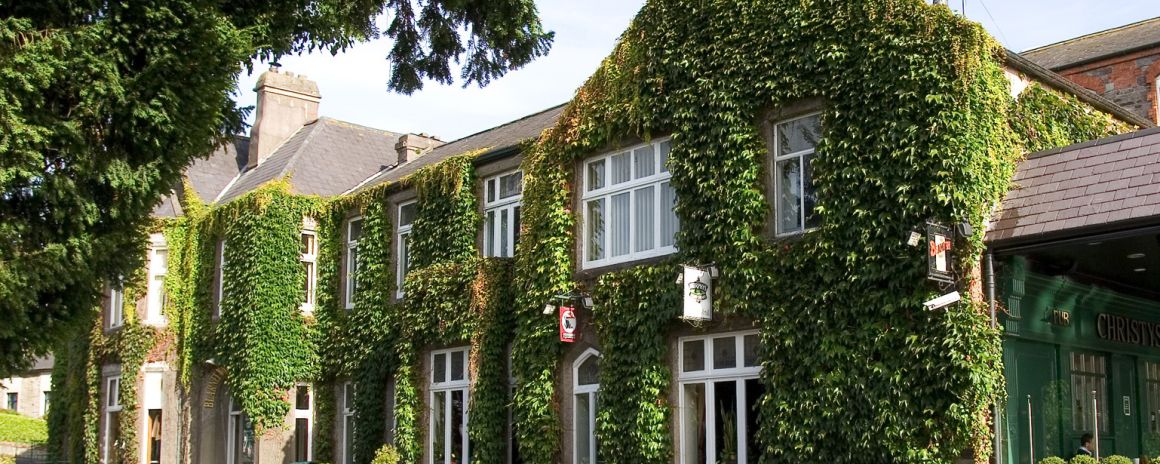
About Blarney Woollen Mills
Originally built in 1823, Blarney Woollen Mills was mainly used for the spinning and weaving of wool. After it closed in 1973, it reopened in 1975 — as an Irish heritage shop.
Visit their website...
Culloden Battlefield
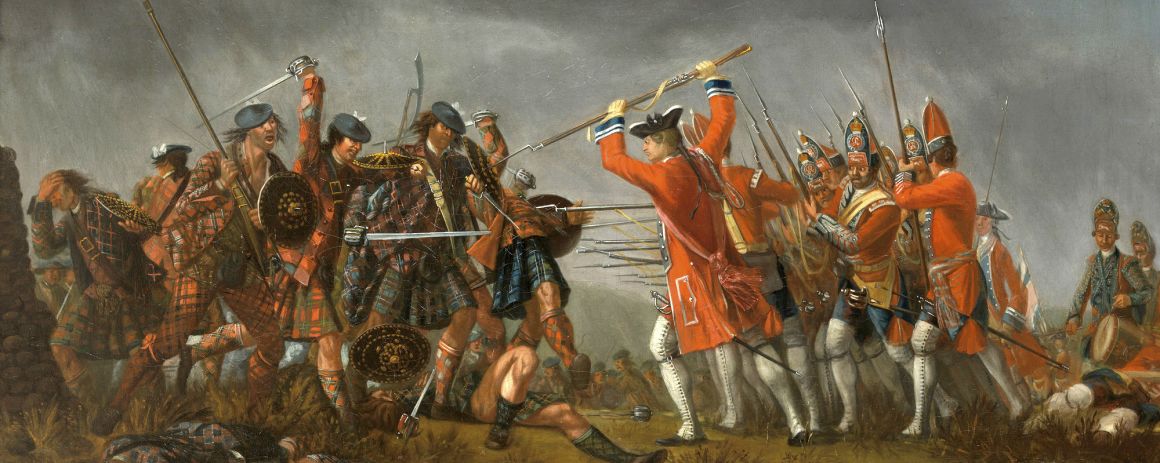
About Culloden Battlefield
The Culloden Battlefield Visitor Centre commemorates the last pitched battle fought on British soil, in April 1746. Learn more about the Jacobite intent to overthrow the House of Hanover and return the House of Stuart to the British throne.
Glenveagh Castle
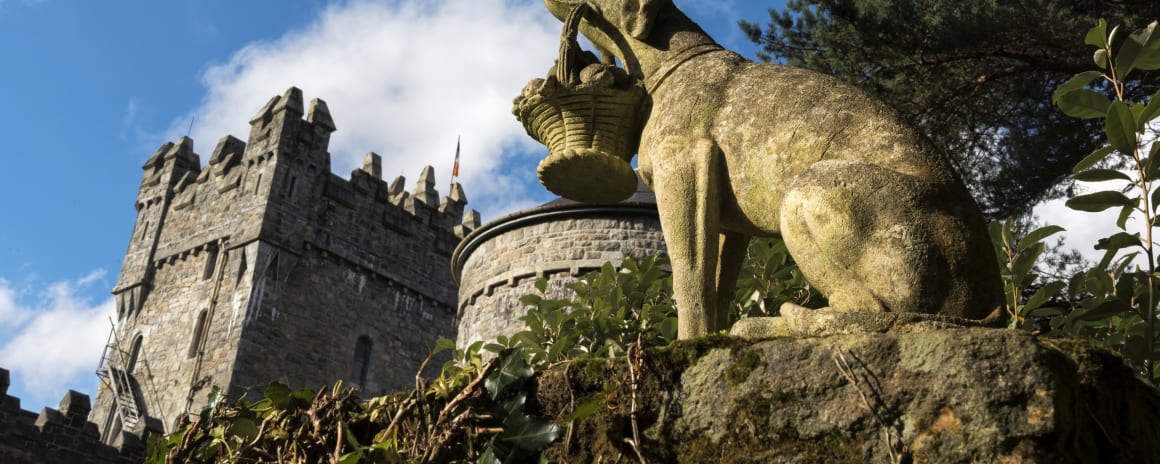
About Glenveagh Castle
Located within Glenveagh National Park, Glenveagh Castle was built by Captain John George Adair between 1870 and 1873. Having made his fortune through land speculation in America, Adair return to Ireland and began large amounts of land in County Donegal. The castle was built in the Scottish Baronial style and is surrounded by a garden and commands stunning views of the nearby mountains, lakes, woodlands and valleys.
Highland Folk Museum
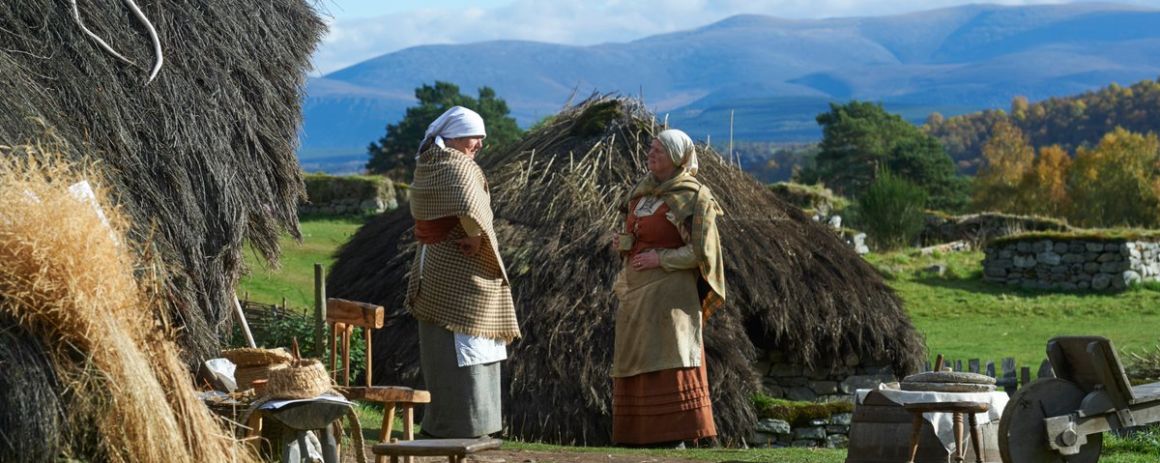
About Highland Folk Museum
About Highland Folk Museum is a museum and open-air attraction located in the Scottish Highlands. It is designed to showcase the domestic and working lives of the early highland people.
King John's Castle
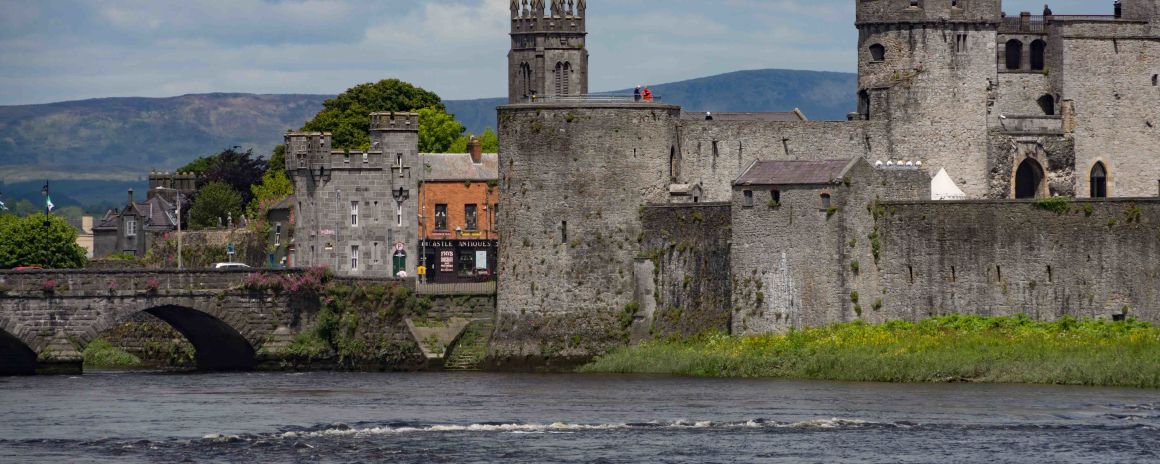
About King John's Castle
Located alongside the River Shannon in County Limerick, on King's Island. Dating back to 922, to a time when Vikings were the inhabitants of the island (Thormodr Helgason, the Viking sea-king, built the first settlement here. The castle itself was built in 1200, under the instruction of King John of England.
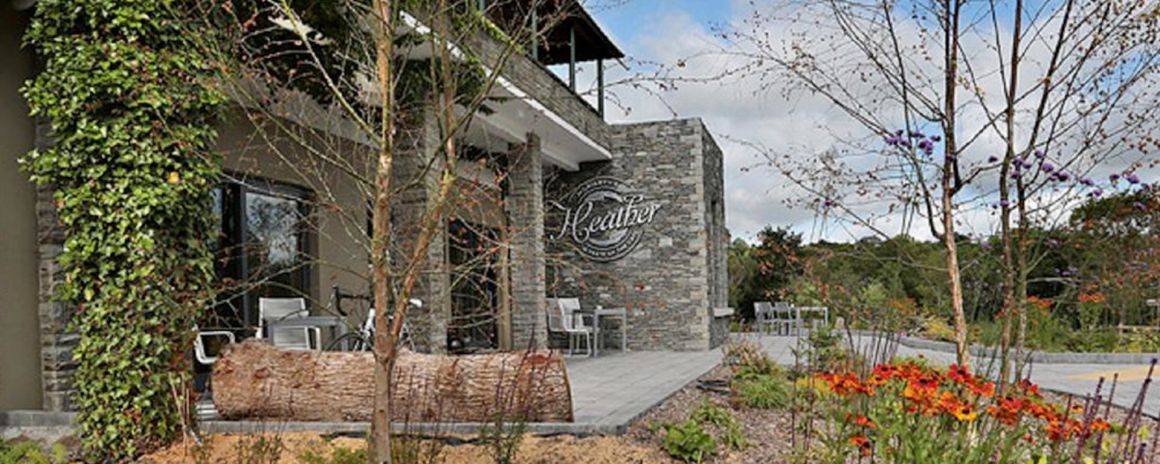
About Moriarty's
Located close to the Killarney National Park, Moriarty's is an Authentic Irish Gift Store and Restaurant. Hand crafted Irish jewellery, Waterford Crystal and classic and modern tweed fashions and furnishings are all on offer at the gift store. The restaurant is an 85 seater offering stunning views of the surrounding landscape.
Mount Congreve Gardens

About Mount Congreve Gardens
Mount Congreve Gardens. Located in Kilmeaden, County Waterford, Mount Congreve Gardens is an 18th century Georgian estate and mansion. It was designed by the same architect that created both of Waterford's cathedrals, John Roberts.
Mount Stewart House & Gardens
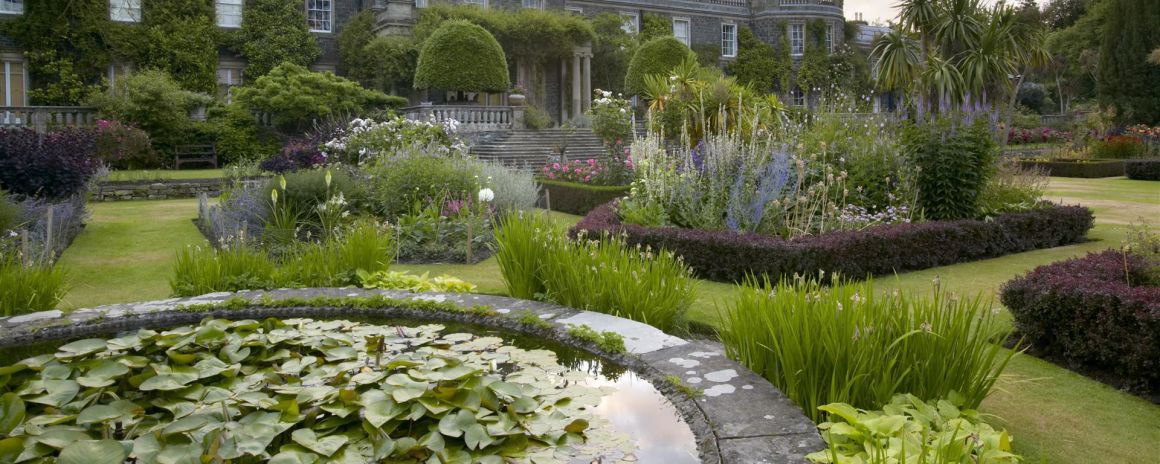
About Mount Stewart House & Gardens
Recently recognised as being one of the top 10 gardens in the world, Mount Stewart is a rich tapestry of planting plant life and stunning walking trails. The house dates back to the 19th century, and was the Irish seat of the Vane-Tempest-Stewart family.
Muckross House
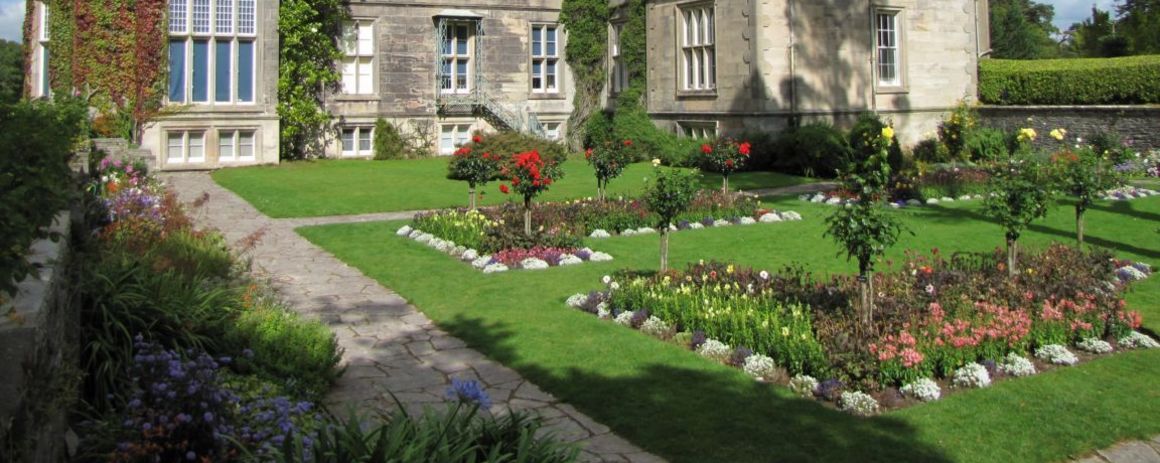
About Muckross House
Located on the grounds of the expansive and idyllic Killarney National Park. Muckross House, and its 11,000-acre grounds, was donated to the Irish state in 1932.
Muckross House Traditional Farms
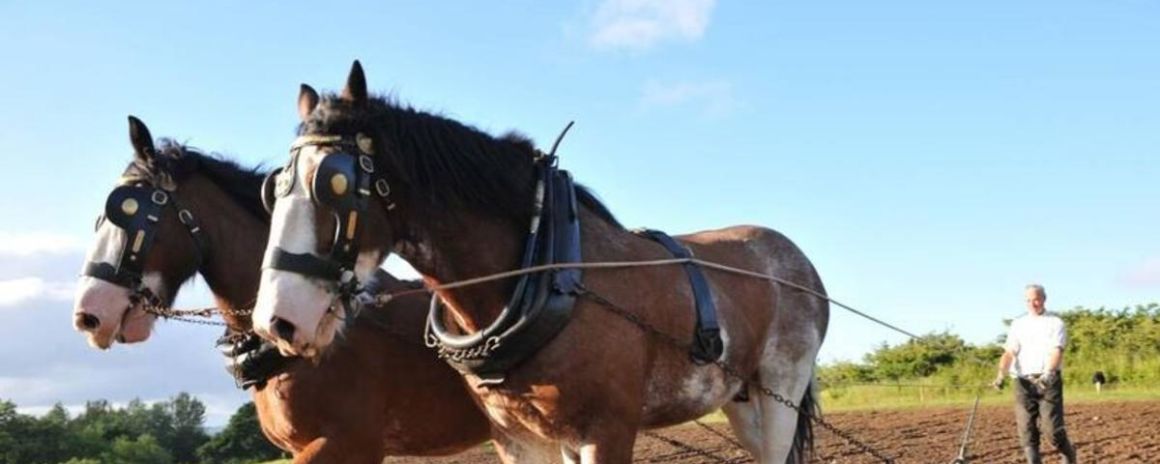
About Muckross House Traditional Farms
Located on the grounds of the picturesque Muckross House and its impeccable gardens. Take a step back in time and see the Irish farming lifestyle of the 1930s and '40s. A time when the horse was responsible for much of the labour and the weather was the be all and end all in terms of production.
The Quiet Man Museum
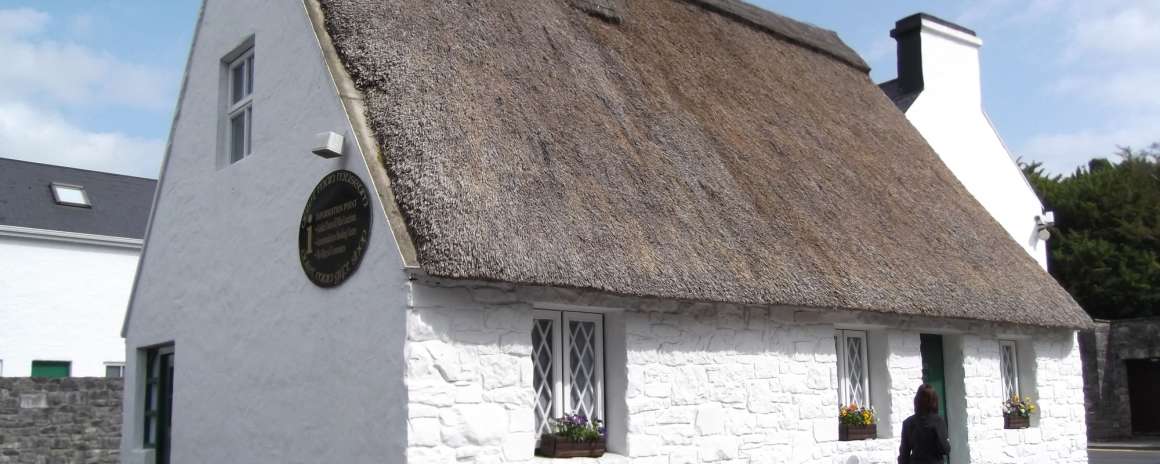
About The Quiet Man Museum
The Quiet Man Museum. A reproduction of the quaint thatched cottage from the John Wayne starring, John Ford directed movie of the same name. all costumes, artefacts and furnishings have been recreated in precise detail, to reflect the setting of the 1952 classic. Located in the picturesque village of Cong, County Mayo.
Ireland Travel Guide
As a local Irish company, we at My Ireland Tour are passionate about our country and our local community. We're thrilled that you're interested in visiting the place we call home. That's why we put together this definitive travel guide for anyone who wants to come to Ireland and discover this amazing place for themselves.
This is a completely free resource covering everything from top tourist attractions to the nearest yoga centre. We hope it helps!
Got questions?
- (US / Ca) 011 353 21 237 9006
- (EU) 00 353 21 237 9006
- [email protected]
- 5 Church Hill Carrigaline Co. Cork P43 X376 Ireland

Useful Links:
- Ireland Travelguide
- Advice & Safety
- Solo Travel
- Backpacking
Northern Ireland

- 2 Cities and towns
- 3 Other destinations
- 4.1 History
- 4.3 Politics
- 4.4 Climate
- 6.1 Immigration, visa, and customs requirements
- 6.2 By plane
- 6.3 By train
- 6.6 By boat
- 7.2 By bus and train
- 7.3 By bicycle
- 13 Stay safe
- 14 Stay healthy
- 16.1 Other social issues
Northern Ireland ( Irish : Tuaisceart na hÉireann , Ulster Scots: Norlin Airlann ) is part of the island of Ireland and one of the four constituent nations of the United Kingdom .
Northern Ireland has the Giant's Causeway (a world heritage site), stunning landscapes, vibrant cities, and welcoming locals interested in your own stories. The hit television series Game of Thrones was produced in Northern Ireland, which is also home to many of its filming locations.
Discover Northern Ireland is the tourist bureau.

These counties are no longer units of government in Northern Ireland, but continue to have strong local identities and to cohere as travel destinations. They're regularly abbreviated as "Co." for instance "Co. Down" is County Down.
Cities and towns
- 54.597 -5.93 1 Belfast is the capital and largest city of Northern Ireland, with the major transport hubs and the best visitor facilities. West Belfast was torn by over 30 years of paramilitary and British Military conflict, which its sights reflect. The university area is cosmopolitan and houses a good regional museum. The docks have been revitalised by the Titanic Quarter, which houses a good museum about the Titanic. Dramatic views can be had from Divis and Black Mountain.
- 54.512 -6.031 2 Lisburn was the seat of Ireland's linen industry, depicted in its museum.
- 54.66 -5.67 3 Bangor is a large coastal town, was a seaside resort. Good base for the Ards Peninsula, home to the island's largest marina and good shopping.
- 54.3499 -6.6546 4 Armagh is the ecclesiastic capital of Ireland, for both the (Anglican) Church of Ireland and the Roman Catholic Church. Nearby Navan Fort is one of the most important ancient sites in Ireland. Home to many myths and legends.
- 55.133 -6.661 5 Coleraine on the River Bann in County Londonderry, 5 km from the sea, it has an impressive history dating back to Ireland’s earliest known settlers. Coleraine today is a major gateway to the popular Causeway Coast area. Coleraine is a good shopping town and also has a major performance theatre at the University of Ulster in the town.
- 54.9958 -7.3074 6 Derry, or Londonderry ( Doire Cholmcille , "the Maiden City"), gateway to Donegal. Vibrant cultural life, intact city walls and the city where the Troubles started.
- 54.345 -7.64 7 Enniskillen is the picturesque main town of County Fermanagh, perfect for exploring the lakes around Lough Erne.
- 54.176 -6.349 8 Newry is a town that is a popular destination for shopping. Nearby is Slieve Gullion, the beautiful Mourne mountains and the attractive villages of Rostrevor and Warrenpoint. They somehow mislaid their entire castle in the back-end of a bakery.
- 54.598 -7.309 9 Omagh home to the very good Ulster American Folk Park, an outdoor museum of the story of emigration from Ulster to America in the 18th and 19th centuries.
Other destinations

- 55.24 -6.51 1 Causeway Coast in County Antrim has remarkable scenery, with the cascade of basalt columns at Giant's Causeway , the windswept bridge of Carrick-a-Rede, the Antrim glens, Dark Hedges, and wacky Gobbins. Bushmills is a venerable whiskey distillery, and there are crumbling castles, long sandy beaches and championship golf courses.
- 55.295 -6.1975 2 Rathlin Island is Northern Ireland's only inhabited offshore island, reached by a short ferry ride.
- 54.166667 -6.083333 3 Mourne Mountains are criss-crossed by tracks past woodland up to the peaks: Slieve Donard at 852 m / 2796 ft is the highest in Northern Ireland.
Northern Ireland was created in 1921 when Ireland was partitioned by the Treaty that ended the Anglo-Irish war. Most of the island became what was initially called Southern Ireland then the Irish Free State and is now the independent Republic of Ireland or Eire . But six of the nine historic counties of Ulster remained within the United Kingdom as Northern Ireland, with the other three joining the south, and the plate tectonics of this rift are still in motion. "Ulster" is thus a geographical and cultural term, and doesn't refer to the political entity of Northern Ireland. Lots of outsiders do conflate the two, but doing so in nationalist company... well, if you're lucky, you'll just be thrown out of the pub. If you're unlucky, you'll be required to stay and listen to a history lesson that begins in the 12th century.
In the souvenir tea-towel version of Irish history, there were four provinces, Leinster, Munster, Connacht and Ulster, with a High King presiding over all. In reality in the early medieval period there were about a dozen kingdoms, forever warring and recognising no overlords. The northwest was O'Neill territory, while the northeast (now Antrim) was Ulaid hence "Ulster". From the 12th century the Normans settled in southeast Ireland but never got this far. Right up to the 17th century, Gaelic nobles ruled over Donegal, Derry and Tyrone. Then the English Tudors subdued this last redoubt and began to re-shape Ulster to their liking.
They did this by "plantations" - colonisation by settlers from Great Britain, with new towns laid out and industries such as linen, and modern methods of agriculture that needed fewer hands and displaced people from the land. This had long gone on the south, the difference with the Ulster plantations was that Great Britain was now predominantly Protestant, and especially the Scottish incomers. Rural Ireland was Roman Catholic, a religion ghettoised by the Penal Laws, so sectarian tensions were added to grievances over landholding, wealth and economic opportunity. Incomers and industry were strongest in the east, so Belfast grew into a metal-bashing second Glasgow, while the rural west was little developed and impoverished even before the famine years. A cultural crack developed across Ulster, especially visible in the city that one faction called Derry and the other Londonderry.
The 19th century campaign for Irish independence escalated into "The Troubles", which by 1920 entailed guerrilla warfare by the nationalists and savage reprisals by the British. This was resolved by the Treaty, which gave Ireland a grudging partial independence, but at the price of partition. "No surrender!" - no way would the Unionists of the north consent to be ruled from Dublin, which they feared would impose a priest-ridden, backward and anti-Protestant regime. So six counties remained in the UK, while the other three Ulster counties - Monaghan, Cavan and Donegal - joined the south, as they were Catholic and nationalist to a degree that no amount of gerrymandering could overcome.
Nationalist resentment festered but the late 20th century "Troubles" were stoked by economic downturn and blatant discrimination in Northern Ireland, and the new dynamic of civil rights. Police and army deployed "to separate warring communities" were clearly acting for only one side, and became targets for violence themselves. The flashpoint was on "Bloody Sunday" in Derry in 1972, when the army opened fire on an unarmed demonstration, killing 14. British rule lost its legitimacy, the republican or nationalist cause was strengthened, and both communities waged para-military or terrorist campaigns as there was nothing to be gained from conventional politics. The death toll during these years is reckoned at 3532: roughly 1840 civilians, 1050 police and soldiers, 370 Republican paramilitaries and 160 Loyalist paramilitaries. Perhaps 47,500 were injured.
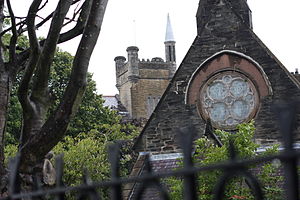
A series of short-lived political processes and peace accords came and went with no break in the violence; Belfast and Derry were scarred, with smoke rising, police patrolling in armoured cars, and army helicopters throp-thropping low. The "Good Friday Agreement" of 1998 also looked doomed when it was followed by the terrible Omagh bombing - yet after 20 years, this one has stuck. Violence dwindled, business and normal life returned, and Northern Ireland was able to re-launch itself as a tourist destination. Traffic nowadays criss-crosses from the Republic signalled only by a switch in road signs between km and miles per hour on the speed limits.
The GFA has held up for much the same reasons as the post-war French-German pact, which grew into the European Union - and that parallel is the present concern. "Don't mention the border", put both sides in each other's pockets, share power and let bygones be bygones, was the deal. But Brexit means that the Republic is now in the EU while Northern Ireland has left it - what the hell happens now? Nevertheless, the Brexit agreement has preserved the open border between Northern Ireland and the Republic of Ireland, and British and Irish citizens continue to have right of abode in each other's countries.
Most people visiting have heard of the varying allegiances of Northern Ireland's people. However, the people of Northern Ireland are friendly and warm towards visitors. You get the feeling that the people know the allegiances of each other, but it can be hard for visitors to ascertain.
Citizens can self-identify as Irish or British solely or Northern Irish. Similar divides exist in referring to places, for example the small city in the north west of the region on the banks of the River Foyle is Derry to Nationalists, while to Unionists it is Londonderry . Although Northern Irish people are British citizens from birth, they have the right to claim Irish citizenship and so may have an Irish passport in addition to or instead of a British passport.

Northern Ireland has its own devolved legislature separate from Westminster, officially known as the Northern Ireland Assembly , but often referred to by the metonym Stormont after the estate in Belfast where its seat is located. There have traditionally been two major parties in Northern Ireland politics: the Nationalist Sinn Féin , whose policy platform is generally left-wing, and the Unionist Democratic Unionist Party (DUP) , whose policy platform is generally more right-wing. Another major party is the Alliance party, which is centrist. Some matters, such as foreign affairs and defence, continue to be under the purview of Westminster.
Like the rest of Ireland and Britain, the weather here is dominated by weather systems coming in from the Atlantic, this makes for wet and windy weather. In the west, annual rainfall is 2000mm and on the east coast it is 850mm. The sun does shine too, on the Co Down coast the annual average total of sunshine is 1450 hours. The best advice is to pack wet weather gear and footwear (unless you are content to stay indoors when those are needed) and to look regularly at weather forecasts, Met Office is a good one.

English is the official language, spoken and understood everywhere, though the rapid Ulster accent may be a struggle to follow. There are many dialect words the same as Scots, such as "aye" for yes and "wee" for small. "Crack" meaning news, gossip and merriment was likewise Scots but has taken on its Irish spelling "craic". The tell-tale word is "youse" for plural you, a feature that is common throughout the island: this is otherwise only heard in Glasgow, parts of Northern England and other communities with historic links to the island of Ireland.
Irish or Gaeilge in both its standard and Ulster dialects ( Canuint Uladh ) is enjoying a revival, but is still much rarer than in the Republic. It's a Q-Celtic language akin to Scottish and Manx Gaelic, only distantly related to English, and in 2011 6% spoke it but only 0.2% used it as their everyday tongue. For a century it was shunned in the north: an Irish-speaker was either a poor Catholic potato-digger who'd failed to take the hint and push off to Liverpool, or the sort of quarrelsome (equals terrorist-suspect) nationalist who insists that Londonderry is called Derry. Irish is still only taught in Catholic schools and there are few avenues for adult learning, but it's increasingly used on signage and for official purposes, broadcast on BBC, and belatedly valued as part of Northern Ireland's culture.
Ulster Scots is an oddity - 1% spoke it according to the 2011 Census. Like Scottish Lallans it's on the cusp between being a dialect of English, a separate language, and an academic metro invention. The UK government has made unctuous pronouncements about its cultural relevance, which may be the kiss of death for its street cred, and it shares the problem of many "traditional" languages that have 27 different words for sheep-worming but need to borrow or invent words for cars, TVs and the internet. When written (which historically it wasn't) it looks like the signage at Schiphol Airport re-imagined by Hugh MacDiarmid. It seems likely to die out with the present generation.
Foreign languages are spoken by that nice couple from Hanover you sat by in the restaurant, and that student from Paris you met at the museum: they all seemed fluent in the foreign language of English. In Northern Ireland as in Great Britain, the older generation never learned (or saw the point of learning) other languages. However, the younger generations are slowly starting to see the necessity of knowing foreign languages. French has historically been quite popular among secondary students, but Spanish and German have seen a rise in popularity as well.

Immigration, visa, and customs requirements
Northern Ireland is part of the United Kingdom, so it has exactly the same entry requirements as England, Scotland and Wales.
- Citizens of the UK and Crown Dependencies can travel to Northern Ireland without a passport and have the automatic right to reside, work and take up benefits.
- Citizens of Ireland have the same entitlement as UK citizens.
- Citizens of other European Union countries do not require a visa for short visits (e.g. holiday, family visits, business meetings) but do require a visa for work or study in the UK. See Brexit for details.
- Citizens of Iceland, Liechtenstein, Norway and Switzerland have (and will probably continue to have) the same rules as for the EU.
- Citizens of Argentina, Australia, Brazil, Canada, Israel, Japan, Mexico, New Zealand, South Korea, Taiwan, the United States and Uruguay do not require a visa for visits of less than 6 months.
- Most other countries will require a visa, which can be obtained from the nearest British Embassy, High Commission or Consulate.
- There is no passport control or border check between the Republic of Ireland and Northern Ireland. However visitors must carry any relevant documents that permit them entry to the UK, such as a passport or identity card and visa.
- The UK has a Working Holidaymaker Scheme for citizens of the Commonwealth of Nations and British dependent territories. This allows residency in the UK for up to 2 years, with limited working rights.
- There are restrictions in terms of goods one can bring from elsewhere in the UK to Northern Ireland and vice versa. Importing certain goods may incur tariffs. See the Brexit article and UK government website for more information.
For more information on these requirements, see the UK government's website .
Almost all direct flights to Northern Ireland are from UK, Western Europe and the Mediterranean. There are no flights from the Republic of Ireland, as the distances are too short.
George Best Belfast City Airport ( BHD IATA ) is 2 miles east of Belfast city centre, with flights mainly from the UK. British Airways flies from London Heathrow, KLM from Amsterdam, and as of late 2023 Lufthansa from Frankfurt. All three destinations offer excellent global connections. There's a frequent bus to the city, or you can take the free shuttle bus to Sydenham railway station, see Belfast#Get in for details.
Belfast International Airport ( BFS IATA ), also known as Aldergrove, is 20 miles west of Belfast. This has several UK connections and is the main airport for flights from Europe, mostly by EasyJet, Jet2, and Ryanair. There's a bus to Belfast city centre, and another between Lisburn and Antrim for transport elsewhere in Northern Ireland; see Belfast#Get in .
City of Derry Airport ( LDY IATA ) has Ryanair flights from Liverpool and Edinburgh, and seasonally the Med. The airport is at Eglinton five miles east of Derry , with a bus to town.
Dublin Airport ( DUB IATA ) is a good option for flights beyond Europe, eg the USA, and via the Gulf states. It's north of Dublin city on the main road north, with hourly buses to Newry and Belfast.
From Dublin Connolly station the Enterprise Train runs eight times M-Sa and five on Sunday via Drogheda, Dundalk, Newry and Portadown to Belfast Lanyon Place. It doesn't serve Great Victoria Street station which is next to the Europa main bus station.
Other trains stop at several Belfast stations:
From Derry and Portrush hourly via Coleraine, Ballymena and Antrim (for Belfast International Airport) to Lanyon Place and Great Victoria Street.
From Portadown every 30 min via Lisburn and a dozen city stations, Sydenham (for Belfast City Airport) and Bangor.
From Larne hourly via Carrickfergus to Lanyon Place and Great Victoria Street.
Buses run hourly from Dublin city and airport to Belfast Europa station, taking 2 hr 20 min. There are competing operators, which holds the price down at €20 adult single and €30 return. Cross-border buses also run from Cavan and Monaghan to Armagh, Belfast and Coleraine, and from Letterkenny to Derry. Day-trip excursions from Dublin also visit Belfast.
Citylink / Ulsterbus 923 runs 2-3 times a day from Edinburgh via Glasgow, Ayr and the Cairnryan ferry to Belfast
National Express normally runs daily from London Victoria and Manchester via Cairnryan, but as of Oct 2021 this remain suspended, and they send you to Glasgow to join the Citylink - it might be easier to travel via Dublin.
The M1 / N1 / A1 links Dublin to Belfast and there are multiple other crossing points from the Republic. There are no checks, and all you see at the border is a reminder northbound that speed limits are in miles per hour. Southbound you're offered a choice of speed limits in km/h or teorainneacha luais ciliméadair san uair. It's up to you to check that you're eligible to enter the UK (see above), that you have any necessary travel documents with you, and that your car insurance or rental agreement is valid for Northern Ireland - this should be automatic on any rental from the Republic.
Foot passengers should always look for through-tickets by bus / train and ferry, as these are considerably cheaper than separate tickets.
- From Cairnryan near Stranraer in Scotland, Stena Line sail to Belfast five times a day, 2 hr 15 min.
- Also from Cairnryan, P & O Ferries sail to Larne six times a day, 2 hr.
- From Birkenhead near Liverpool, Stena Line sail daily to Belfast, 8 hr.
- From the Isle of Man , IOM Steam Packet ferries sail to Belfast 4 days a week, taking just under 3 hr.
- Ferries sail to Dublin from Birkenhead, Holyhead (this is the quickest route from England), Isle of Man and the Continent. Dublin port is connected by tunnel to the motorway north, so motorists dodge the city centre traffic and reach Northern Ireland within 3 hours.
- From Campbeltown in Scotland a foot-passenger ferry sails April-Sept to Ballycastle then onward to Islay , returning in the afternoon. It's scheduled for day excursions but you can take a one-way trip. It didn't sail in 2021 and the 2022 schedule is TBA.
- From Greenore east of Dundalk in the Republic, a ferry crosses the opening of Carlingford Lough to Greencastle in County Down. It carries vehicles but only sails in summer, see Newry#Get in for details.
- From Greencastle in County Donegal , a ferry crosses the outlet of Lough Foyle to MacGilligans Point north of Derry. It likewise carries vehicles but only sails in summer, see County Londonderry#Get in .
Inland waterways are navigable all the way from Dublin and the Shannon up to Enniskillen and the Erne lakes, though you're not allowed to sail a hired boat that far. The other canals have been lost, though work is under way to rebuild the Ulster Canal around Monaghan.

You don't need a car within Belfast or Derry, but will greatly benefit further out, such as along the Antrim glens.
Many visitors bring their own car by ferry. Car hire is best arranged at the airports, as there is little availability in the cities, even in Belfast. Check whether you're also covered to drive in the Republic - this should be automatic on rentals, and vice versa for the north if you fly into Dublin and rent from there. Cross-border motoring is easy (and the obvious way to explore Donegal), but one-way rentals such as Belfast-Dublin incur stiff drop-off charges.
Motorway or equivalent fast dual carriageways have no tolls and fan out from Belfast to Newry and Dublin, Dungannon (for Omagh), Magherafelt (for Derry), Ballymena (for Antrim coast) and Larne (for glens). Their default speed limit is 70 miles per hour (112 km/h). Other main roads are usually 60 mph (96 km/h) out of town and 30 mph (48 km/h) in built-up areas. Road signage is identical to Great Britain's. The B-roads and back lanes are often narrow and twisty, with limited places to safely overtake, and sometimes little room for oncoming traffic to pass . . . and at this point you get a fright as some mad fellow blazes past with his hair on fire. Tradesmen's white vans drive at 18 or 80 mph and nothing in between. The worst speed bandits are the motorcyclists: Northern Ireland has a tradition of on-road motorbike circuits, which are risky enough under regulated sporting conditions, let alone when some boy racer with more throttle than skill decides to show off.
Newly qualified drivers in Northern Ireland must display "R" plates (for "restricted") for one year from gaining their licence. As with "L" plate learner drivers, they're limited to 45 mph (72 km/h) on all roads, to the exasperation of other motorists.
The days of tedious security checkpoints are gone, hopefully for good, but these still occur. The police are mostly looking for known local players and for EU smuggling (eg of fuel) and aren't much interested in tourists unless reeking of alcohol. The sooner you show your documents or whatever, the sooner they can send you on your way.
By bus and train
See also Rail travel in Ireland
Much of the public transport in Northern Ireland is under the umbrella of Translink . They offer a useful travel card called iLink , which gives you unlimited bus and train travel within specified zones for a day, week, or month. The card can be topped up if you decide to extend your trip.
For those places that happen to be linked by rail, that's usually the best option. Fares are inexpensive: a standard return from Belfast to Derry was £19 in 2021, and an off-peak day-trip was £17.33. Off-peak means after 09:30, giving you several hours to explore.
Buses fan out to all the main towns, and are frequent along the Causeway Coast of Antrim, and to Bangor and the upper Ards peninsula. They're infrequent further out, and the sights of interest may be some miles out from the town: you need your own wheels for Mourne Mountains, Strangford Lough, the Antrim Glens, the Londonderry Sperrins and coast, Tyrone or the Erne lakes.
If you are considering touring in Northern Ireland, it's worth considering buying the maps and guides produced by Sustrans to accompany the national routes they have helped develop. The routes can be found on Open Cycle Map , but Sustrans' guides are helpful for nearby places to stay or visit.

- Carrick-a-Rede Bridge near Ballycastle was woven by fisherfolk to gain access to an islet with good salmon fishing. It's nowadays steel hawser not rope, but just as draughty across the chasm.
- Ulster American Folk Park is an open-air museum near Omagh in County Tyrone, depicting the story of emigration from Ulster to North America in the 18th and 19th centuries. There is an Old World section, the voyage itself, then emigrant life in the New World.
- Londonderry is a fascinating walled city and redoubt.
- Castles and mansions: Hillsborough and Newtownards have fine examples.
- Marble Arch Caves are part of the Global Geopark in the limestone terrain of Belcoo in County Fermanagh.
- Political murals are common in the "interface areas" where Protestant and Catholic neighbourhoods adjoin, so west Belfast and Derry have plenty. They're painted on gable walls of buildings and proclaim local allegiances. They come and go with political events - in 2014 one notable series in Strabane expressed solidarity with Palestine - so ask around if there are any examples worth tracking down.
- Rugby union unites all the communities and is played on an all-Ireland basis, with players from Northern Ireland and the Republic turning out for the Irish national team. (Home internationals such as the Six Nations are staged in Dublin.) Ulster Rugby are the local professional team likewise drawn from Northern Ireland and from the three RoI counties of Ulster. They play in the United Rugby Championship (formerly known as Pro-14), the predominantly Celtic league, with their home ground at Ravenhill (sponsored as Kingspan Stadium) in Belfast.
- Football - soccer - is less developed, and the quality of the domestic league is low as nearly all the top Northern Irish footballers play for English clubs. Northern Ireland has its own national team, which has seen limited success - like other middle-order nations, it hopes to benefit from the enlarged format of tournaments such the UEFA Euro finals. The top club competition is the NIFL or Danske Bank Premiership of 12 teams. Linfield FC often win it - they and the national team play at Windsor Park in Belfast. Derry City is the only Northern Ireland club to play in the Republic's League of Ireland, where the playing season is April-Oct.
- Gaelic athletic games. Gaelic Football is played in Irish communities, from parish teams to county teams. County teams that win the Ulster championship get to play in the All Ireland championship. The ancient game of hurling and the female equivalent camogie are also play.
- Golf: lots and lots of courses. The championship course is Royal Portrush , hosting the Open in 2019 and next doing so in 2025.
- Motorbike racing was a big thing in Northern Ireland in the heyday of Joey Dunlop (1952-2000), but a series of tragedies has driven audiences and sponsorship away. The NorthWest 200 and Armoy Road Races are still held near Ballymoney in summer but the Dundrod and Clady races have folded.

- Learn Irish: the language is making a comeback. An Chultúrlann in west Belfast holds regular classes for all levels of ability and has Irish books and other learning materials.
- Orange Order Parades are a piece of living history, quintessential Northern Ireland. They wear their full-fig regalia and Carsonite bowler hats and strut down the street to the shrill of fife and tuck of drum. They are of course contentious: they symbolise Protestant and unionist dominance in the north, the lyrics of their tunes are anything but inclusive, and they have drawn (and gone looking for) trouble. However they're now regulated by the Parades Commission, which vets their route and won't let them march through neighbourhoods where they'd cause offence. The marching bands nowadays equivocate about their Protestant / Unionist roots, and bandy the word "community" a lot. The summer marching season culminates on the 12th of July, a public holiday commemorating the 1690 Battle of the Boyne which cemented Protestant hegemony in Ireland for the next 200 years - and for 300 in Northern Ireland. (When the 12th is a Sunday, the marches and holiday are on Monday 13th - this next occurs in 2026.) All the main towns have parades, and Belfast's is huge. Morning parades are peaceful because everyone's sober and knows their mothers are watching. Afternoon parades are like football crowds after a day in the pub, there may be alcohol-fuelled disorder; just use your common sense to swerve clear. For the full schedule of parades see the Commission website : they regulate all such events not just the Orange Order, even antique tractor rallies.
- Money: the only official currency of Northern Ireland is the pound sterling (£). Bank of England notes are legal tender and universally accepted (beware that the "Adam Smith" English £20 ceased to be valid in 2022). The Northern Irish banks (AIB, Bank of Ireland, Danske Bank, and Ulster Bank) print their own notes, in common use here but often not accept Great Britain and internationally, so go to a bank and exchange them for Bank of England notes before leaving; any bank in the UK is required to exchange them for free. The euro (€) is accepted in border areas, with a poor exchange rate — save your euro for the Republic of Ireland and change your euro into pounds. Debit cards and credit cards from Visa and Mastercard are accepted.
- Cross-border shopping is occasionally a feature when the £ / € rate or tax difference (e.g. on fuel) becomes marked. In the early 21st century differences have been small, tending to draw shoppers in from the Republic rather than have Ulsterfolk sally out to Dundalk or Letterkenny. If you plan a cross-border trip, check ahead in case a bargain has emerged.
A popular dish is an assortment of fried food, called the "Ulster Fry". It consists of eggs, bacon, tomatoes, sausages, potato bread and soda bread. Some versions include mushrooms or baked beans. Fries are generally prepared as the name suggests, everything is fried in a pan. Traditionally lard was used, but due to health concerns, it has been replaced with oils such as rapeseed and olive. Historically, it was popular with the working class.
Northern Ireland is known for its distinctive breads including soda bread, potato farls and Veda bread.
Some shops on the north coast close to Ballycastle sell a local delicacy called dulse . This is a certain type of seaweed, usually collected, washed and sun-dried from the middle of summer through to the middle of autumn. Additionally, in August, the lamas fair is held in Ballycastle, and a traditional sweet, called "yellow man" is sold in huge quantities. As you can tell from the name, it's yellow in colour, it's also very sweet, and can get quite sticky. If you can, try to sample some yellow man, just make sure you have use of a toothbrush shortly after eating it... it'll rot your teeth!
The cuisine in Northern Ireland is similar to that in the United Kingdom and Ireland as a whole, with dishes such as fish and chips a popular fast food choice. Local dishes such as various types of stew and potato-based foods are also very popular. 'Champ' is a local speciality consisting of creamed potatoes mixed with scallions and colcannon is similar with cabbage.
As in the rest of the UK, most towns will have at least one Italian, Indian or Chinese restaurant. With the advent of the peace process, the improvements in economic conditions for many people in Northern Ireland, there has been a great increase in the number of good restaurants, especially in the larger towns such as Belfast and Derry. Indeed it would be difficult for a visitor to either of those cities not to find a fine-dining establishment to suit their tastes, and wallet.
There is a strong emphasis on local produce. Locally produced meats, cheeses and drinks can be found in any supermarket. For the real Northern Irish experience, sample Tayto brand cheese and onion flavoured crisps: these are nothing short of being a local icon and are available everywhere.
The legal drinking age in Northern Ireland is 18. Those of 16-17 may be served beer and wine with meals if accompanied by a sober adult. Pubs are normally open Su-Th until 23:00 and F Sa to 01:00, but in 2020 and 2021 they've had curtailed hours.

- Bushmills Whiskey is made in that Antrim north coast town. The distillery tours are very much on the tourist circuit as it's close to Giant's Causeway.
- Guinness: it's a Marmite thing, you either like the burnt flavour or you don't, and there's no shame in not liking it. It's just as popular in Northern Ireland as in the Republic, and the Guinness family were famously Protestant. But Guinness established such commercial dominance that other breweries struggled, and it was easier to find continental beers in Northern Ireland than anything brewed locally. Micro- and craft breweries are now appearing - they're described for individual towns so try their products, but few offer tours. One that does is Hilden in Lisburn .
- Belfast Distillery is nowadays just a retail park, recalled in several street names. There are plans to convert cells within the former Crumlin Road jail into a whiskey distillery, but in 2021 the only spirits you might encounter are the unquiet dead on the jail's "paranormal tours".
- Belfast Artisan Distillery makes gin several miles north at Newtownabbey , no tours.
- Echlinville Distillery in Kircubbin south of Newtownards produce whiskey, which first came to market in 2016; no tours.
- Niche Drinks in Derry produce a blended whiskey, but their main line is cream liqueurs, Irish coffee and the like; no tours.

Northern Ireland changed greatly with the advent of the 1998 peace agreement, though its troubles have not entirely ceased. There remains a high frequency of terrorist incidents in Northern Ireland, with the UK Home Office defining the current threat level as 'severe'. Tourists, however, are not the target of such terrorist incidents and therefore are highly unlikely to be affected. Civil unrest is more likely during the contentious 'marching season' in summer. The U.S. State Department [dead link] advises visitors to Northern Ireland to remain 'alert' during their visit and to keep themselves abreast of political developments.
Most visits to Northern Ireland, however, are trouble-free, and visitors are unlikely to visit areas at risk of violence. Northern Ireland has a significantly lower crime rate than the rest of the UK. Pickpockets and violent crime are rare so you can generally walk around the main streets of Belfast or any other city or town without fear during the day.
The Police Service of Northern Ireland (formerly the Royal Ulster Constabulary or RUC ) is the police force in Northern Ireland. Unlike the Garda Síochána in the Republic, the PSNI are routinely armed with handguns and/or long arms. The police still use heavily-armoured Land Rover vehicles; do not be concerned by this, as it doesn't mean that trouble is about to break out. There is a visible police presence in Belfast and Derry , and the police are approachable and helpful. Almost all police stations in Northern Ireland are reinforced with fencing or high, blast-proof walls. It is important to remember that there is still a necessity for this type of protection and that it is a visible reminder of the province's past.
As with most places, avoid being alone at night in urban areas. In addition, avoid wearing clothes that could identify you, correctly or not, as being from one community or the other, for example Celtic or Rangers football kits. If in doubt, do not express political viewpoints - it would be even better to act as if you either don't know about the conflict or don't care. Avoid political gatherings where possible. Many pubs have a largely cultural and political atmosphere (such as on the Falls Road, the mostly Nationalist main road in West Belfast, and the Newtownards Roads in predominantly Unionist East Belfast).
On the days around 12 July, the Orange Parades can lead to road closures and some shops may close for the day or for a few hours. The parades have been known to get a bit rowdy in certain areas but have vastly improved. Additionally, the last Saturday in August is known as "Black Saturday" which is the end of the marching season. Trouble can break out without warning, though locals or Police officers will be more than happy to advise visitors on where to avoid. The Twelfth Festival in Belfast is being re-branded as a tourist-friendly family experience and efforts are being made to enforce no-alcohol rules aimed at reducing trouble.
Stay healthy
There are no COVID-related restrictions in place in Northern Ireland; however, the government recommends the wearing of a mask in indoor public places, such as shops, cafes, pubs and venues, and in health and social care settings like hospitals and care homes.
For the most up-to-date information:
- Northern Ireland Government coronavirus portal
- Health and Social Care (HSC) Board
- Public Health Agency
To dial Northern Ireland from outside the UK or Republic (or from a "foreign" phone whilst there), dial +44 28.
From Great Britain dial the area code 028, with no country code. From within Northern Ireland, just dial the number with no country or area code.
From the Republic, dial the area code 048, with no country code; +44 28 also works but is charged at international rates. There isn't a reciprocal arrangement, so to call the Republic from Belfast it's +353 then the area code (such as 1 for Dublin) same as if you called from Belgrade.
International phone cards are widely available in large towns and cities within Northern Ireland, and phone boxes accept payment in GBP£ and Euro. You can also buy a cheap pay as you go phone from any of the phone networks.
Northern Ireland has the same mobile networks as Great Britain: EE, O2, Three and Vodafone. The towns and main highways have coverage from all of them, often with 4G, but the signal is patchy out in the country lanes. O2 has somewhat wider coverage than the others; see individual pages for details. As of Oct 2021, there's 5G in Belfast but not beyond. Wifi is widely available in public places.
Using a Northern Ireland or other British phone in the Republic may incur EU roaming charges, and vice versa for Irish phones used in the north. Areas within five miles of the border (such as Derry) pick up both countries' networks, so take care your mobile doesn't switch. The Irish carriers are eir Mobile, Three Mobile and Vodafone Mobile, so check which version of Vodafone you're on.

The province's troubled past has created a uniquely complex situation within Northern Ireland's society. Integration, or even interaction, between the two main religious groups varies hugely depending on where you are: for example, in affluent South Belfast or Bangor, those from Catholic and Protestant backgrounds live side by side, as they have for generations, whereas in West Belfast, the two communities are separated by a wall. As above, visitors are advised to avoid making political statements or taking one side over the other.
Foreign nationals claiming they are ‘Irish’ just because of an ancestor will likely be met with amusement, although this may become annoyance or anger should they then express their views related to The Troubles.
Unlike in parts of Europe, there is no social taboo associated with appearing drunk in bars or public places. Though it is advisable to avoid political conversations in general, this is particularly true when alcohol is involved. People from all backgrounds congregate in Belfast city centre to enjoy its nightlife; avoiding political discussions is an unwritten rule. Do not ask for an Irish Car Bomb or a Black and Tan in a bar - more acceptable names are an Irish Slammer or a half-and-half.
Also, Northern Irish people have a habit of gently refusing gifts or gestures you may offer them. Do not be offended, because they really mean that they like the gesture. Also, you are expected to do the same, so as not to appear slightly greedy. It is a confusing system but is not likely to get you in trouble.
Tours of Belfast often include a visit to the Peace Lines , the steel barriers that separate housing estates along sectarian lines. These are particularly visible in West Belfast. It is common for private or taxi tours to stop here and some tourists take the opportunity to write messages on the wall. It is important to remember that there is a real reason why these barriers have not been removed, and that they provide security for those living on either side of them. Messages questioning the need for these security measures, or those encouraging the residents to 'embrace peace' etc., are not appreciated by members of the community who live with the barriers on a day-to-day basis, and such behaviour is generally regarded as arrogant and patronising.
The terms which refer to the two communities in Northern Ireland have changed and 'Nationalist' or 'Unionist' are considered more neutral descriptions of people's positions. If in doubt it is best to use the term "Northern Ireland" until you are prompted to do otherwise. To refer to Ireland as a geographical whole, a reference to "the island of Ireland" or "all-Ireland" is widely understood, for example in sporting events.
Visitors might be more aware that the second city of Northern Ireland has two English-language names, "Londonderry" (official) and "Derry" (used by the local government district and on road signs in the Republic). Nationalists, and everyone in the Republic, will invariably use the name "Derry", whereas Unionists strongly prefer "Londonderry". It is wise not to question this, and if you are asked "Did you mean Derry" or "Did you mean Londonderry?" you should politely say yes.
It may all seem confusing, but Northern Irish people won't expect you to know or care about every detail of the situation and, as mentioned above, will openly welcome you to their country. Young people tend to be more open-minded about it all and are much less politically motivated than their parents or grandparents.
Other social issues
The people in Northern Ireland are generally warm and open, always ready with good conversation. Of course, being such a small, isolated country with a troubled past has also led to a decidedly lower rate in social, economic, and ethnic diversity. The majority of locals are white, more so than in other UK cities or multicultural countries like the United States or Germany. There have been some racist incidents particularly in South Belfast, which is more ethnically diverse due to its location near Queen's University. After decades of little or no immigration, some people find it hard to accept outsiders moving in, and racist attacks are usually on an immigrant's property, rather than the immigrants themselves.
Some citizens of Northern Ireland are not the most accepting when it comes to homosexuality. While a small and dwindling minority, fundamentalist Christians hold greater political sway in Northern Ireland than almost anywhere else in western Europe. Homophobic crimes are rare but still more common than in the rest of the UK and Ireland. There are virtually no examples of any gay and lesbian communities outside Central Belfast. However, parts of the capital (for example the University Quarter) are perfectly safe and accepting of gay and lesbian people, with both of Belfast's universities incorporating active LGBT societies. Same-sex marriage was legalised in 2020 and a ban on conversion therapy came in 2021.
- The Republic of Ireland is quickly reached in any direction but north; Dublin is within a day trip but deserves much longer.
- Scotland is visible across the North Channel. Glasgow especially has strong links to Ulster.
- The Isle of Man is the clod of earth that Finn McCool hurled in the general direction of his foe Bennandonner. You may have to travel via Dublin to reach it.
- Has custom banner
- Has mapframe
- Maps with non-default alignment
- Maps with non-default size
- Has map markers
- Articles with dead external links
- Has Geo parameter
- Usable regions
- Usable articles
- Region articles
- United Kingdom
- All destination articles
- Pages with maps
Navigation menu
TTC family of brands
My Trafalgar
Destinations
Get Inspired
866 513 1995
Northern Ireland

See All Northern Ireland Tours
Trending Northern Ireland tours
Save up to $562
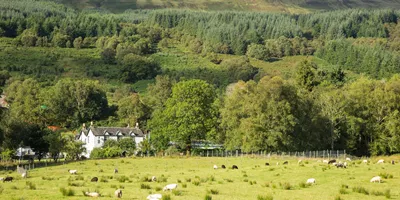
Best of Ireland and Scotland
21 Locations
3 Countries
Travel to see the very Best of Ireland and Scotland, from delicate Waterford Crystal to the golfing greats of St. Andrews. Kiss the Blarney Stone and you’ll be sharing tales from Giant’s Causeway, the Ring of Kerry and the Scottish Highlands for years to come.
Save up to $365
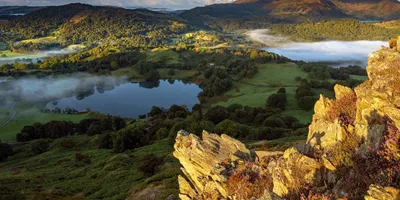
Britain and Ireland Highlights
15 Locations
5 Countries
Short on travel time but want to see all the Britain and Ireland highlights? This trip delivers the genius of Shakespeare, Waterford crystal creations in Ireland and a hearty Welsh dinner at a local vineyard, with a side of ancient history, in just over one week.
Save up to $543
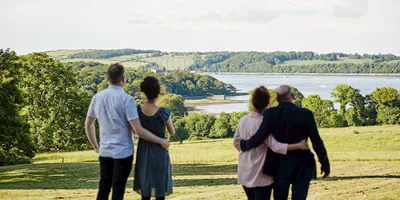
Irish Experience
2 Countries
Explore the Emerald Isle on this most in-depth of Irish experience trips, filled with tales of mythical creatures and the troubled history of an island split in two. Beyond soul-stirring landscapes, there’s time with a local ‘Cabbie’ who’ll guide you through Belfast.
Save up to $506

Shamrocks and Leprechauns
13 Locations
A favorite Ireland trip for families combining happy travels with the luck of the Irish. Find your own pot of gold at the end of the rainbow, cuddling sheep on the Wild Atlantic Way. Ever wondered if boats can fly? See it firsthand in Foynes, all with no schoolbooks in sight.
See More Ireland Trips
5 million happy guests and counting
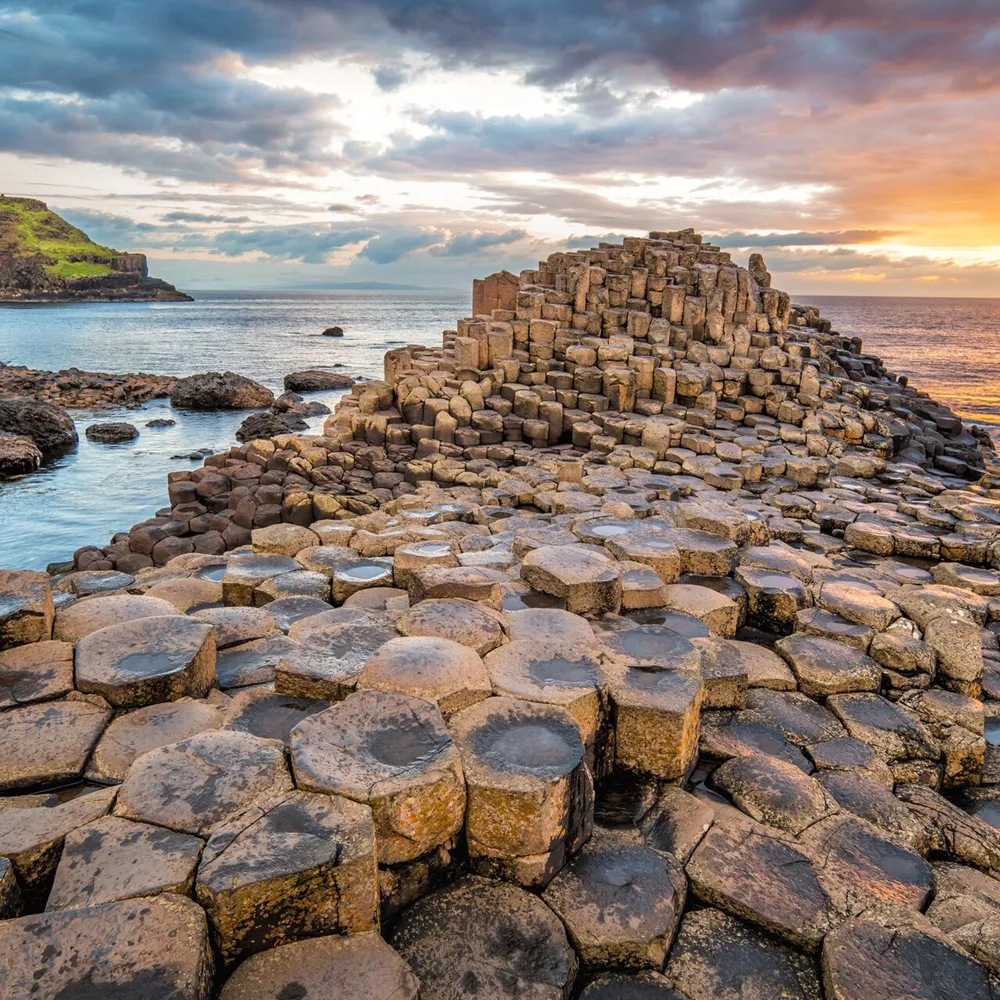
Pound sterling
Capital City
Good morning
Good Morning
Good evening
Good Evening
"From the stunning, secluded lakes of Fermanagh to the monumental steps of the Giant's Causeway, Northern Ireland affords luscious green scenery, charming countryside, vital cities and friendly locals"
Emma, Travel Director
See the City Hall in Belfast
Originally built to celebrate Belfast’s new status as a city, the City Hall is one of the most beloved Belfast tourist attractions. We’ll show you around this grand monument to history, or you can relax on the grassy grounds, with the Belfast Wheel in the background.
Walk on the Derry City Walls
We’ll take you on a journey through history to the Derry City Walls, one of the most historically important places to visit in Northern Ireland. Surrounding the old city center of Derry, the city walls are a 17th-century fortification with panoramic views of the region. Incredibly, most of the original structure is still standing.
Feel the Irish Spirit at St George's Market
Completed in 1896, St George’s Market is the last surviving Victorian market in Belfast and one of the oldest Belfast attractions. There are markets every Friday and Sunday and you can explore local produce, secondhand treasures, traditional arts and crafts, Irish homewares, and live music in this beautiful building.

Explore the town of Donegal
With its wild mountains, sandy beaches and glittering lakes, Donegal is one of the most remarkable places in Europe. The scenic highlight of any Northern Ireland travel experience, we’ll take you through pretty Donegal Town, with a serene harbor, the 15th-century Donegal Abbey and the ancient Donegal Castle.
Admire 40,000 basalt columns at Giant's Causeway
Take a drive with Trafalgar up the gorgeous Antrim coastal road to the Giant’s Causeway, where you can see the natural spectacle of 40,000 interlocking basalt columns. It’s one of the most iconic things to do in Northern Ireland, and your trip will also ‘Make a Difference' by helping to preserve this natural wonder.
Our top 5 things to do in Northern Ireland
We show you the best things to do in Belfast and beyond, from the ancient Derry City Walls to the spectacular natural columns of the Giant’s Causeway.
Ulster Museum
Located in the Botanic Gardens in Belfast, the Ulster Museum is a vast display of fine art, botany, geology, culture and local and European history. It’s the largest museum in Northern Ireland with everything from dinosaur skeletons to an ancient Egyptian mummy.
The Titanic Belfast is an incredible museum, dedicated to telling the story of the Titanic, from her design and construction in Belfast in the early 1900s to her disastrous voyage. Located in the Belfast docklands, where the original Titanic was launched, you can explore over nine interactive galleries.
Downpatrick
Down County Museum
We’ll take you back through 9,000 years of history at the Down County Museum, a former prison now dedicated to documenting the history of Downpatrick. You can visit the original cells used to house prisoners in the early 1800s, and learn the legendary history of St Patrick, the patron saint of Ireland.
Best museums in Northern Ireland
Our Belfast tours take in the best museums and galleries in Northern Ireland. See an ancient Egyptian mummy at the Botanic gardens and discover the vivid history of the Titanic.
Ardglass potted herring
This classic Northern Irish dish consists of Ardglass herrings rolled in a dish with vinegar, spice berries, raw onions, salt and pepper. It’s baked until the top of the fish becomes crispy, then served with crusty bread and butter to mop up the tasty juices.
One of the most well-loved dishes in Northern Ireland, Ulster fry is a traditional cooked breakfast with griddle breads (potato bread and soda bread fried until golden), small pancakes, bacon, eggs, sausages, tomatoes and mushrooms, served with tea and toast.
Traditionally found in the north midlands such as Fermanagh and Donegal, Boxty is a Northern Irish potato pancake made with a blend of grated raw potatoes and cooked mashed potatoes with flour and buttermilk. Served with a smear of butter, this is a delicious favorite.
Best food in Northern Ireland
Our trips will let you in on the best places to try Northern Irish cuisine, filled with grilled bread, potato pancakes, bacon and sausages, and generous dollops of creamy butter.
What to pack for Northern Ireland

Water and windproof jacket
Northern Ireland is one of the wettest and windiest regions in Europe, with temperatures averaging just 15°C (59°F) in summer. Stay cosy with a sturdy jacket and warm layers.
A big appetite
With a hearty cuisine filled with delicious breads, meats, pancakes and potatoes in every form, you’ll need to bring your appetite for a tour of Northern Ireland.
Although the Republic of Ireland (the southern partition of Ireland) uses the Euro, Northern Ireland uses the Pound sterling, so you’ll need to change currencies at the border.
An adaptor plug
Voltage in Northern Ireland is 230V, and the sockets are of Type G, with standard British 3-pin plugs.
Northern Ireland is undoubtedly one of the most beautiful places in the world, and you’ll want to bring a camera to capture all of this wild beauty.
Pack for sustainable travel
Consider your environmental impact when you next take a trip and go single-use-plastic-free by packing a reusable water bottle, a steel straw, your own shopping bags and reusable toiletry bottles.
Our Europe & Britain destinations
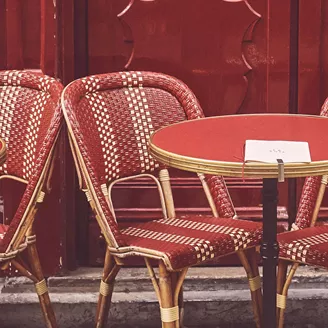
Bosnia Herzegovina
Czech Republic
Liechtenstein
North Macedonia
Netherlands
Switzerland
Other worldwide regions we visit
Africa the Middle East
Australia and New Zealand
North and Central America
South America
Get your free brochure
Find your next escape with the world's leading travel brand
Request A Brochure
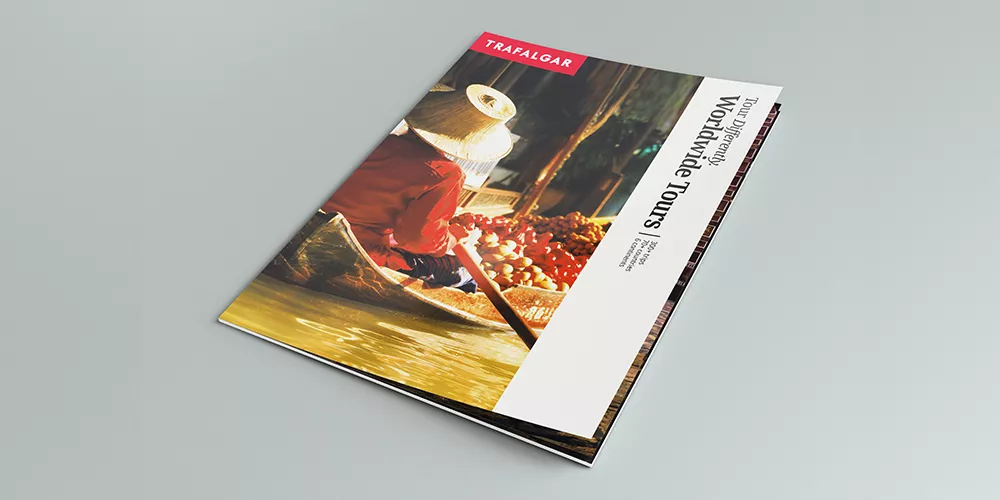
Award winning tours
Every year, we're proud to win some of the most prestigious travel accolades around the world - from the Travel Globes to the Agent's Choice Awards
Search Our Tours
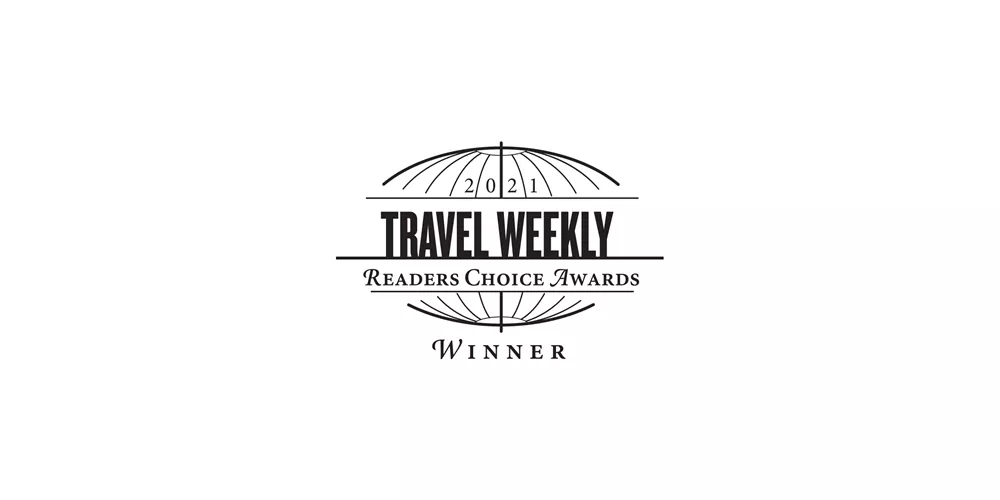
Help & Info
WE MAKE TRAVEL MATTER®
Unedited Reviews
Our Destination Management Companies
Frequently Asked Questions
Travel Updates
Do Not Sell or Share My Personal Information
Travel Planning
Get Your Free Brochure
Travel Insurance
Booking Conditions
Trip Deposit Level
Recommendations
Trafalgar Tours Limited is a proud member of The Travel Corporation family of companies.
#SimplyTrafalgar
Travel House, Rue du Manoir St Peter Port, Guernsey, GY1 2JH
Selected Region
United States
United Kingdom
New Zealand
South Africa
Copyright 2024 Trafalgar. All rights reserved.
Terms and Conditions
Privacy Policy
Cookie Policy
Things to Do in Belfast
Best Museums
Coolest Murals to See
Food to Try
Top Restaurants
Best Time to Visit
Weather & Climate
Belfast International Airport Guide
Public Transportation
Safety in Northern Ireland
48-Hour Itinerary
One Week in Northern Ireland
Touring Northern Ireland in a Week
:max_bytes(150000):strip_icc():format(webp)/reflectivemood-56a3c66b5f9b58b7d0d3ad64.png)
Feifei Cui-Paoluzzo / Getty Images
Northern Ireland has a turbulent political history and incredibly beautiful scenery. So beautiful, in fact, that there are several "Game of Thrones" filming locations across the region. Whether you want to see what Belfast has to offer, or if you're interested in gorgeous views, Northern Ireland delivers.
If you only have a week to explore the best of Northern Ireland, fear not. This complete itinerary will guide you around the area with suggestions for where to go and what to do.
Day 1 - Arriving in Belfast
The best way to arrive in Northern Ireland for your week-long vacation is to fly directly into Belfast International Airport . Most flights arrive during the day, meaning you will have enough time to pick up your rental car and make your way to Northern Ireland's capital city, Belfast . The airport is actually located near Lough Neagh and you should expect at least 30 minutes drive to the city. Have a look around the city center and maybe enjoy a drink in style at the historic Crown Liquor Saloon. Plan for an early night in order to rest up for the true Irish vacation to come.
Day 2 - Drive the Coast Road to the Giant's Causeway
Marco Bottigelli / Getty Images
Start early from Belfast and take the winding coastal road up north. You will soon reach Carrickfergus with its magnificent medieval castle. Carry on northwards via Larne, following the A2 to Bushmills and the Giant's Causeway , one of Ireland's most important sights . When you arrive it is time to stretch your legs. You have the option to take the Cliff Walk and enjoy the view of the Causeway and (if you are lucky) the Scottish coast to the Northwest. Or stroll down to the Causeway proper, a bus will take you back up again to the visitor center if you can't face the steep road back up or (even worse) the hundreds of steps up to the Cliff Walk. If you have some time drive to the Old Bushmills Distillery, tours are offered every day. Spend the night in or near Bushmills in a B&B or book ahead to stay at the classic Causeway Hotel, overlooking the 40,000 basalt columns that make up this must-see natural wonder.
Day 3 - Tour the Antrim Coast to Derry
The next day, leave the village of Bushmills and take the coastal road westwards, staying on the A2 all the time. You will soon pass Carrick-a-Rede with its incredible rope bridge, Dunluce Castle, the famous white rocks, some pretty seaside resorts, and the huge Downhill Estate with its precariously located Mussenden Temple (" Game of Thrones " fans take note—this was one of the Irish filming locations). With only a week to see Northern Ireland, keep driving on to Derry and have a walk on Derry City's historic walls . An overnight stay in or near Derry will give you an opportunity to recover.
Day 4 - Down to Omagh and Enniskillen
Alain Le Garsmeur / Getty Images
Midway through your one week in Northern Ireland, take the road south via Strabane, the A5 will bring you to Omagh. Here you can visit the quirky Ulster American Folk Park with its Irish and American homesteads and the truly impressive recreation of an emigrant ship. Then take the N32 to Enniskillen and enjoy the Lough Erne scenery, maybe taking in a boat trip to Devenish Island as well. Enniskillen usually has some lively evening entertainment in the pubs, making it a good place for an overnight stay.
Day 5 - Via Armagh to Belfast
Shaun Egan / Getty Images
With a few days left to finish your road trip tour of Northern Ireland, you might decide to visit the Marble Arch Caves or Florence Court in the morning or drive straight on. Take the N34 south and cross the border into the Republic of Ireland. A look at the round tower in Clones and at the market town of Monaghan are a good idea—as is stocking up on petrol for the lower price. From Monaghan take the N12/A3 to Armagh, the "Cathedral City". After visiting one (or indeed both) cathedrals hit the A3 and then the M1 to bring you back to Belfast. Note that the next day is optional depending on your schedule—you might want to take the A26 straight to Belfast International Airport and stay nearby if you are short on vacation time.
Day 6 - Belfast
Reading Tom / Flickr / CC BY 2.0
Unless you are already flying out today you should take a closer look at the City of Belfast and its attractions—including the celebrated Titanic museum . Or drive out to Holywood and visit the huge Ulster Folk and Transport Museum , stepping back in time. In the evening drive out towards Belfast International Airport and stay nearby to save yourself the trouble of having to make the traffic-prone drive the next day.
Day 7 - Flying Home
cuppyuppycake / Getty Images
Seven days in Ireland go too quickly! Today you will be heading back on a flight out of Belfast International Airport—have a last look at the huge Lough Neagh when taking off, with a little luck and a bit of sunny weather, you might also get splendid views of the Irish coastline, any which direction you are going!
Your Trip to Ireland: The Complete Guide
A Guide to Airports in Ireland
The 7 Best Day Trips from Belfast
The Top 10 Things to Do in County Antrim
Ireland's 20 Largest Towns and Cities
The Complete Guide to the Giant's Causeway
The 16 Most Beautiful Natural Features in the UK
Dunluce Castle: The Complete Guide
Northern Ireland's Mourne Mountains: The Complete Guide
Carrick-a-Rede: Ireland's Exhilarating Rope Bridge
The Top 20 Places to See in Ireland
10 Questions to Ask Yourself Before You Plan Your UK Trip
Getting Around Belfast: Guide to Public Transportation
The Top 22 Things to Do in Ireland
The Most Beautiful Waterfalls in Ireland
The ultimate guide to visiting Northern Ireland
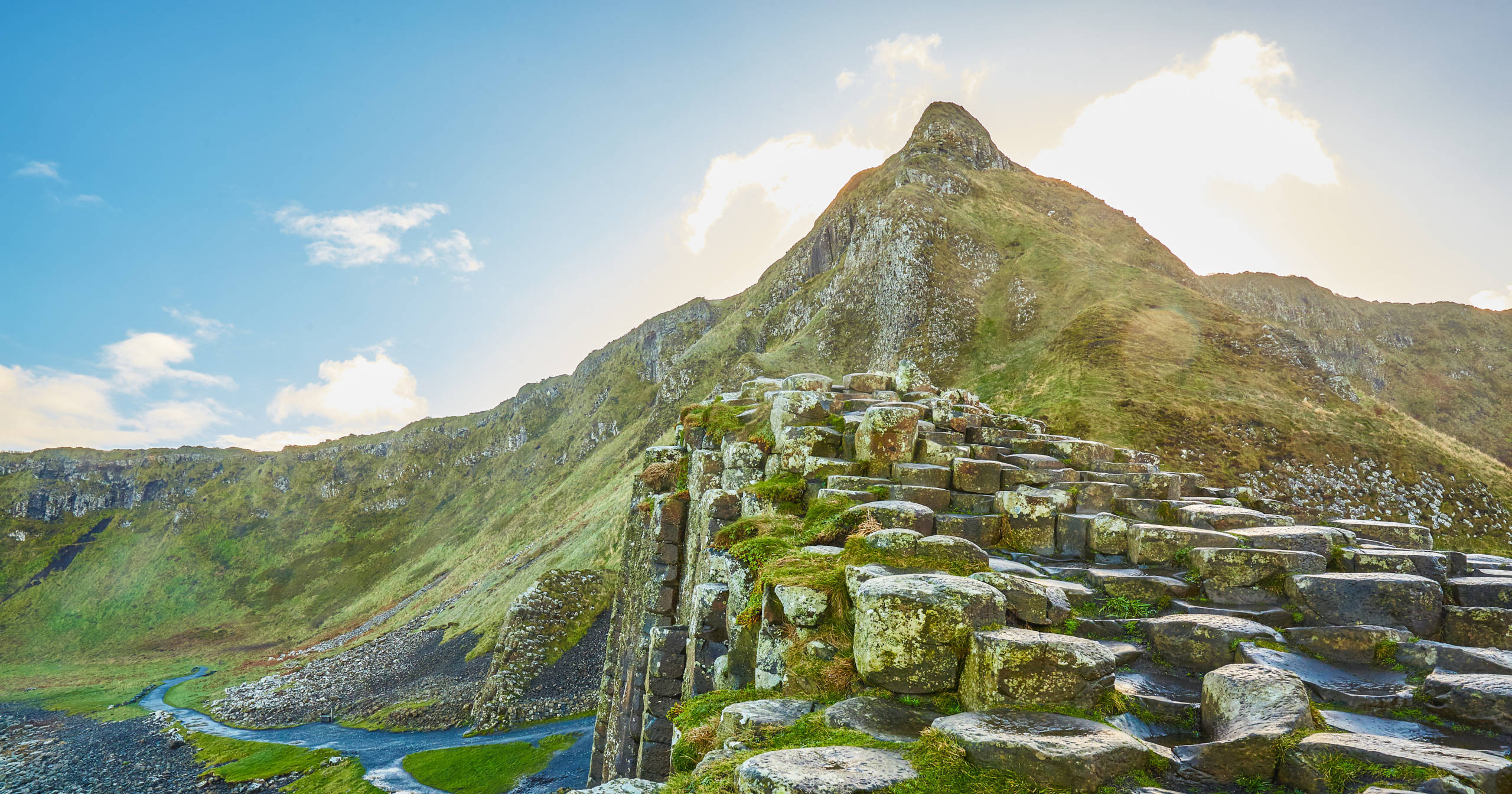
Northern Ireland is famous for many things from "Game of Thrones" locations to golf courses galore. For me, Northern Ireland packages up the best of the U.K. in a relatively bitesize area from the stunning Causeway Coast to the bustle of Belfast. There's great energy in Northern Ireland, and the area is crammed full of breathtaking sights that take you both indoors and outdoors.
Northern Ireland has 157 wet days a year, so be sure to pack for all weather. For now, prepare an Irish coffee and read our favorite Northern Ireland picks below.
Things to do
A trip to Northern Ireland should start in Belfast. It's a lively historic city with its famous Titanic Quarter, pubs, museums , hundreds of street murals, gardens and much more. A great way to get around is with hop-on hop-off sightseeing buses. Make sure you stop off and visit St George's Market -- the last surviving Victorian market in Belfast.

The Cathedral Quarter, named after St Anne's Cathedral, is the city's historic trading quarter and is packed with Victorian architecture, cobbled streets and quirky little pubs. If you are there on the weekend, Tea on The Titanic (which was built in Belfast) is well worth doing. Step back in time to a period of luxury, elegance and five-star service in the opulent Titanic Suite, which is a detailed recreation of the vessel's grand dining room.
The coast of Northern Ireland
Renting a car is a great way to discover Northern Ireland.
Read more : From Connemara to the Giant's Causeway: 9 of the most beautiful beaches in Ireland

With 334 miles of coast, a trip can take a few days to do in full with stops. Belfast is a good place to start, as an hour later, you will pass the Giant's Causeway, the Dark Hedges (as seen in "Game of Thrones") and Carrick-a-Rede Rope Bridge -- from where you can sometimes see Scotland on a clear day. Ferry companies like Stena Line have regular sailings that will transport you and your vehicle to Northern Ireland.
The white sands and azure waters of Whitepark Bay also make for a lovely stop. Rathlin, Northern Ireland's only inhabited offshore island, sits around halfway along the route and is home to an RSPB reserve with resident guillemots, razorbills and puffins.
County Armagh
Drive just an hour south of Belfast and you'll reach County Armagh, a rural gem whose charms rarely get shouted about. Known as the spiritual capital of Ireland, you can enjoy history and culture in the county's towns or venture into the unspoilt countryside and plentiful apple orchards.

Slieve Gullion Forest Park offers the unmissable opportunity to experience peaceful forest trails along with mountain views. The main six-mile trail is marked, takes you through woodlands and then to the summit of Slieve Gullion. You can also drive most of the way up. At the summit, you will find a Bronze-Age tomb and incredible views.
Dunluce Castle, County Antrim
Dunluce Castle is one of the most iconic monuments in Northern Ireland, situated rather precariously on the rugged Antrim coast. It provides a very important chapter in the history of the MacDonnells of Antrim and north-east Ulster.

This now-ruined medieval castle is reachable via a bridge connecting it to the mainland and is surrounded by steep drops on each side. You can explore the findings of archaeological digs within the cobbled streets and stone merchants' houses of the long-abandoned Dunluce town. The dramatic history of Dunluce is matched by tales of a banshee (a female spirit in Irish folklore who heralds the death of a family member) and how the castle kitchens fell into the sea one stormy night in 1639.
Tickets are $8 per adult.
If you love beaches, then make sure you make a trip to Whiterocks Beach on the north coast, awarded the prestigious Blue Flag Award multiple times with a backdrop of limestone cliffs that stretch from Curran Strand to Dunluce Castle.
Glenoe Waterfall, County Antrim
This pretty waterfall is snuggled in the hills just outside the village of Glenoe, 30 minutes from Belfast.

It's in a deep gorge and was a result of water channels that dropped 26 feet over the falls. Tiny fairy houses were added and stuck between the rocks and a tree fell on the top platform, which adds to the dramatic gushing waterfalls.
Where to stay
Belfast has two decent Radisson Rewards options: the Radisson Blu at 44,000 points (or around $96 midweek) per night and the Park Inn at 38,000 points (or around $86 midweek) per night.

If you love the outdoors and you're after something a little different, check out the family-run Finn Lough Luxury Hideaway, Enniskillen . A truly immersive staycation experience here will allow you to forge a connection with the Northern Irish countryside whilst residing in one of its Forest Domes, Suites or Lakeside Villas. The private, transparent domes are quite unique allowing you to watch the starry nights whilst horizontal on crisp, white sheets.
Forest Bubble Domes are from $409 per night.
Read more: 16 of the best hotels in Ireland
Restaurant top picks
The Muddlers Club in Belfast became the third Northern Ireland restaurant to receive a Michelin star . Named after the secret society that met there over 200 years ago, chef and owner Gareth McCaughey hand picks ingredients daily from the best of homegrown Irish produce, offering an enticing tasting menu (that caters for vegetarians and vegans) and a lunch menu, too. The open kitchen provides a sense of theatre and allows you to look on as Irish ingredients are transformed into Michelin-starred masterpieces.
The icy waters around Northern Ireland produce some great seafood. Enter Harry's Shack at Portstewart Strand, County Derry -- a rustic seafood restaurant right on the beautiful beach. Known for its spiced whitebait, fresh prawns and of course, traditional fish and chips, sunset-viewing tables are popular. It also has a garden overflowing with two acres of organic vegetables and herbs.

Bottom line
If you're traveling to the Emerald Isle and fail to go north of the border, you are definitely missing out. For such a small place, Northern Ireland has some of the most beautiful sights you will find and our bucket list of things to do keeps increasing.
If you are an adventurer, you can hike , climb and kayak to your heart's content and if you are seeking something more sedate, a serious food scene and the stunning Causeway Coast is just the tonic.

Northern Ireland Travel Guide
Your ultimate northern ireland travel guide, with tips, and things to see and things to do in northern ireland. great for first-time and returning travelers..
Founded in 1921, Northern Ireland is separate from Ireland itself and is part of the United Kingdom.
It has a population of 1.8 million. Northern Ireland is known for its beautiful forests, mountains, coasts, cliffs, and friendly locals.
In recent years, the stunning scenery has been featured in the popular HBO show Game of Thrones .
Northern Ireland is a perfect getaway for fans of the outdoors.
This Northern Ireland travel guide will help you plan your next vacation.
Popular Guides
- Things to Do in Northern Ireland
- the Giant’s Causeway
Our Highlight
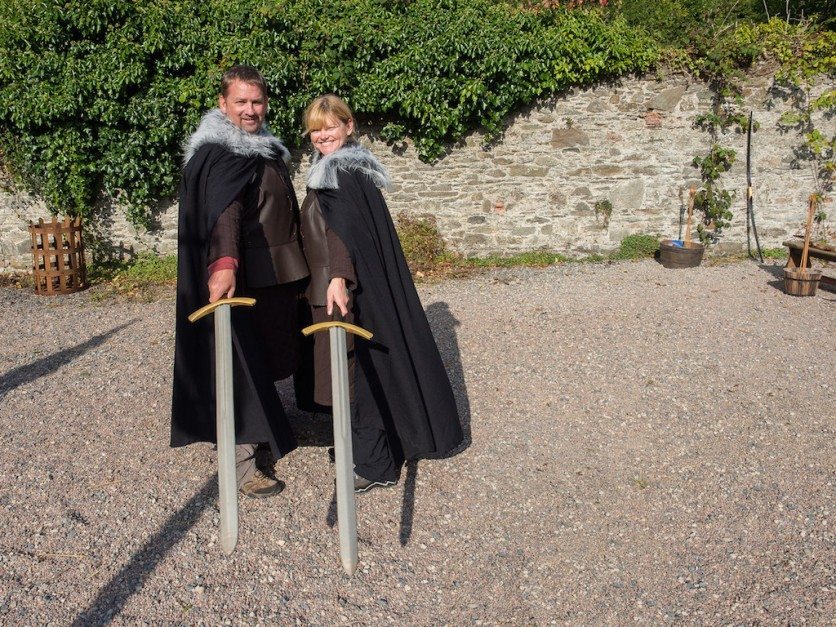
Table of contents
Table of Contents
Fast Facts about Northern Ireland
- Northern Ireland’s Power voltage is 230V at 50 Hz.
- Northern Ireland’s currency is the pound sterling and 1 pound sterling is equal to 1.25 USD.
- Renting a car is considered the best way to get around Northern Ireland, especially for those who want to visit more remote locations. All that is required is a valid US passport, be at least 21 years of age, and have had a driver’s license for at least one year prior to your trip.
- You do not need a visa to visit.
- The most popular cellular networks in North Ireland are EE, 02, and Three. Sim cards can be purchased through these networks.
- Value-added tax (VAT) comes at 23%. Tax reductions for common goods, like food, hotels, and public transportation, bring the rate down to 9%. To learn more, click here: VAT_NorthernIreland
Things to See and Do in Northern Ireland
- Speed Boat tour of Castle Ward: ride out to the tidal pools to see Europe’s highest tides. They harnessing the tidal water for hydroelectric power and you ride out to the foamy pools to ride the waves. What a thrill!
- Titanic Belfast: The world’s largest Titanic exhibit. See real-life artifacts from the Titanic, learn about the history of the ship, walk through recreated decks and cabins, get something from the souvenir shop, take a guided boat tour of the Belfast port, or choose from multiple interactive galleries. Afterward, stay for some tea and treats at the café.
- Game of Thrones Territory : Fans of the popular Game of Thrones TV show will love this trip through the show’s famous filming locations. See the real-world Westeros and explore the beautiful forests, beaches, and caves that helped make the show what it is. Choose your favorite spots from the show or take the full three-day trip.
- Check out Giant’s Causeway – whether you believe the scientific explanation or the legend of Fin McCool and the Giants Causeway, the sight of 40,000 or so pillars should not be missed.
- Visit the most photographed location in Northern Ireland – Lined with the twisted branches of beech trees which form an arch over the road, the Dark Hedges make a spectacular background for some epic photography sessions.
Northern Ireland Travel Guides
- The Dark Hedges of Northern Ireland – Tips to Visit and What you Need to Know
- 27 Best Things to Do in Northern Ireland
- The Legend of the Giant’s Causeway – Do You Believe?
Accommodation
Budget: Northern Ireland offers many hostels in the range of 20 to 40 pounds per night, depending on where you go which may include shared bathrooms.
Mid-Range: For mid-range hotels, expect to pay around 80-120 pounds each night. Northern Ireland has a variety of bed and breakfasts to choose from.
High-End: Upscale B&Bs and hotels will cost around 150 to 200 pounds per night.
Check out our favorite booking platforms Booking.com , Tripadvisor and VRBO for the best deals on accommodation.
Food: There are a variety of bars and restaurants in Northern Ireland. Ulster Fry (fried soda bread with eggs, sausage, bacon, and potatoes) is the most popular dish here. Expect to pay 5 pounds for breakfast and 10-20 pounds for lunch and dinner. Adding in any trips to cafes or bars, and 35 to 40 pounds per day is a good estimate for food.
The Best Ways to Get Around Northern Ireland
Getting to northern ireland:.
Getting to Northern Ireland: Belfast International Airport is just 18 miles from the city center and offers direct flights to and from North America. For those traveling to and from European countries, the Belfast City Airport is a great option and is just 3 miles from the city center.
Flights: You can check for the best flights to Northern Ireland on Skyscanner .
Transportation:
Bus: Buses are a cheap way to get around Northern Ireland. Tickets cost 2.4 pounds one way. For those who want to do more traveling, consider getting an all-day pass for 9 pounds (4.5 for children) or take the Rambler Bus Service to get closer to scenic routes.
Train: Translink is the main transportation system in Northern Ireland and has many places you can go. For example, travel from Belfast to Londonderry in 2 hours for just 13 pounds.
Renting a car: To rent a car in North Ireland, you must be 21 years old. Prices for car rentals start at 75 pounds per day. You can also compare prices here
When to go To Northern Ireland
June through September is the best time to visit Northern Ireland.
Although, we visited once in April and it was lovely weather.
The temperature is warmest during these months (an average of 60-65 degrees Fahrenheit), which makes it great for exploring the outdoors.
June is a good month to go if you want to avoid some of the crowds before the tourism peak occurs in July and August.
Where to Stay in Northern Ireland
Malmaison Belfast: This elegant four-star hotel is just minutes away from the motorway, Victoria Square Shopping Centre, and famous St. Anne’s Cathedral. Malmaison includes 24-hour room service, a gym, free Wi-Fi, and same-day laundry service.
City Hotel Derry: Just a mile from the Londonderry train station and minutes from the shopping center, this four-star hotel specializes in a “home away from home” feel. The hotel’s restaurant and bar, health club, free Wi-Fi, iPod docking stations, and indoor pool are included.
Dunadry Hotel : Located just 4.5 miles from the Antrim train station, this former mill house-turned four-star hotel and spa is perfect for those exploring Antrim. The hotel has stylish rooms, views of the riverside, and its own elegant restaurant, bar, heated indoor pool, gardens, and courtyard, as well as various other amenities.
What to Pack for Northern Ireland
- Layers: As Northern Ireland’s weather can be hard to predict, layers will help keep you comfortable wherever you go.
- Waterproof clothes/shoes: With so many hiking destinations, these are a must to keep your feet and clothes dry.
- Travel Backpack: With so many things to see in Northern Ireland, a travel backpack will store all your belongings comfortably without straining your back.
See our packing tips: packing tips
Northern Ireland Travel Guide: Best Booking Resources
Whenever we travel to we make sure to start with these companies. We have tried a lot of different ones over the years and all of these have consistently proven to be the best when it comes to offering great prices.
We have used every one of these personally and continue to do so.
- Booking.com : This is our go site to when comparing prices for accommodation. It usually has the cheapest prices, especially in Europe and we love their interface. Not to mention you get free cancellation and you are guaranteed the best price.
- Trip Advisor : What we like about Trip Advisor is that we can look at all the reviews and then book our accommodation. TripAdvisor is where we go when we want to compare prices with multiple accommodation providers.
- VRBO : is the main search engine we use when we are looking for a home or apartment rental. It can sometimes be cheaper than hotels and it is the best way to stay in areas that offer a more local feel.
- Hostelworld : With one of the largest databases of hostels in the world, Hostelworld is the go-to site when you are looking for budget accommodation.
- Skyscanner : This is the first place we check for flights. It consistently comes back with the cheapest and best options. It allows us to compare a lot of airlines to get the best price.
- Rome 2 Rio : If you want to see how to get somewhere by plane, train, bus, ferry or car Rome2Rio lays it all out for you as well as related costs.I love how they show it all to you on a Google Map and it works offline.
- Get Your Guide: For all your day trip and city guide needs, we use Get Your Guide. It has the world’s largest collection of things to do with more than 30,000 activities in 7500 destinations.
- World Nomads Insurance: When traveling to Italy you should always have travel insurance. We have found the best bang for your buck is by far World Nomads.
Northern Ireland Travel Guide: Related Articles
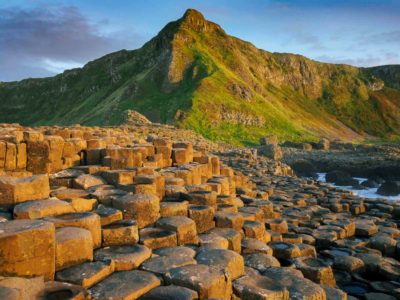
How To Visit the Giant’s Causeway in Northern Ireland
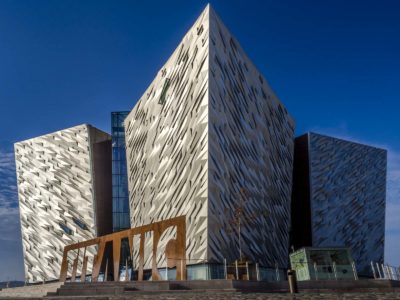
38 Best Things to Do in Belfast, Northern Ireland
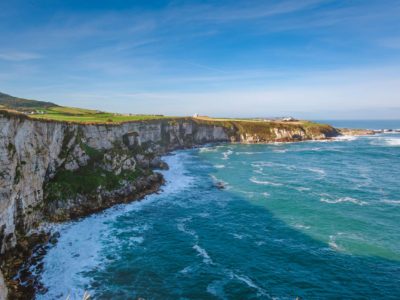
The Ultimate Causeway Coastal Route Itinerary, Northern Ireland

11 Top-Rated Tourist Attractions in Northern Ireland
Written by Andrew Birbeck and Lura Seavey Updated Jul 13, 2022
Eschewed by visitors for years, Northern Ireland has made a comeback following The Good Friday Agreement of 1998, a power-sharing contract seeking to promote peace. Since then, Ulster (as Northern Ireland is also known) has rebounded both economically and culturally and is one of the world's must-see destinations.
Most recently, Northern Ireland's role as the filming location for Game of Thrones has brought another wave of tourists. For those in the know, even during the bad times, this corner of Ireland was always high on the sightseeing agenda. Legendary natural attractions, such as the mystical Giant's Causeway , join newer arrivals, such as Belfast Titanic, as top things to do.
The power-sharing government has invested massively in making Ulster attractive to visitors. There's great shopping, world-class restaurants, a remarkable history and culture, outstanding golf, and a lively music scene. These add up to plenty of places to visit in Northern Ireland for families, couples, and solo travelers, all of whom can be assured of a warm and friendly welcome.
If visiting from the Irish Republic, remember you're crossing the border into a separate sovereign country. Here, you'll need pound sterling, not the Euro as used in the south.
Learn more about the best places to visit with our list of the top attractions in Northern Ireland.
1. The Giant's Causeway
2. the causeway coast and dunluce castle, 3. carrick-a-rede rope bridge, 4. the titanic belfast, 5. the glens of antrim, 6. carrickfergus castle, 7. ards peninsula, 8. the ulster folk museum and transport museum, 9. dark hedges, 10. londonderry (derry), 11. lough erne, more must-see destinations near northern ireland.
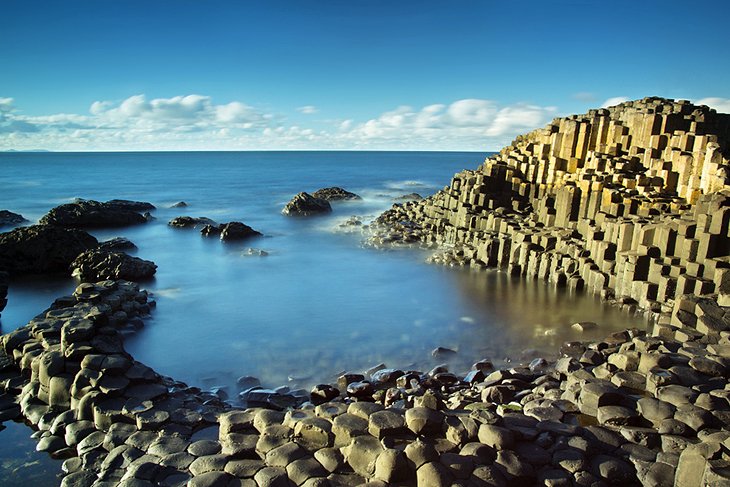
Famed around the world for its columns of layered basalt, the Giant's Causeway is Northern Ireland's only UNESCO World Heritage Site . These polygonal-shaped natural features (there are around 40,000 of them) were created by a volcanic eruption 60 million years ago. Today, they are the prime focus of a designated Area of Outstanding Natural Beauty.
Three different periods of volcanic action birthed the Lower, Middle, and Upper Basalts. The Middle Basalt rock forms the famous amphitheaters of columns shaped like hexagons. That's the science. However according to legend it was carved out by the mighty giant Finn McCool who left behind his ancient home to do battle with his foe Benandonner across the water in Scotland.
Various names bear testament to this engaging myth: The Giant's Boot, The Wishing Chair, The Camel, The Giant's Granny, and The Organ high up on the cliffs. Weather permitting, you might even see Scotland in the distance.
Be sure to pop into the modern-looking Giant's Causeway Visitor Centre, too. This state-of-the-art facility is not only architecturally stunning, boasting a design that reflects the area's unique topography, but also provides a fascinating insight into the history of the area (audio guides are provided).
Address: 44 Causeway Road, Bushmills, Antrim
Official site: www.nationaltrust.org.uk/giants-causeway
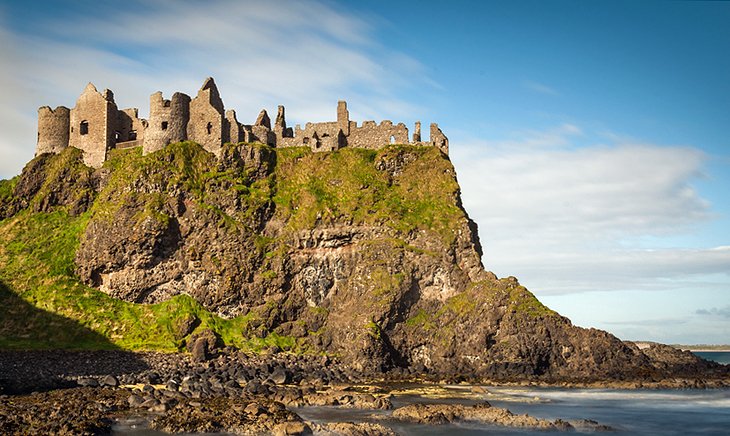
Naturally, most visitors' first stop along this scenic coast is the World Heritage-listed Giant's Causeway . The surrounding coastline, however, is magnificent and shouldn't be bypassed. Many treats await, including the beautiful beaches, dunes, and rolling waves at Portrush (where there's a world-class golf course) and Portstewart . If you're feeling brave enough, either is perfect for a bracing dip.
An easy 10-minute drive west, through the picturesque village of Bushmills, brings you to ruined medieval Dunluce Castle (Dún Libhse). It's impossible to miss, perched precipitously on the cliff edge, the kitchen having plunged into the thrashing waves below one terrible night many centuries ago.
The only survivor, apparently, was the kitchen boy who was perched on the windowsill and had to be rescued. Exterior shots of the castle were used in Game of Thrones .
Address: 87 Dunluce Road, Bushmills, Antrim
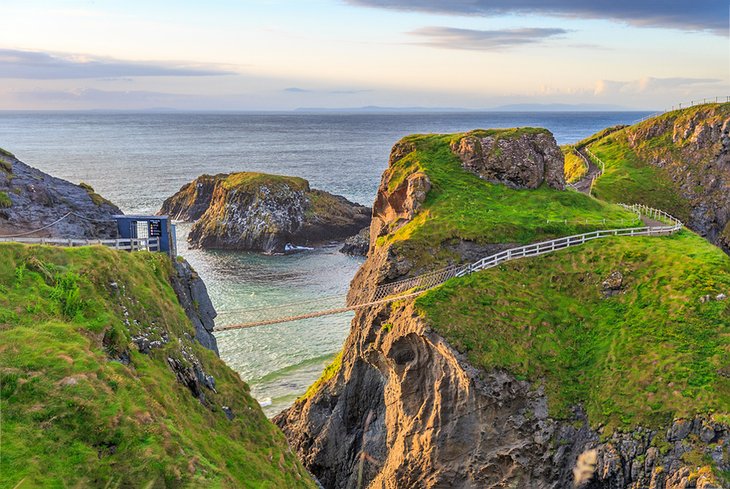
An easterly drive from the Giant's Causeway of around 15 minutes brings you to another of Ulster's must-sees, the vertigo-inducing Carrick-a-Rede Rope Bridge . Located near the beautiful coastal village of Ballintoy, this spectacular attraction, though, is not one for the faint-hearted.
The vertiginous rope bridge joins to a tiny island, where fisherman would catch salmon. While access to the grounds are free, if you dare to cross the bridge itself, a fee is required.
Address: County, 119a Whitepark Rd, Ballintoy, Antrim, Ballycastle
Official site: www.nationaltrust.org.uk/carrick-a-rede
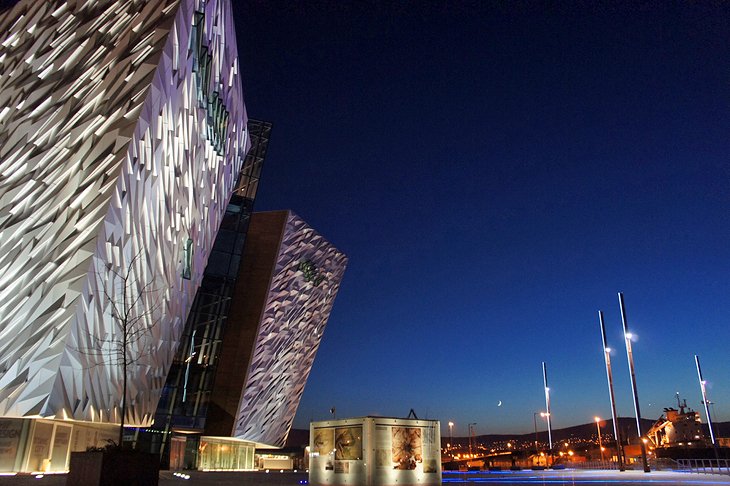
A striking landmark, this star-shaped building representing the White Star Line logo traces Belfast's maritime history and honors the story of the RMS Titanic. Belfast was once the powerhouse of British Empire shipbuilding, a fact that can't be missed in this part of the city.
There are nine interactive exhibitions on this spot where the infamously ill-fated ocean liner Titanic was built. Enjoy a guided tour around the slipway and dry-dock and, for an additional fee, visit the SS Nomadic . Built in 1911, this tender would carry passengers from shore to their waiting ocean liners.
There's a restaurant, café, and gift shop located on-site, too. This truly is a world-class tourist attraction.
Address: 1 Olympic Way, Queen's Road, Belfast
Official site: http://titanicbelfast.com/
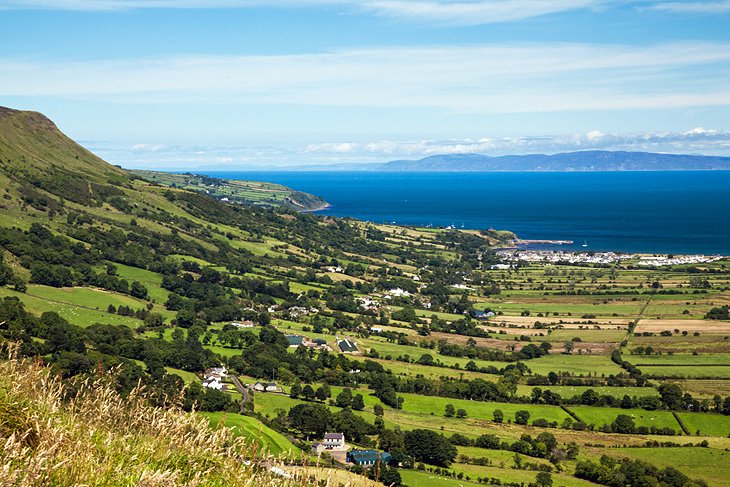
It's not just the North Antrim coastline that beguiles. Inland are the nine Glens of Antrim - usually referred to simply as "the Glens" - each exuding its own charm. Drive from Ballycastle towards Larne along the main A2 coast road, and serene lakes, tumbling waterfalls, forest trails, and rolling hills await. Glenariff , the "Queen of the Glens," is the most famous of the nine.
Along the way, notice the Glendun Bridge, an excellent example of innovative design and construction. Ballypatrick Forest Park has a 10-kilometer loop drive around Carneighaneigh Mountain, which is especially scenic.
The small seaside resort town of Portrush , on the County Londonderry border, is also worth a visit. It's home to the Royal Portrush Golf Club and one of the world's most challenging links golf courses, the Dunluce Links.
Official site: www.nidirect.gov.uk/articles/ballypatrick-forest
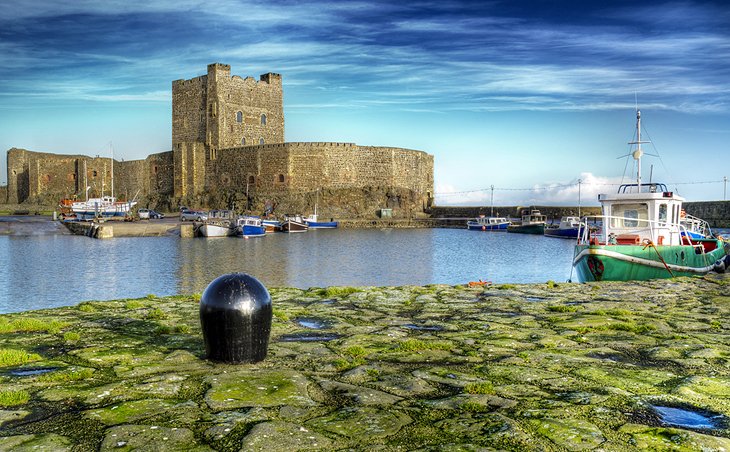
Around 20 minutes' drive from Belfast is the substantial town and port of Carrickfergus, home to imposing Carrickfergus Castle. One of the best-preserved medieval structures in Ireland, this Norman castle has seen off foes over eight centuries.
Perched near the shore and dominating the town, the fortress is still intact and the recreated banqueting hall is a particular treat, especially for kids. You can pick up an audio guide at the visitor center and explore the interior and battlements at your leisure.
Nearby is the Andrew Jackson Centre , the reimagined ancestral home of the 7th president of the USA.
Address: Carrickfergus Castle, Marine Highway, Carrickfergus, Co. Antrim
- Read More: Top-Rated Tourist Attractions in Belfast
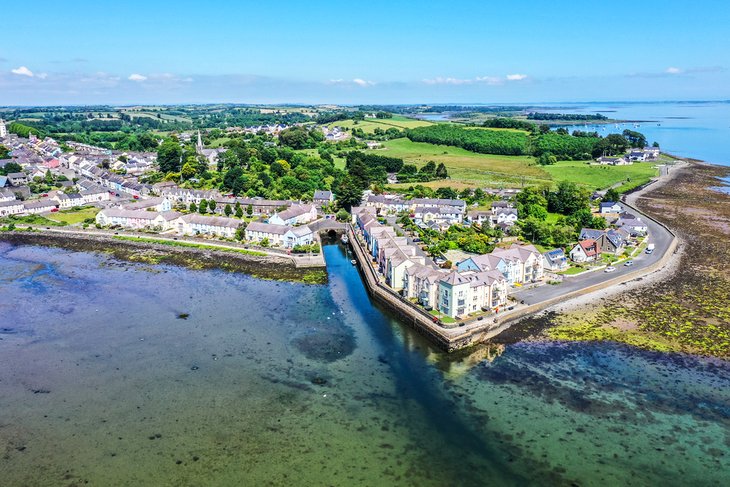
South of Bangor, at Donaghadee, is the start of the 32-kilometer-long picturesque Ards Peninsula. From Donaghadee, a road runs along the Irish Sea coast to Ballywalter with its beautiful beach, Ballyhalbert, and finally Cloughy, where it turns inland to Portaferry.
Serene 18th century Mount Stewart House and Gardens is well worth stopping off to admire and it's only a 10-minute drive or so from Ballywalter. On the west shore of the Strangford Lough is the resort of Killyleagh , with Hilltop Castle overlooking the town. On a good day, you'll see the famous Mourne Mountains shimmering in the distance.
Portaferry is on the peninsula's southern tip where there's a ferry link to Strangford. Either that or make the drive, which skirts the west side of the peninsula by the shores of Strangford Lough .
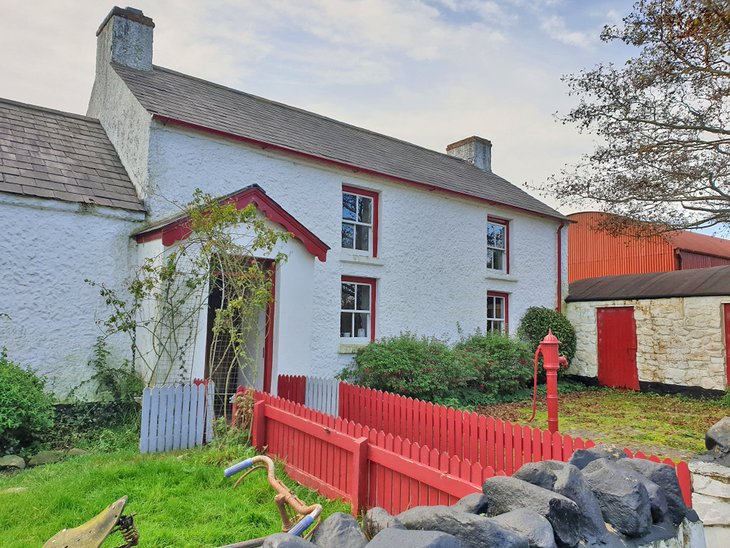
Around 15 minutes' drive from Belfast city center brings you to this living history museum, which allows visitors to experience Ulster life more than 100 years ago. Tourists can stroll the village , which is home to nearly three dozen structures, including both restored historic buildings and reproductions.
Among them are laborers' cottages, working farms, rural schools, and village shops, many of which feature interpreters who go about their day in an early 19 th -century life. Visitors can ask questions and learn about their various trades, including basket-weaving; the carpenter's shop; and a print shop, where you can watch them work.
Right next door is the Transport Museum , where you can clamber aboard steam locomotives and explore its impressive collections of electric trams, fire engines, motorbikes, beautiful vintage cars, and horse-drawn carriages. If you're visiting both sites in one day, leave one to two hours to explore the transport museum.
The same non-profit foundation also operates two other excellent museums, including a living history museum in Omagh, the Ulster American Folk Park . This is dedicated to the mass emigration of Irish to North America during the 18 th and 19 th centuries and includes homes, workshops, and other buildings with costumed interpreters. The most fascinating exhibit here is the full reproduction of an emigrant ship, allowing visitors to see and feel what it was like to make the arduous ocean crossing.
In Belfast, there is also the Ulster Museum , which contains exhibits about Northern Ireland's natural history and cultural heritage in a traditional museum setting.
Address: 153 Bangor Road, Holywood, Belfast
Official site: http://nmni.com/uftm
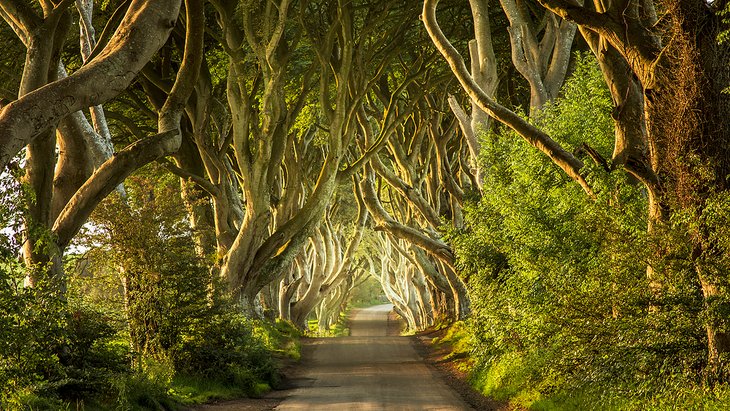
The sight of Dark Hedges' centuries-old beech trees dramatically enveloping the road is so fantastical that even the best photos don't seem real, appearing to be detailed illustrations taken from the pages of a fantasy story instead of a living tunnel that you can walk through in the real world.
Originally planted by the Stuarts in the 18 th century , the lane was designed with the express purpose of inspiring awe in travelers as they approached the family's estate. Time has only added to this effect, and today it is one of the most photographed sites in Northern Ireland . Its beauty and grandeur have also made it the perfect backdrop for film and television, most recently featured in Game of Thrones as the "King's Road."
Today, it is a pedestrian-only lane that is free to visit and open to the public at any time of day or night.
Address: Bregagh Road, Stranocum, Ballymoney BT53 8PX, United Kingdom
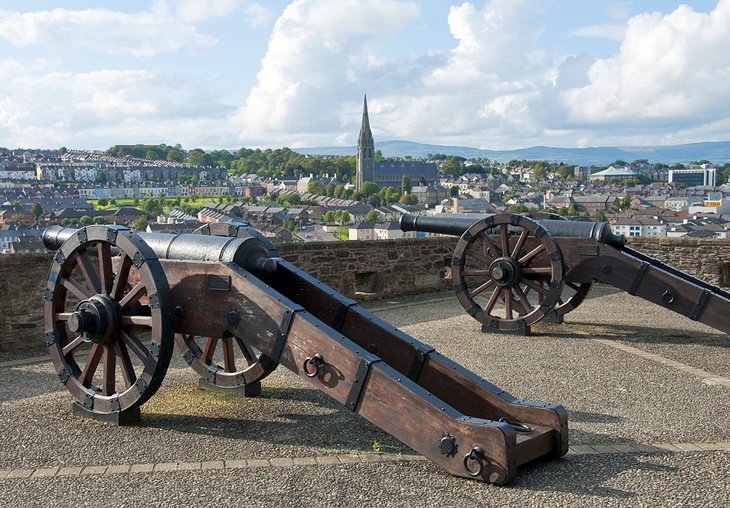
The second city of Northern Ireland, Londonderry – or Derry, as it's more commonly known locally – lies where the River Foyle opens out into the sea-lough of the same name. The town has been robbed of part of its natural hinterland of Donegal by the division of Ireland, yet remains an important port and industrial center with a traditional textile industry, chemical and mechanical engineering plants, and ceramics factories.
With its attractive surroundings it's a popular tourist center and a good base for trips into the Inishowen Peninsula and Donegal in the Republic of Ireland. The town itself has an almost completely preserved circuit of medieval walls and a number of interesting old buildings.
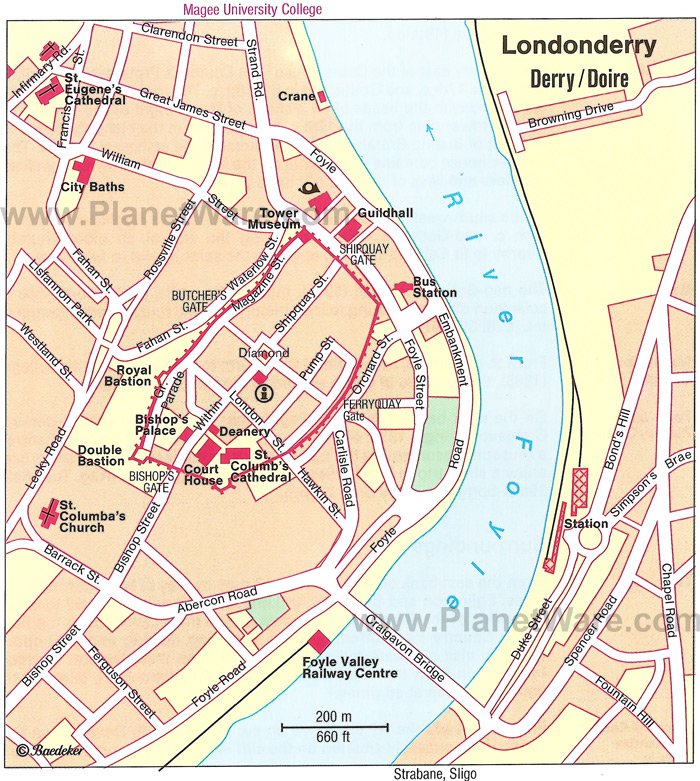
Two connected lakes combine to form Lough Erne, in County Fermanagh, a favorite for fishing, kayaking, or exploring on a day cruise . Castles and manor houses dot its banks, and its islands are a main attraction.
A 12th-century round tower dominates Devenish Island's ruined Augustinian priory, and mysterious carved stone figures on White Island and Boa Island were the work of Celts between AD 400 and 800. The 39-mile Shannon Erne Waterway connects Lough Erne to the River Shannon in Ireland.
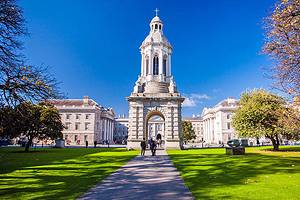
Once you have seen the highlights of Northern Ireland, you may want to cross into the Republic of Ireland and explore its capital, Dublin . Or you might consider the options available by ferry from Belfast. Two ferry routes connect Northern Ireland to Scotland , one from Belfast and the other from Larne, each about a two-hour trip. Ferries also depart Belfast for Liverpool , in England , and twice a week ferries travel to the Isle of Man , in the Irish Sea, halfway between England and Ireland.

More on Northern Ireland
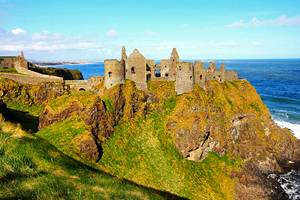

Home » Itineraries » Northern Ireland and Ireland Driving Itinerary
Northern Ireland and Ireland Driving Itinerary
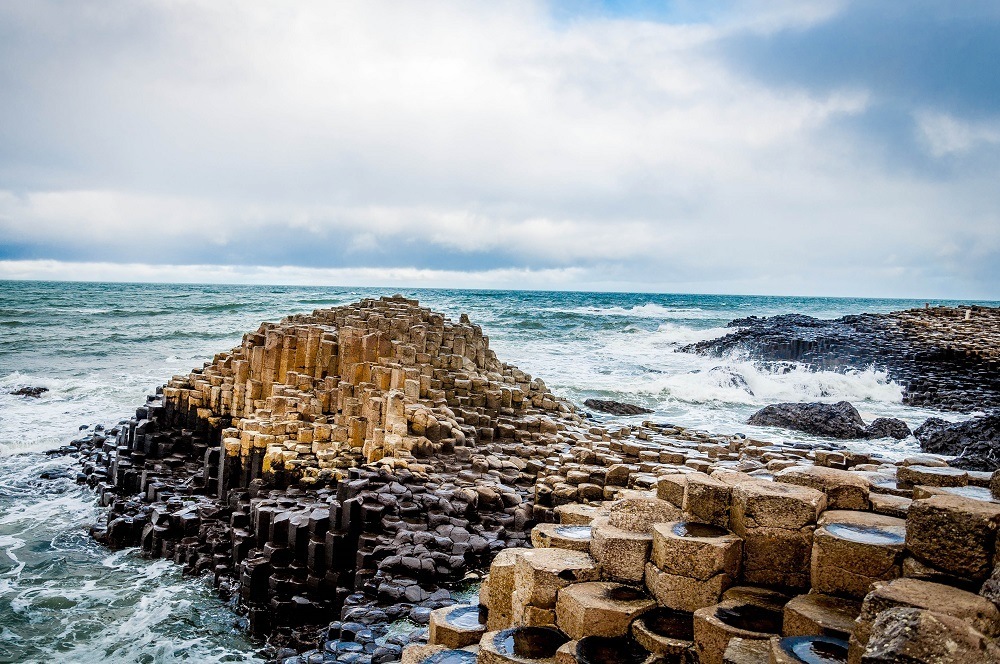
Ireland is a magical place full of striking landscapes, beautiful coastline, and the nicest people we’ve met anywhere in the world. There’s a reason it’s on so many people’s bucket lists. During our first Ireland trip, we hadn’t even left before we began talking about when we could return to see other parts of the country plus Northern Ireland, too. We finally had the opportunity to make our 11-day trip to the Emerald Isle a reality. Here’s our Northern Ireland and Ireland road trip itinerary to help you plan your travels.
An important note for drivers: a good GPS that allows you to input coordinates will go a long way with this route.
Driving Tour of Ireland and Northern Ireland
Day 1: celtic ruins west of dublin, day 2: the countryside, day 3: dublin, day 4: powerscourt and dublin distilleries, day 5: belfast, day 6: belfast and portrush, day 7: drive the antrim coast, day 8: derry, day 9: donegal and lough eske, day 10: slieve league and sligo, day 11: back to dublin, ireland travel recommendations.
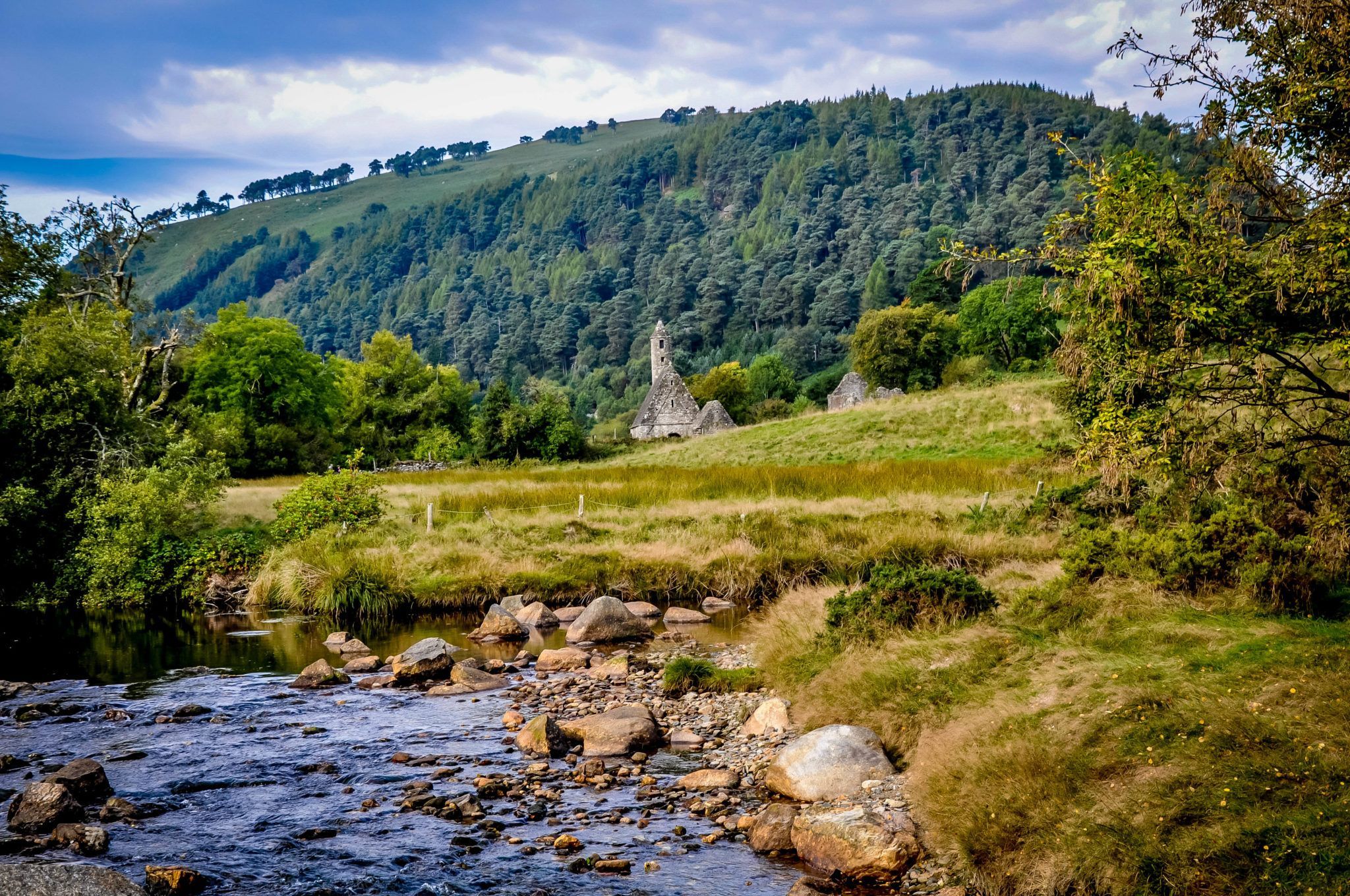
Arriving in Dublin, we immediately rented a car to head around Dublin on the M50 beltway and then the R115 (the Old Military Road) up over Sally Gap and into the Wicklow Mountains in the direction of Kilkenny. The landscape in this part of the country is beautiful, as you pass mountain streams and wind through patches of forest and up and down the undulating hills. Everything is just so green.
We stopped in the mountains to explore the Celtic ruins in the Irish countryside . Glendalough, known for its round tower, was a monastic settlement founded in the 6th century. Although it is a popular place, we were nearly alone as we explored the grounds of Glendalough, marveling at its old tombstones and Celtic crosses.
Our next stop was Baltinglass Abbey, a 12th century ruin which was once one of the richest churches in Europe. The first night was in the medieval city of Kilkenny at the Alcantra B&B.
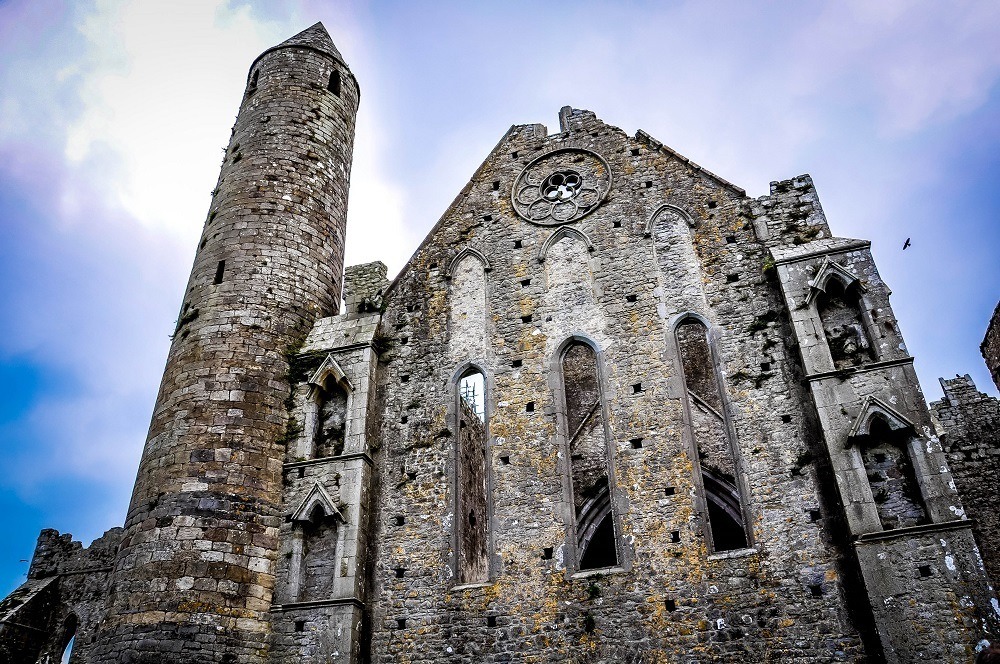
Our Irish road trip continued as we headed out on the scenic R697 to the Priory of Kells. The 12th-century ruin—one of our favorites—was the largest and most important Augustinian monastic site in Ireland . Currently undergoing restoration, it’s a magnificent sight to see.
After a stop at Knockdrinna cheese shop in Stoneyford to pick up a picnic, we were off to our next destination on our Ireland itinerary. We took the picnic over to Jerpoint Abbey, eating under the majestic tower.
In the afternoon, our destination was the Rock of Cashel. We took the scenic drive R691 over to the ancient hilltop site where we walked the grounds for about an hour, seeing the Round Tower, the Romanesque Chapel, and other important ruins along the way. In the afternoon, we took the M8 back to Dublin.

With two tours and a an awesome dinner show, we squeezed every moment out of the third day of our Ireland travel itinerary.
The day began with a walking tour of some cool, unexpected sights in Dublin with Le Cool Dublin. The beauty of this tour is that it changes every time. Its goal is to show visitors what’s hip and now in the city, so you may meet artists, visit markets, and see street art like we did, or you may see something completely different. A Le Cool tour is an awesome way to experience the city.
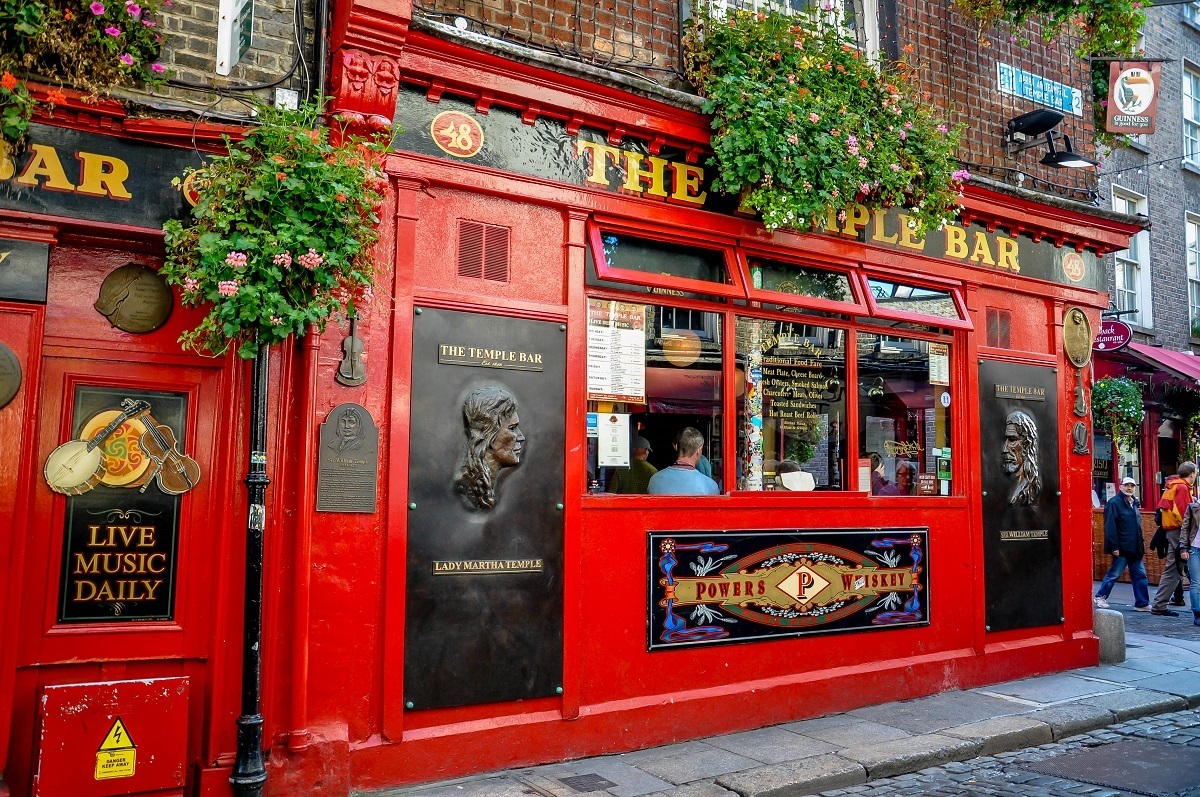
Because we hadn’t gotten enough steps in yet, we set out on an informative historical walking tour of Dublin in the afternoon. We saw Dublin Castle, Christ Church Cathedral, and many of the other can’t-miss Dublin sights. It was a perfect complement to our morning of more local Dublin experiences.
In the evening, we finished up our day of walking with entertainment. The Dublin House Party is a unique combination of a hearty Irish dinner and a show featuring some of the best Irish musicians and dancers in the city. What could be a cheesy experience is instead very well-done, showing visitors the importance of Irish music and the fun that goes along with it. The Dublin House Party is great for couples and families.
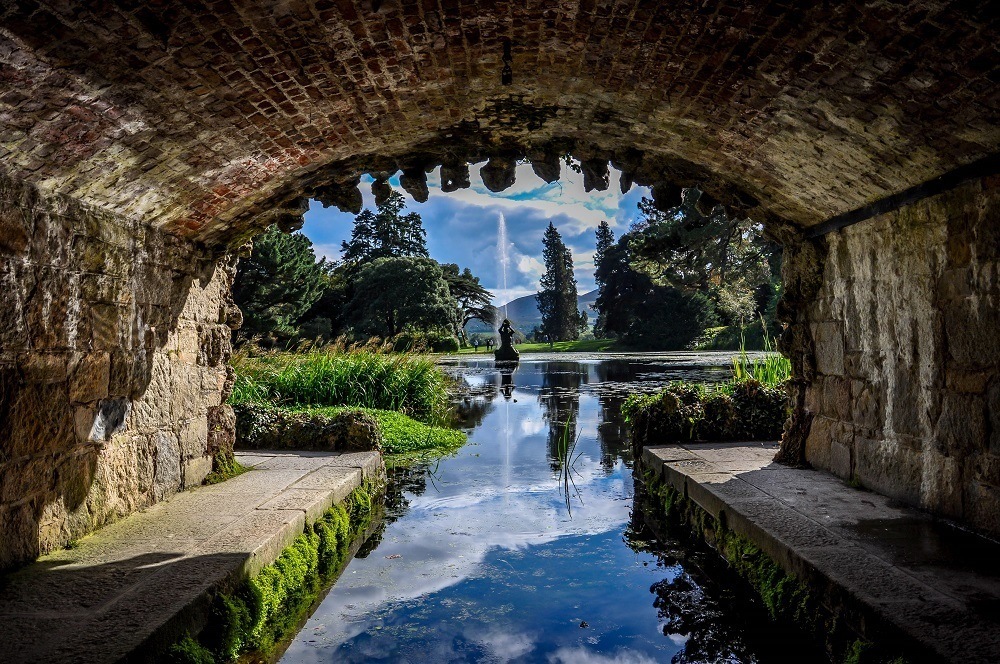
Our day began at the peaceful Powerscourt Estate and Gardens . About an hour south of Dublin, the sprawling estate is a brilliant place to enjoy nature. It tops National Geographic’s list of the world’s best gardens.
Punctuated by fountains, ponds, and an endless number of trees and flowers, the 47 acres of gardens at Powerscourt are a lovely place to wander. Amidst a setting of 200-year-old trees, you’ll even find Ireland’s highest waterfall.
In the afternoon, we returned to Dublin to imbibe at The Jameson Distillery Bow St. and the Guinness Storehouse …because that’s what you do in Ireland.
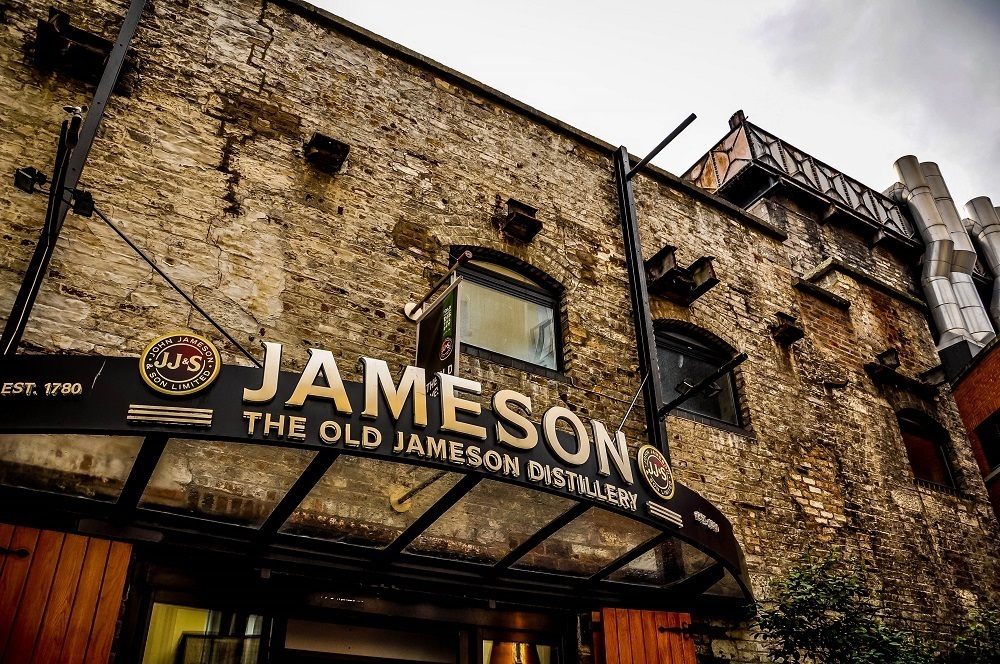
At Jameson Distillery, begun on Bow Street in 1780, we got a sense for the history of the place and what was required when John Jameson started distilling here over 200 years ago. It was a great crash course in making one of the whiskeys that Ireland is so famous for. Plus, we got to do a comparative tasting of their wares.
The Guinness Storehouse is the most popular tourist attraction in Dublin for good reason. This seven-floor experience takes you through all the steps of brewing Ireland’s iconic dark beer. We saw displays about all of its ingredients and the history of the beverage, culminating in the opportunity to pour our own pint on the top floor, which has a great view over the city.
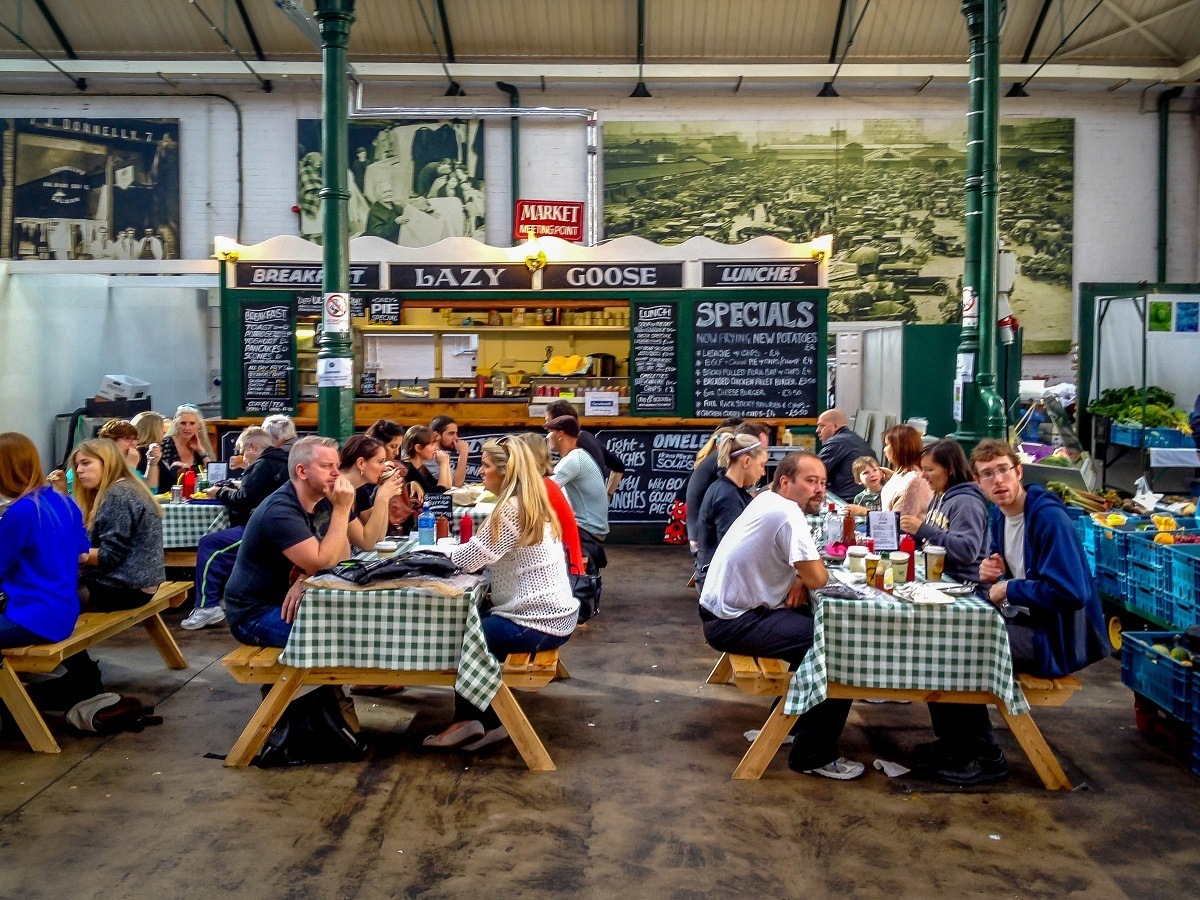
We woke up early and set out driving from Dublin to Belfast on the M1. As soon as we arrived in Northern Ireland, we got busy sightseeing.
It was lunch time, so it was a perfect excuse for one of our favorite activities–visiting local markets around the world. St. George’s Market in Belfast has operated at the same site for an incredible 400 years. One of Belfast’s oldest attractions, St. George’s showcases the best in Northern Irish products. From food stands to fresh produce, the market has a little bit of everything delicious with a heavy dose of national pride thrown in.
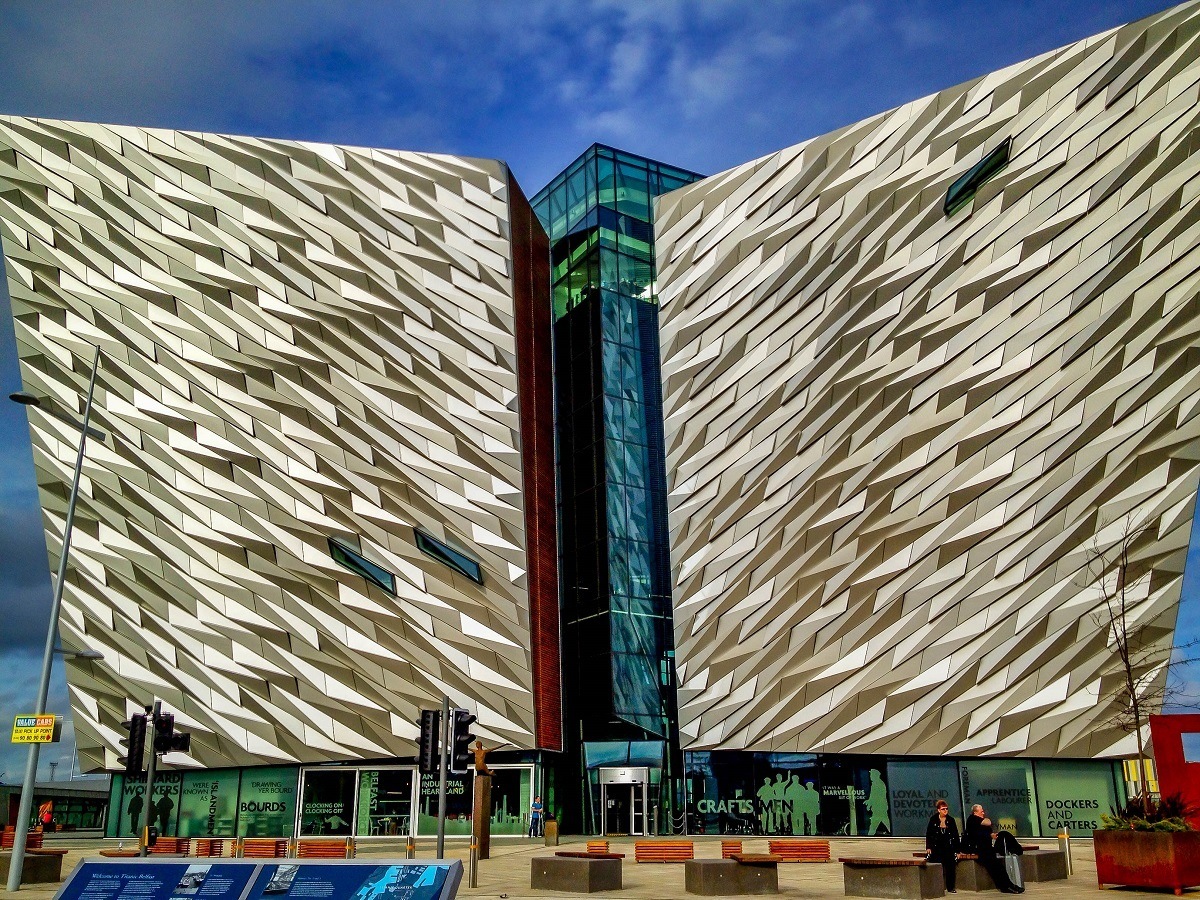
The second stop on our Northern Ireland trip was Titanic Belfast. The leading tourist attraction in the world, the Titanic Museum tells the story of the ill-fated ship on the site of the former Harland & Wolff shipyard (its builder). The fascinating museum has exhibits about the building and launch of the Titanic as well as vivid accounts of its sinking and the aftermath of the disaster.

Day six began with our highly-anticipated Black Cab Tour of the Troubles murals of Belfast with Paddy Campbell. Driving along the Shankill Road and other areas of Belfast, we saw mural after mural commemorating historical figures and participants in the decades of conflict that ripped apart communities in Northern Ireland.
Paddy presented an unbiased look at the issues on both sides–the mostly Protestant Unionists who wanted Northern Ireland to remain part of the United Kingdom, and the mostly Catholic Republicans who wanted Northern Ireland to become part of a united Ireland–which is a hard thing to do in a place that was as politically charged as Belfast. At the end, we got to guess his affiliation. We guessed wrong. We couldn’t recommend this eye-opening tour more.
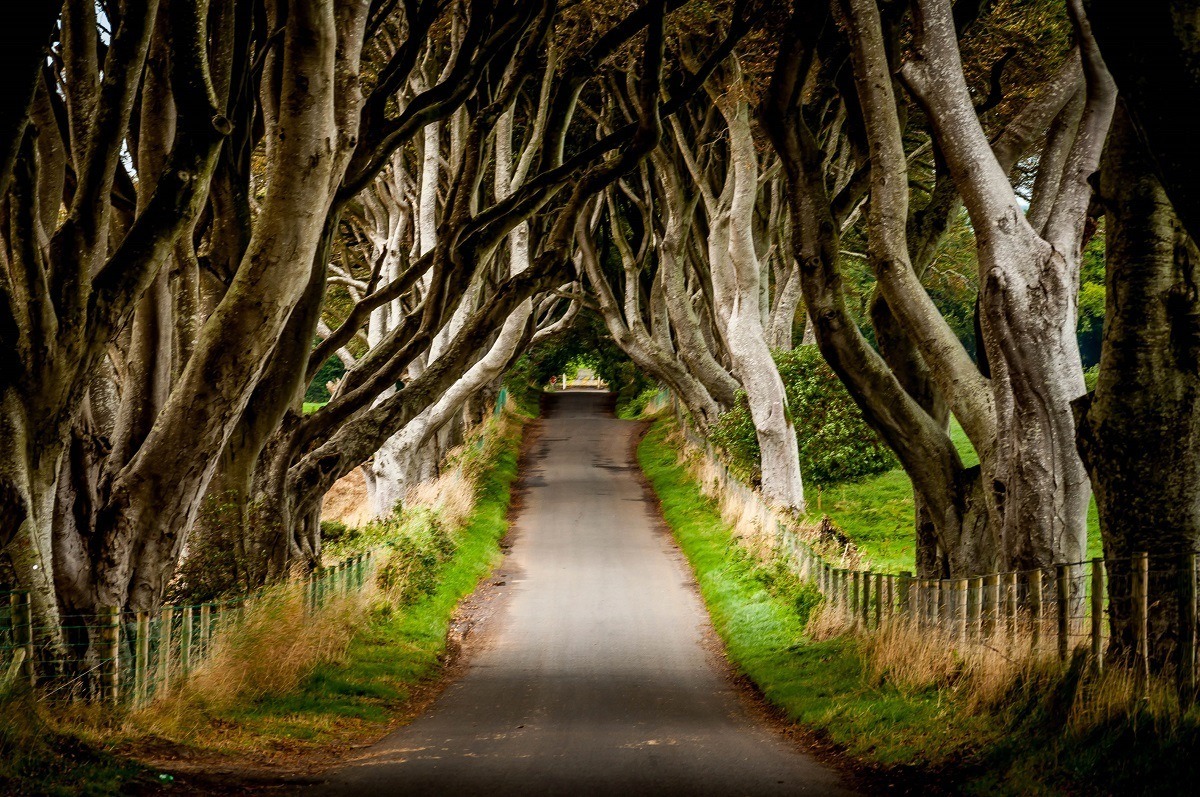
After lunch, we left Belfast headed north on the M2/A26 in the general direction of the Antrim Coast. We took a brief detour to the Dark Hedges to take some photos in this spot made famous thanks to its haunting beauty and its cameo as the Kings Road in the Game of Thrones .
We arrived in Portrush for the evening.
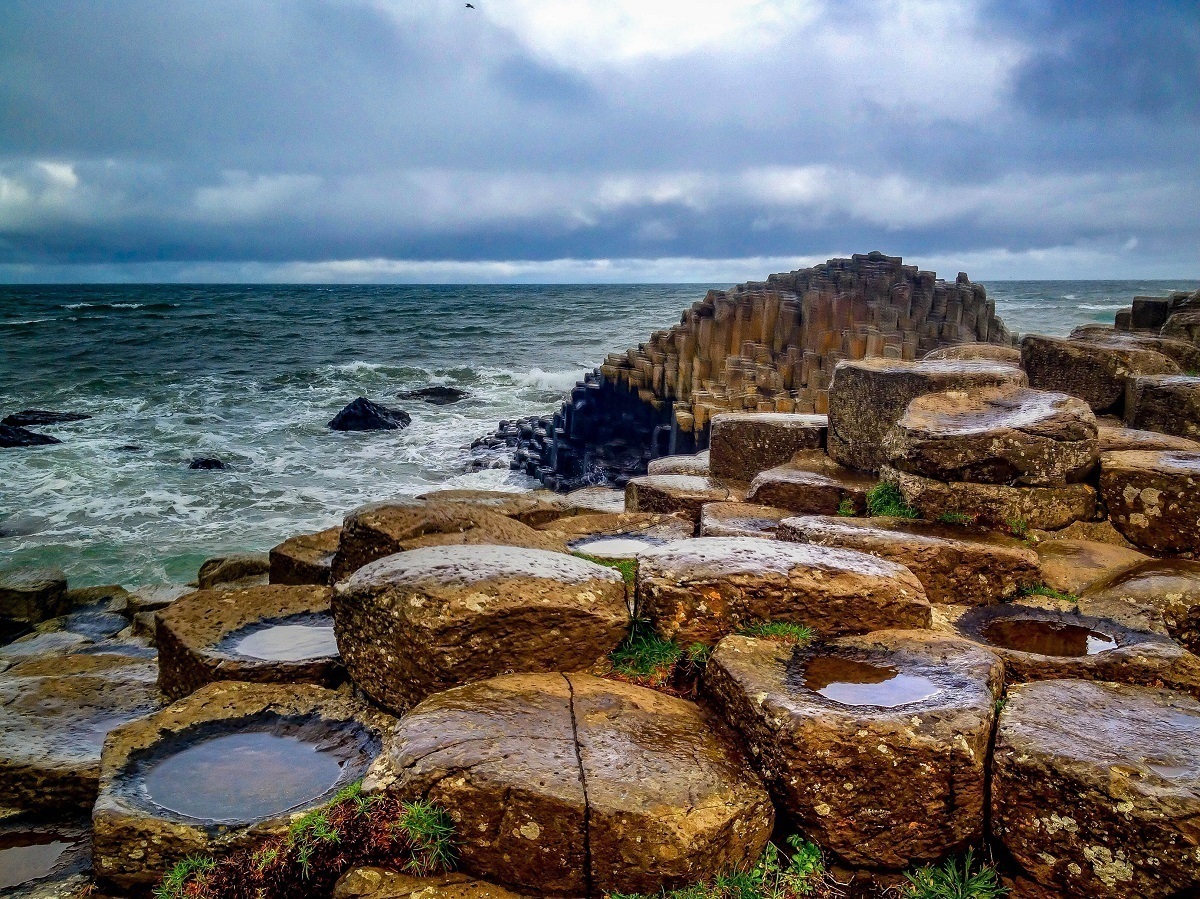
We left Portrush heading even further north on the Causeway Road to Giant’s Causeway. In the drizzle, the spectacular basalt columns of the Causeway took on a moody feeling as we watched the waves crash nearby. We spent at least an hour just climbing up and down the unique formation. Giant’s Causeway is not to be missed on any trip to Northern Ireland.

Nearby, we visited the Carrick-a-Rede rope bridge. First erected by salmon fishermen in 1755, the bridge hangs (apparently precariously) between rocky outcroppings in the north Atlantic. Crossing is an adventure and not for the faint-hearted, but if the winds are calm, it’s not as scary as it looks.
After spending much of the rainy day outside, we visited The Old Bushmills distillery to warm up in the late afternoon. Unlike Jameson, which we visited in Dublin, Old Bushmills is also a working distillery, so the smell of sweet mash hung in the air as we toured the factory. We saw the whole distillation and bottling process and ended with a perfect hot toddy in their tasting room.
It was a long, windy, wet day of amazing sights, culminating at a night at the charming Caw Cottage.
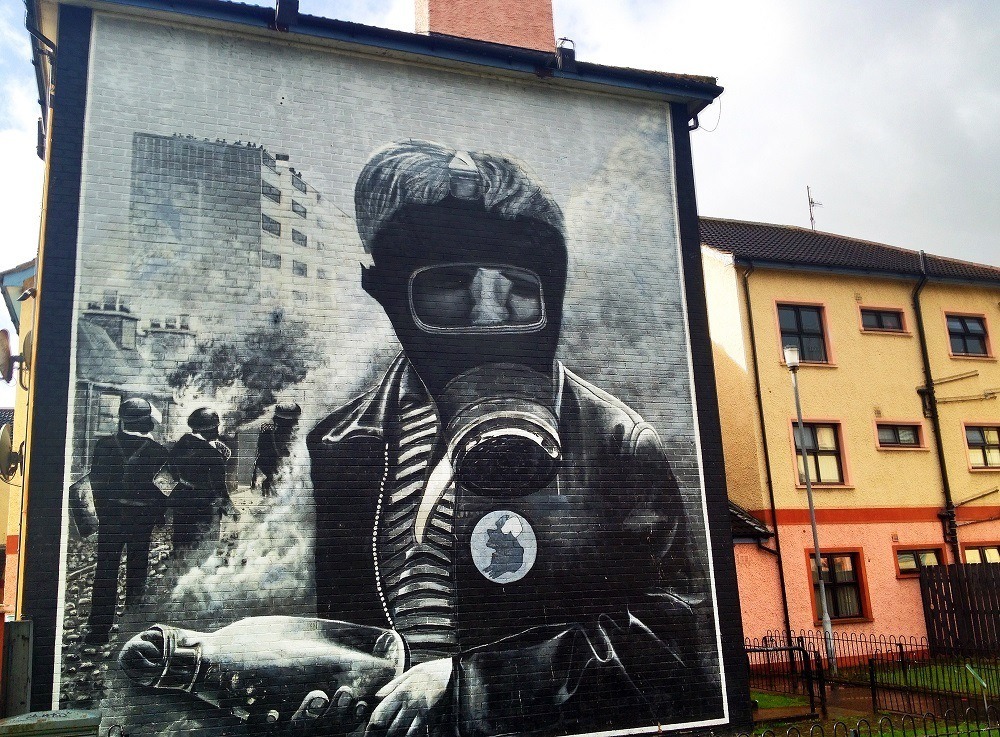
We woke up in Derry and actually stayed there for the full day – one of the only nights on our whole trip that we spent two nights in the same town.
We began the day with a rainy but thought-provoking tour of the Troubles Murals of the town. As in Belfast, Derry is filled with murals depicting imagery from both sides of the conflict. There are the Union Jacks of the Unionists and murals showing Republicans alongside civil rights leaders like Martin Luther King Jr.
Many of the murals in Derry are in the Bogside neighborhood where a group of artworks is dedicated to protesters who were killed on what is known as Bloody Sunday. British soldiers killed 14 people that day and wounded another 12—the incident is the subject of U2’s “Sunday, Bloody Sunday.”
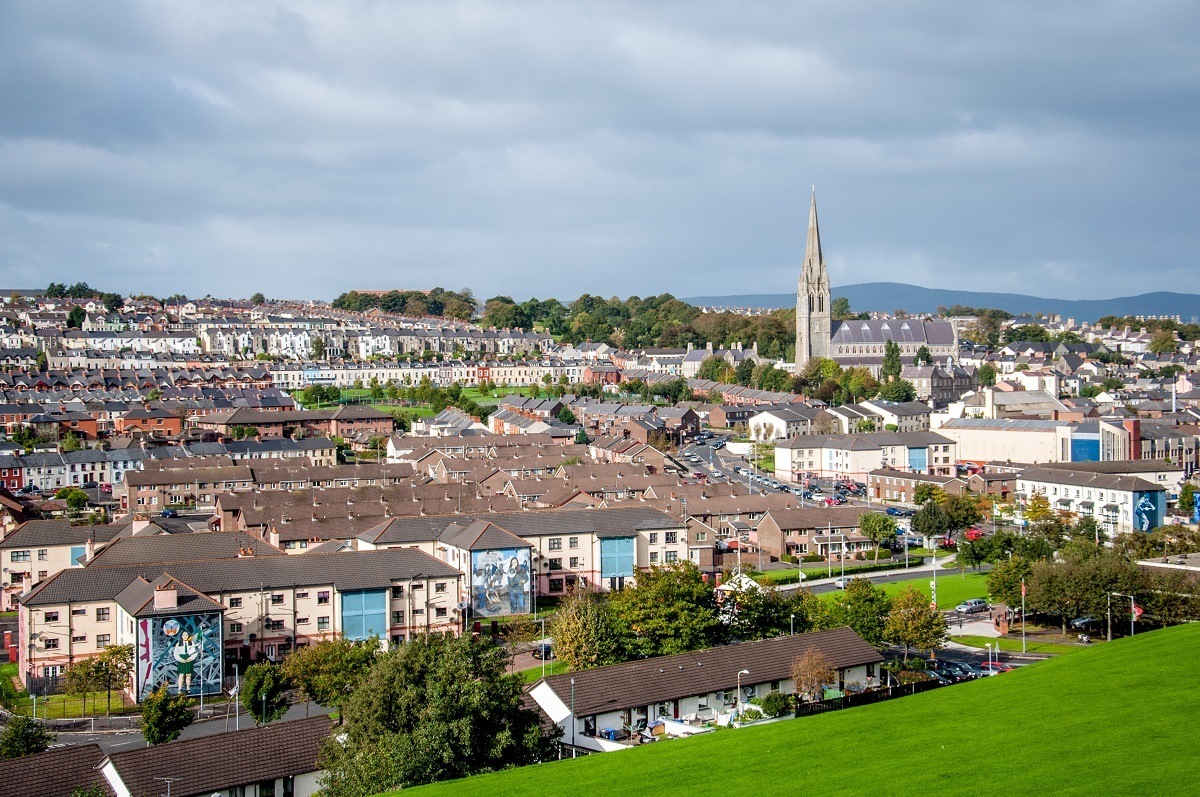
After seeing the murals, we joined in on a great historical tour of the city which took us by the top sights and allowed us to walk on part of the city’s 17th-century walls.
In the evening, we decided it was time for a bit of Irish music and made our way to Peadar O’Donnell’s bar.
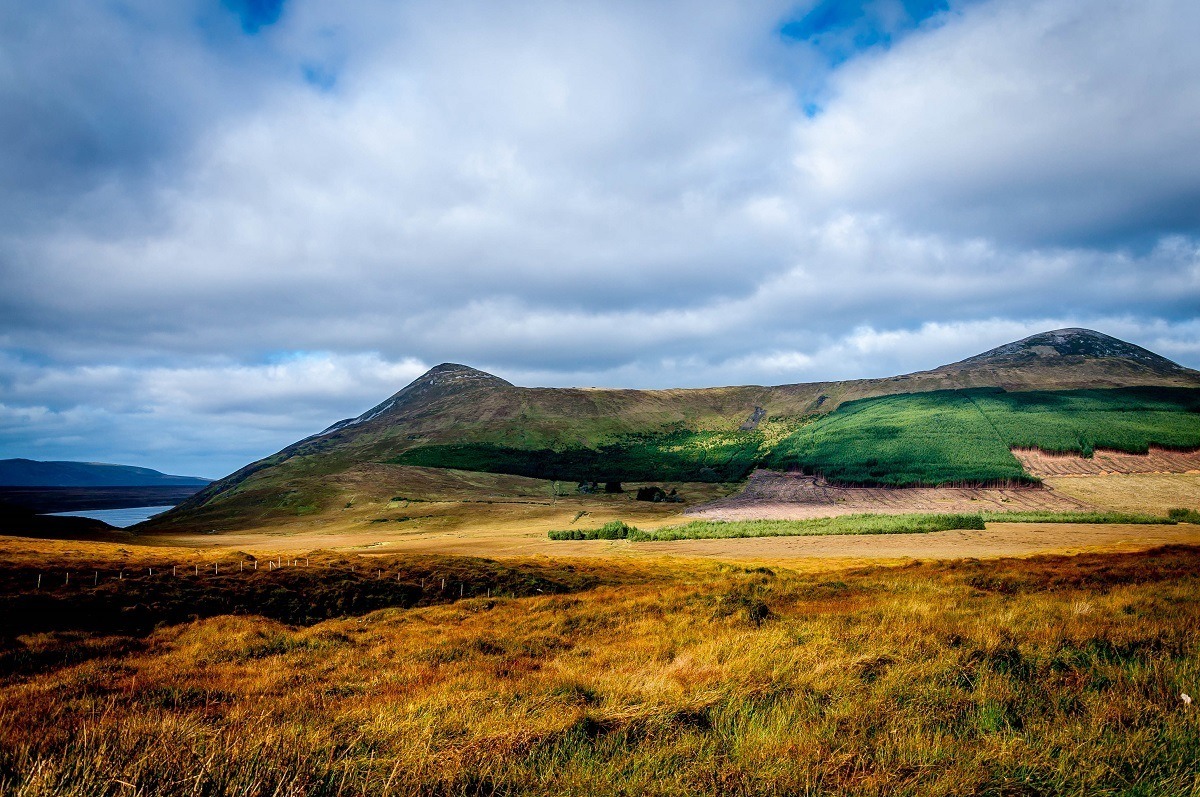
Leaving Derry (and beautiful Northern Ireland) on the N13/N56 road, we drove the rugged coast of the Donegal peninsula, part of the Wild Atlantic Way route . Our plan for the day was simply to drive and watch the landscape change, stopping in any village that caught our attention.
Along our drive, we encountered massive cliffs plunging into the ocean, small towns with picture-perfect harbors, and miles and miles of countryside turning from green to gold under the early autumn sun. It was absolutely gorgeous.
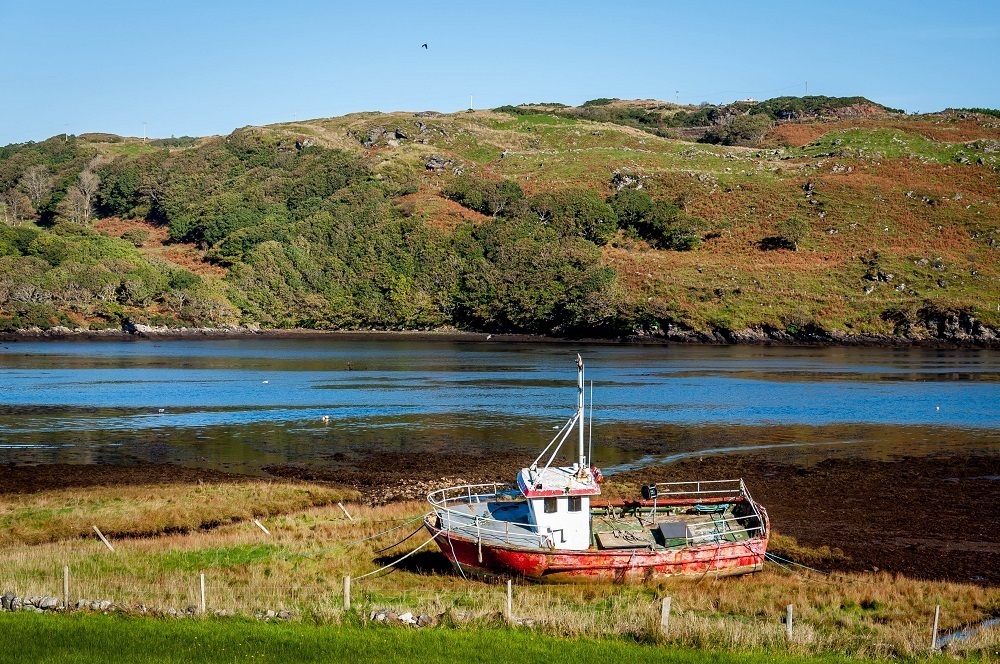
We spent the afternoon and night enjoying the luxurious Lough Eske Castle . This 5-star castle hotel, which traces its roots back to the 15th century, offers an immersive guest experience with an amazing spa, fabulous restaurant, and packages that include access to local parks and other castles. A night here is the height of luxury.
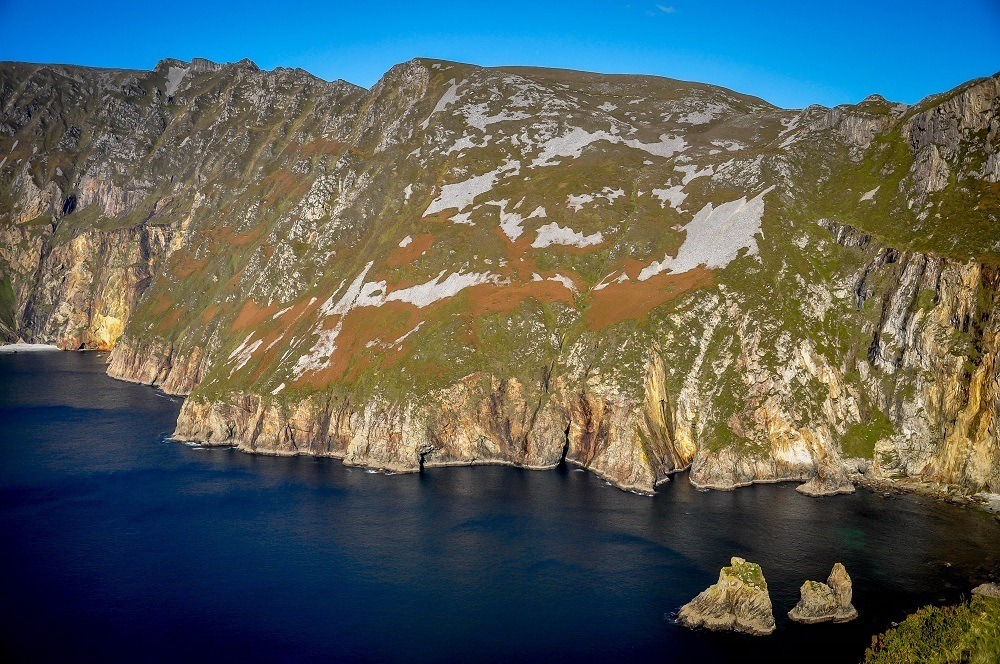
We spent the morning at Lough Eske Castle enjoying the sprawling grounds and their gourmet breakfast. Sooner than we were ready to leave (we would never have been ready), it was time to go again. This time, our destination was Slieve League.
Driving west along the N56/R263 road, we approached the giant cliffs of Slieve League (Sliabh Liag, in Gaelic), which are three times higher than their more well-known cousins at the Cliffs of Moher. From the top, there are magnificent views of the Atlantic Ocean, the Sligo Mountains, and Donegal Bay. It’s one of the must see places in Ireland .
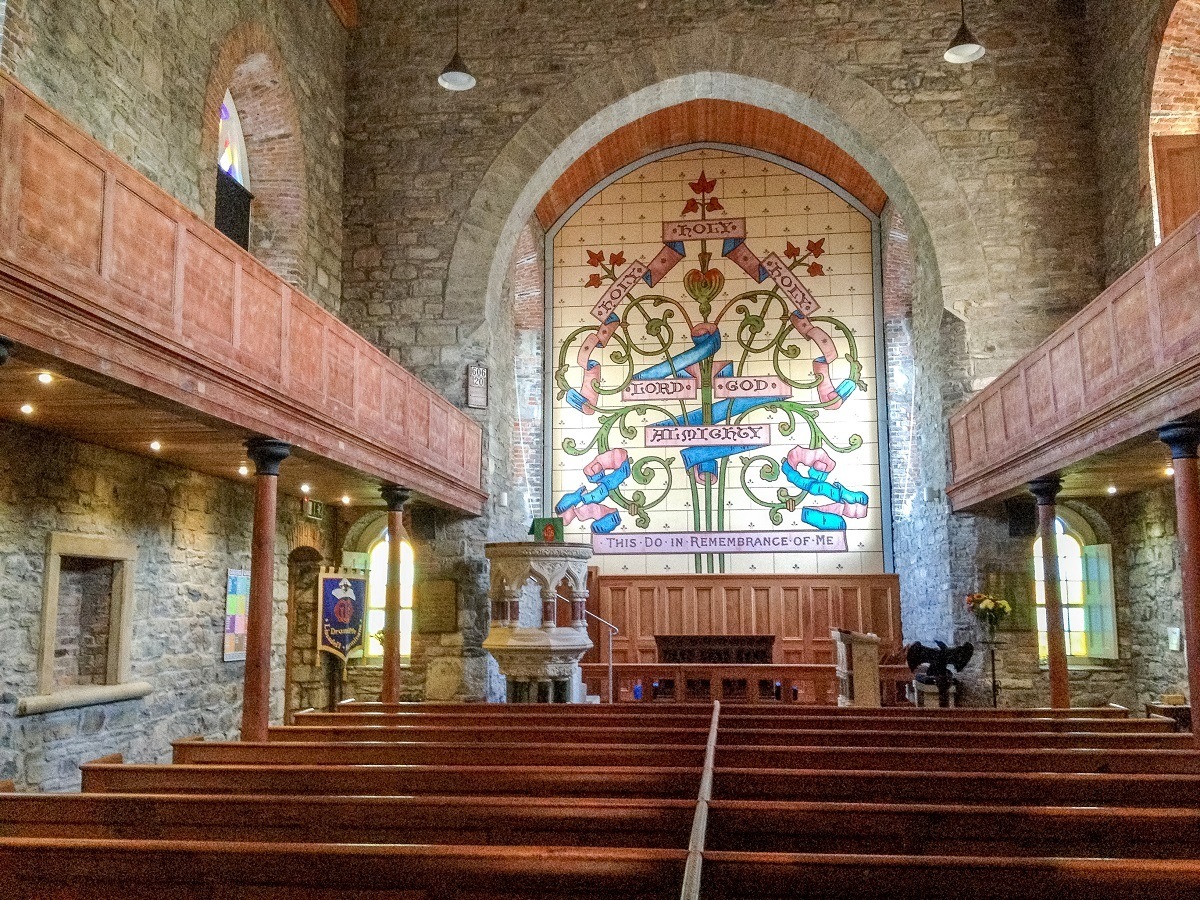
Another beautiful drive south found us in county Sligo. It was already late afternoon by the time we arrived. We had planned to visit the ancient Sligo Abbey, but it was under construction, so we went to St. Columba’s Church in nearby Drumcliffe instead. The small church with the bright stained glass is the final resting place of literary giant W.B. Yeats.
Markree Castle Hotel, another brilliant, ancient castle, was our home for the night in Sligo.
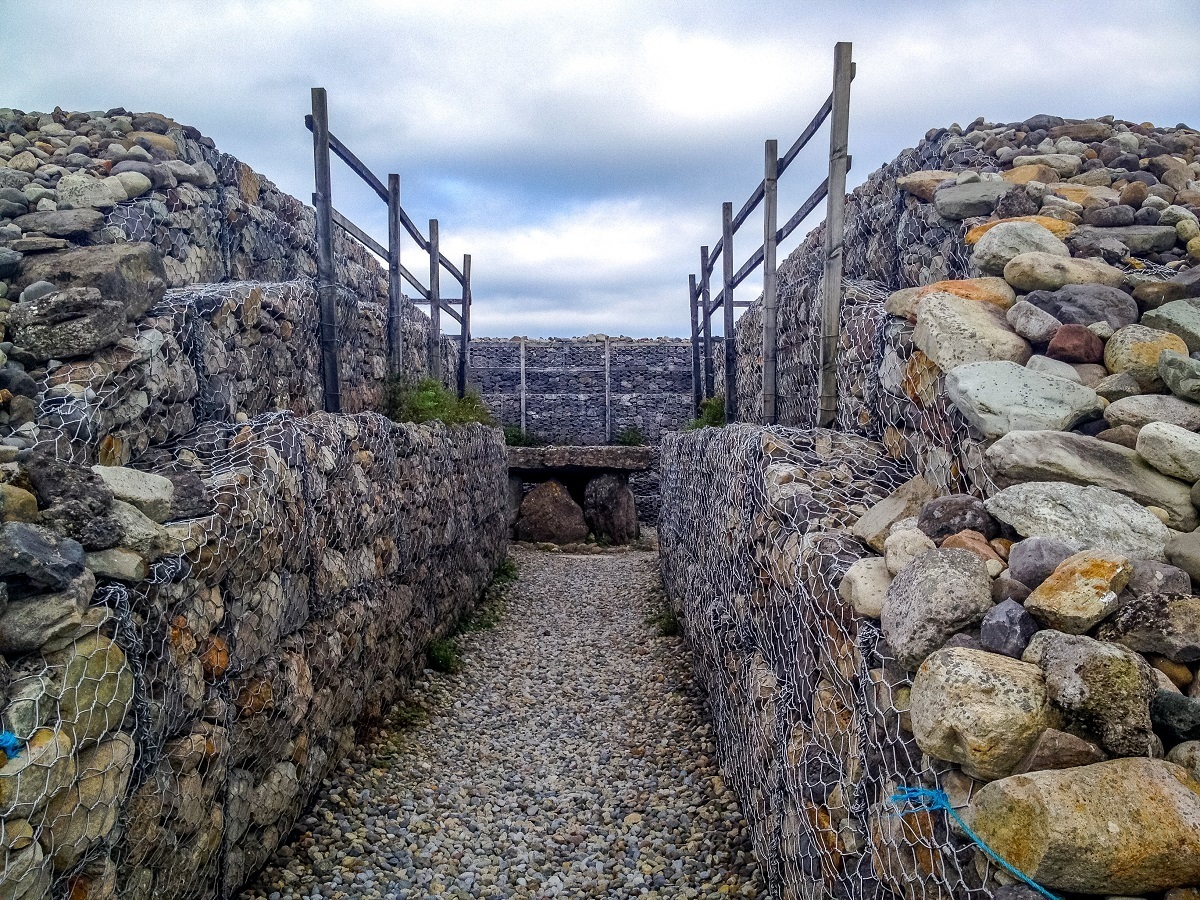
In the morning, we visited Carrowmore, the largest cemetery of megalithic tombs in Ireland. All the monuments here are estimated to be at least 5000 years old, which is mind-blowing. We didn’t find them quite as impressive as the huge megalithic passage tomb at Newgrange, but they are certainly worth a visit if your Ireland travels take you through Sligo.
After our visit to Carrowmore , we turned back on the N4 road toward Dublin. We returned the rental car at the airport and spent our final night in the capital. The evening was spent at the Brazen Head, Dublin’s oldest pub, seeing a dinner show about the history, myths, and fairy tales of this beautiful island.
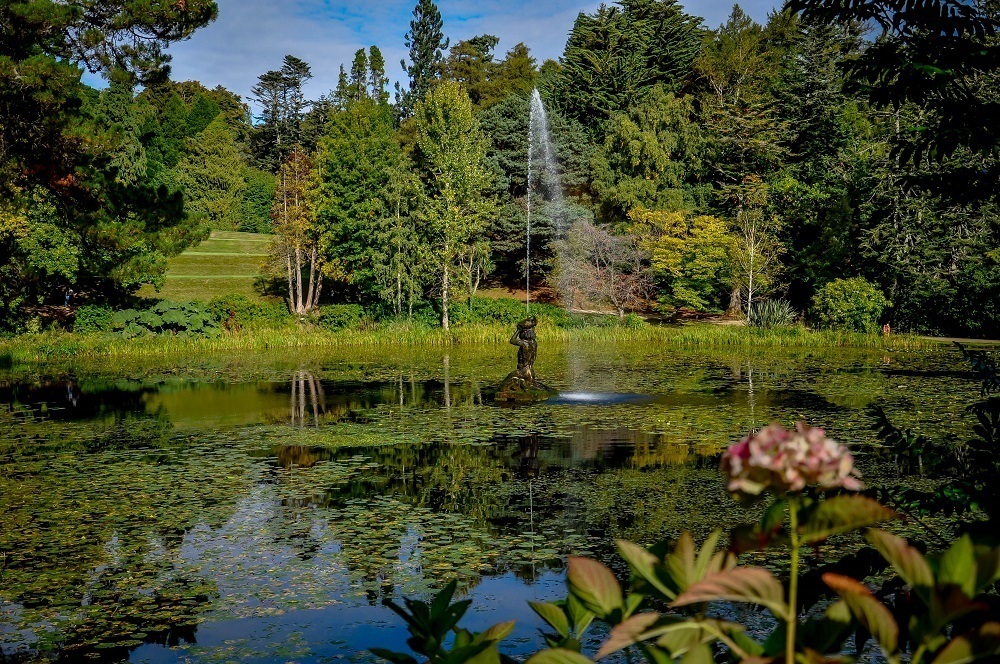
Hotels : Ireland is quite challenging in terms of accommodations. Unlike most countries, there are not a large number of big hotels. Instead, Ireland is full of a small, boutique hotels and B&Bs. We recommend looking at Booking.com for hotels, inns and B&Bs.
Rental Car : We recommend renting cars from brand name, larger international companies, or a comparison site like Auto Europe , which is known for its service. If you have a problem, they tend to be more reliable. Before you go, we recommend getting a copy of our book, The Essential Guide to Driving Abroad , which demystifies and simplifies the process of renting overseas.
Travel Insurance : Ireland is an amazing destination! While the country is extremely safe, car accidents are common. For this trip, we bought travel insurance from Travel Guard , which can provide you with coverage for unexpected medical expenses while on a trip because you never know what can happen.
Booking through these sites may earn us a few pennies, at no additional cost to you.
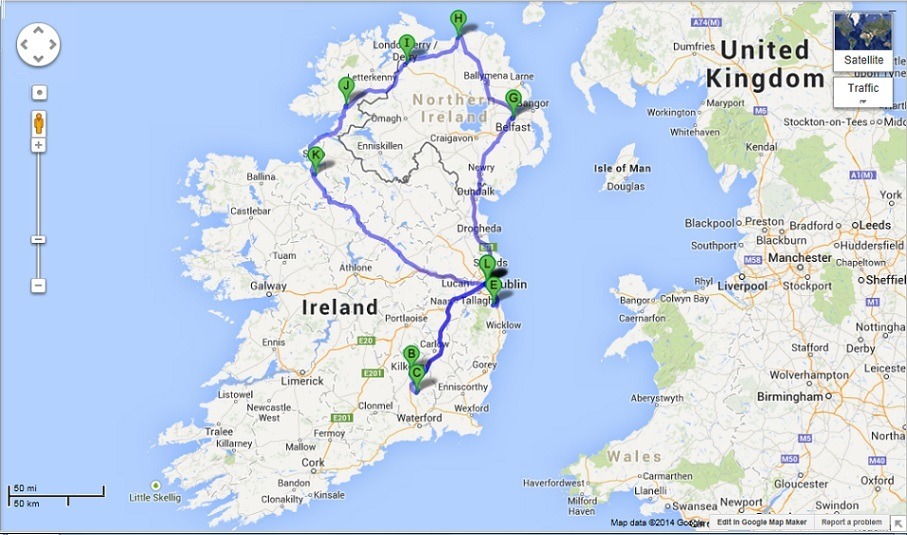
This site uses Akismet to reduce spam. Learn how your comment data is processed .
Karen Keene
Wednesday 31st of May 2023
Can you get around Ireland via train vs. renting a car to see the sights?
Lance Longwell
Thursday 1st of June 2023
Yes, but it really isn't recommended. The trains in Ireland connect most of the major cities and some spots in between. But they really don't service the countryside very well at all. If you want to see Ireland (AND you really don't want to drive), consider the bus. Bus travel in Ireland is efficient and inexpensive, and goes where the trains do not.
Abby Cooper
Sunday 15th of March 2020
This looks absolutely amazing! Very descriptive and your photos are beautiful. Giants Causeway is on my top ten list!
14 Places To Visit In Northern Ireland
Categories Antrim , Londonderry , Where To Go
Over the years, Northern Ireland has slowly emerged as a fascinating tourist destination. That’s with the help of the new Titanic Museum , and being featured as a setting in the hit fantasy series, Game of Thrones .
Northern Ireland is a small country and it’s part of the United Kingdom. Still, it is never lacking in things to see and do.
A lot of its attractions are pretty extraordinary, too.
From charming medieval towns to lake islands, stunning castles and dramatic coastal landscapes— these are some of the places to visit in Northern Ireland.
Things you'll find in this article
14 Places To Visit In Northern Ireland
1. giant’s causeway, co. antrim, 2. causeway coastal route, northern ireland, 3. carrick-a-rede rope bridge, co. antrim, 4. dunluce castle, co. antrim, 5. the glens of antrim, northern ireland, 6. the dark hedges, northern ireland, 7. mussenden temple, co. derry, 8. londonderry, northern ireland, 9. belfast, northern ireland, 10. titanic museum, 11. carrickfergus castle , 12. newcastle, northern ireland, 13. lough erne, northern ireland, 14. the ulster folk and transport museum.

Giant Causeway, Image by Christine Rogador
Exquisite, dramatic, awe-inspiring. It’s easy to run out of ways to describe the Giant’s Causeway , but one will always find more reasons to go back.
Comprised of 40,000 polygonal basalt rock columns, this stunning natural wonder stretches along the coastline like giant stepping stones. These were created by a volcanic eruption that took place 60 million years ago.
These layered basalts are known around the world and are the prime focus of a designated Area of Outstanding Natural Beauty.
The Giant’s Causeway is also the only UNESCO World Heritage Site in Northern Ireland.
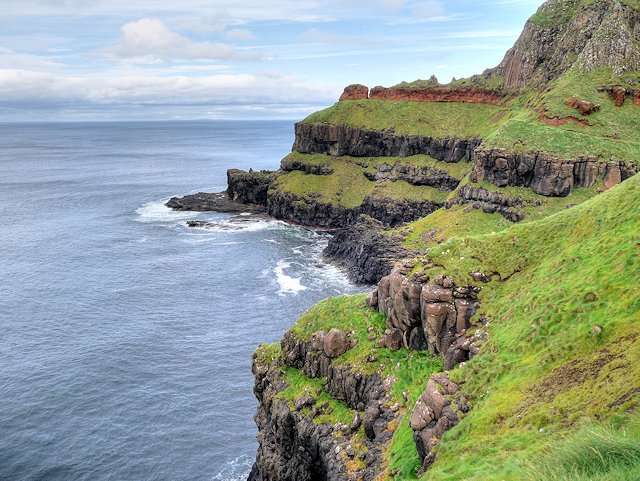
The Causeway Coastal route is easily one of the most scenic drives in Ireland.
This is essentially the surrounding coastline to the Giant’s Causeway, an extraordinary experience that you shouldn’t miss. The drive only takes ten minutes, but you can always slow down as you take in the sights.
The stunning beaches , the sand dunes, the rolling waves as you pass Portrush and Portstewart. This drive is stunning any time of the day, but it’s best to do it at sunset as the sights are particularly breathtaking.

Carrick A Rede, Image by Christine Rogador
If you’re in for an adventure that also lets you enjoy the stunning views, cross the Carrick-a-Rede Rope Bridge.
Found in County Antrim, this rope bridge links the mainland to the island of Carrickarede. The bridge spans 66 feet and about 98 feet above the rocks below.
The Carrick-a-Rede Rope Bridge is mainly a tourist attraction and not an official means to get to and from an island.
It’s quite a thrilling adventure to cross it and a must experience when in Northern Ireland. It is also one of the best day trips from Belfast .

Dunluce Castle, Image by Christine Rogador
Located in the North Antrim Coast is the brooding and dramatic Dunluce Castle . It is situated close to a headland and used to be the headquarter of the McDonnell clan.
This medieval castle maybe mostly ruins but at least we know now that a village used to surround the castle. This village was destroyed by fire in 1641. Dunluce Castle was featured in ‘Game of Thrones’ as the castle of Greyjoy.
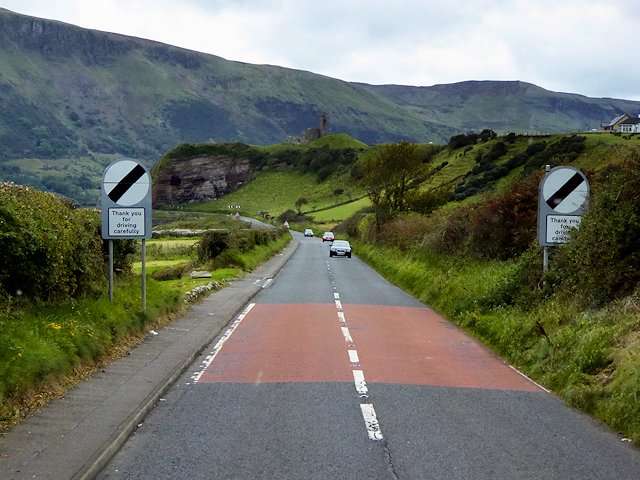
The North Antrim may have some stunning otherworldly sights, but its nine glens are not to be upstaged.
These are among the most breathtaking places you’ll ever see. These nine glens even exude a unique individual charm that you simply lust to spend time here when you visit.
A great way to see the glens is by driving along the main A2 coastal road, where you get to enjoy a closer look at the lakes, waterfalls , rolling hills and forest trails.
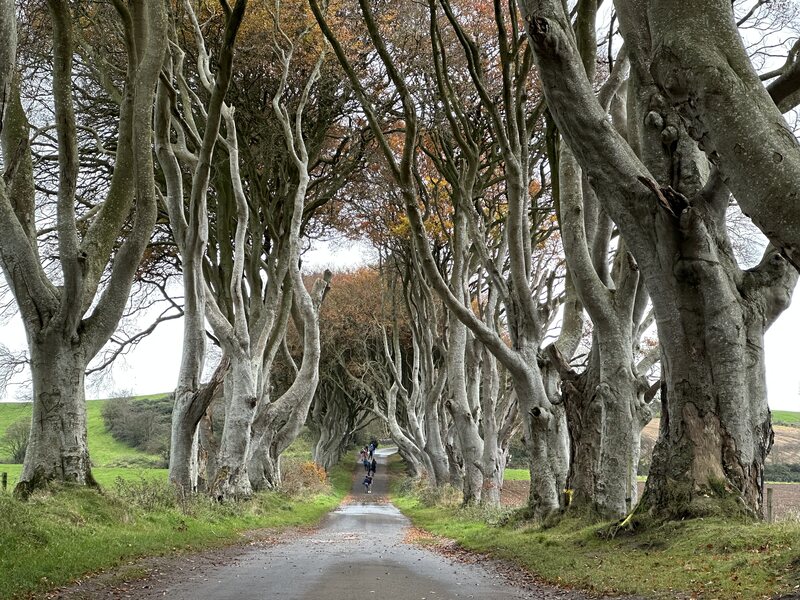
Dark Hedges, Image by Christine Rogador
The Dark Hedges is undoubtedly one of the most photographed and truly iconic sights in Northern Ireland. This natural attraction was featured in a few episodes the hit fantasy TV series ‘Game of Thrones as the road to King’s landing.
The best time to go here is in the morning, preferably before eight in the morning to avoid the crowds.
Aside from being a popular photography subject and tourist attraction, the Dark Hedges is also now a favorite location for wedding photographs.

The beautiful and dramatic location of Mussenden Temple made it an ideal setting for a rather horrifying scene in ‘Game of Thrones’.
Perched 120 feet high on a rugged clifftop, the temple overlooks the Atlantic as well as the Downhill Strand towards Magilligan Point. The views from here are spectacular, a definite must-visit when in Northern Ireland.
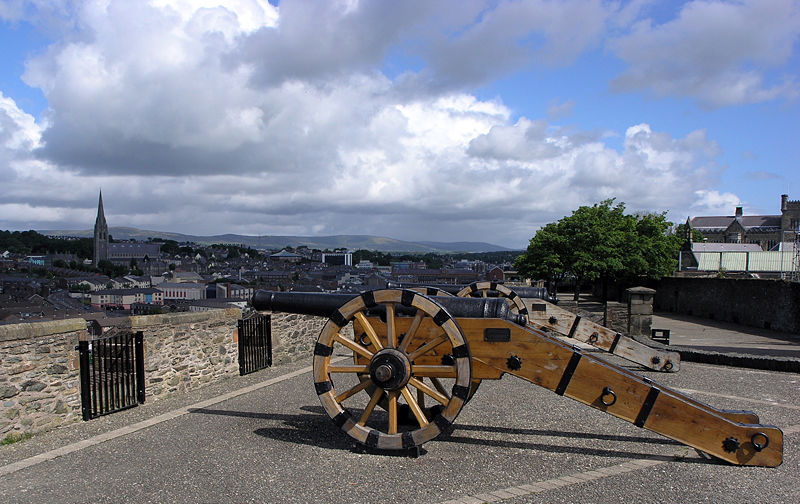
Londonderry or simply Derry is the second city in Northern Ireland. It is located where the River Foyle opens out into the sea-lough of the same name.
Derry is known to have brilliantly preserved medieval walls as well as some interesting old buildings. It is now an important port and industrial center. Its main industries include textiles and ceramics.
The town’s gorgeous surroundings also make it an ideal base to explore the Inishowen Peninsula and Donegal in the Republic of Ireland. Both places are known to be ideal sights for chasing the northern lights

Exploring Belfast is a definite must when in Northern Ireland.
There’s just a lot to see and do here — from the Titanic Museum and HMS Caroline to a hike up a castle on a hill.
Other places that should be in your Belfast itinerary are the Belfast Cathedral, the Belfast City Hall, the Botanical Gardens and the Crumlin Road Gaol,

Titanic Museum in Belfast, Image by Christine Rogador
This place is in Belfast but deserves a separate post. One should definitely devote ample time to visiting this stunning museum. It opened in 2012 during the centennial of the sinking of the Titanic, but the building is already an iconic Belfast landmark .
Located in the middle of the Titanic Quarter, the museum features extensive displays and collections on everything Titanic. They’re all interactive, too.
A visit here is a great way to learn more about this intriguing part of Northern Ireland’s history.
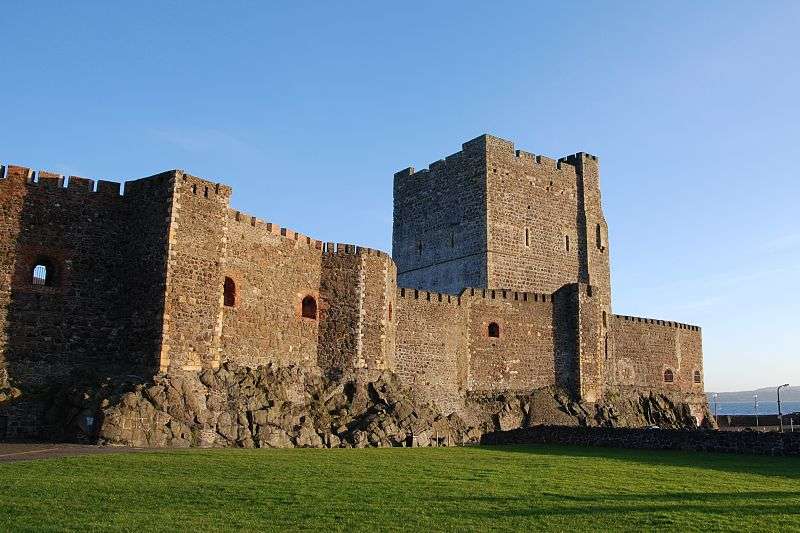
The imposing Carrickfergus Castle is one of the best-preserved medieval structures in Ireland.
Constructed over eight hundred years ago, it has been a witness and a target during war, conflict, and revolutions. It is nestled near the shore and still mostly intact.
The facade of the church set against its interesting location is already a treat in itself. Its namesake town is also a lovely place to explore.
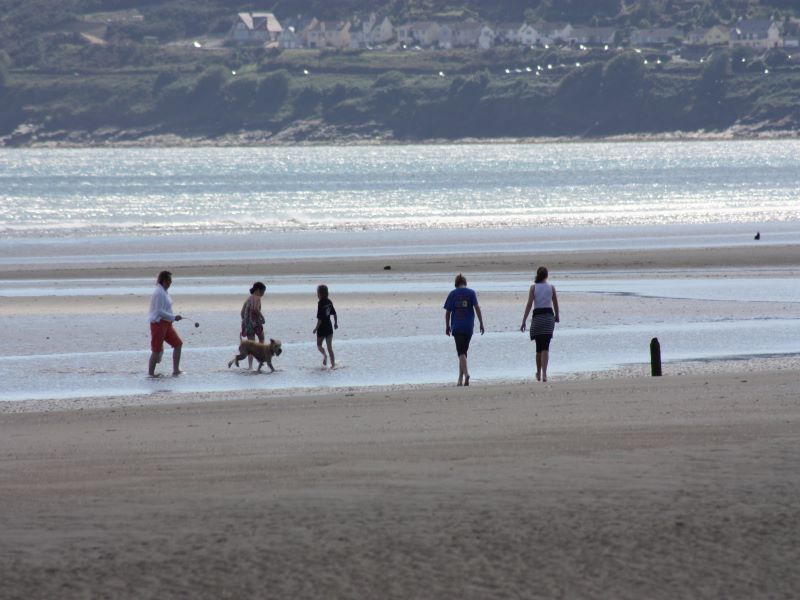
The charming town of Newcastle in County Down is a perfect seaside escape. The water may be colder than usual but the pristine beach is worth a leisurely stroll.
Or you can check out the incredible sand dunes at Murlough Beach. The seafront is lined with quaint shops and restaurants that serve up delicious local and international cuisine.
Newcastle also has the beautiful Mourne Mountains, which is a relatively manageable hike. This small town is also known to have the best golf course in all of Northern Ireland .
Get in for a few swings, or if you know nothing about golf, try the crazy version instead.
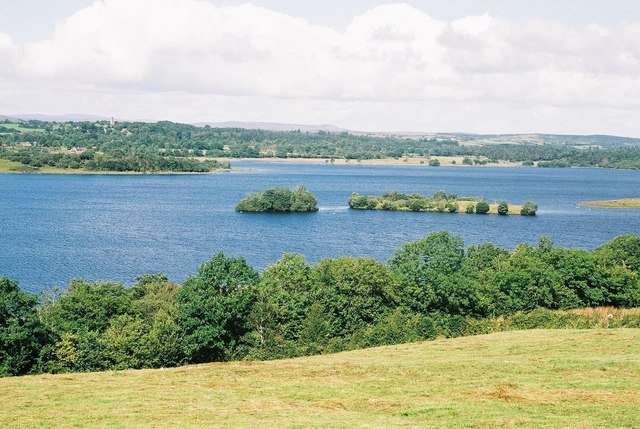
Lough Erne might as well be a living museum. Comprised of two connected lakes and islands, this part of County Fermanagh is a must-see.
See the castles and manor houses spread along the shore. See the 12th century round tower in one of the islands. Or how about some Celtic art?
Head on to White Island and Boa Island and see the carved stone figures done over a thousand years ago.
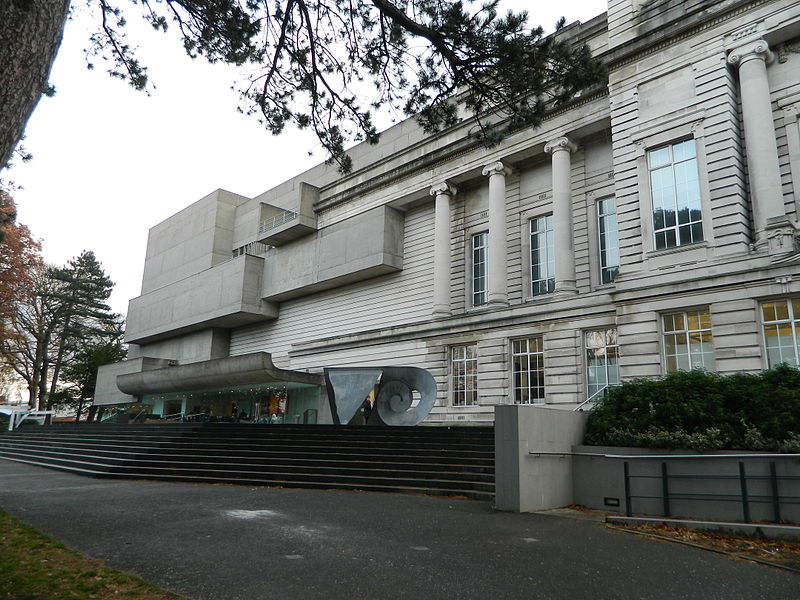
The Ulster Museum is easily accessible within a fifteen-minute drive from Belfast city center. This is a living museum that showcases the fascinating Ulster life more than 100 tears ago. Being here is like being sent back in a bygone era.
You get to walk around a village, explore a parkland or even get on steam locomotives. This place is an amazing glimpse at a life that we only read about in books.
Seeing them up close is a Northern Ireland experience that one shouldn’t pass up.
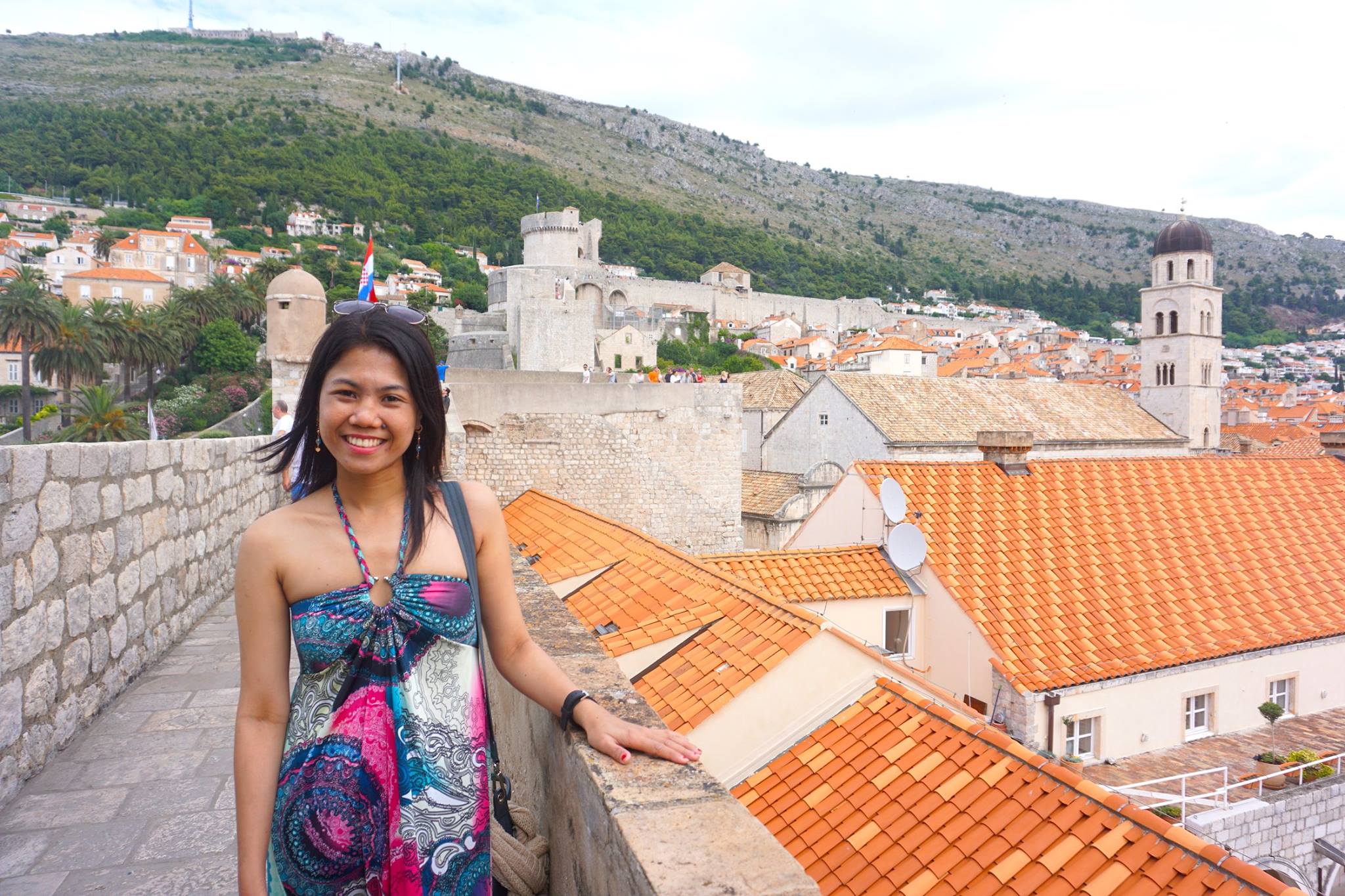
Hi, I’m Christine – a full-time traveler and career woman. Although I’m from the Philippines, my location independent career took me to over 40 countries for the past 8 years. I also lived in 3 continents – from the Caribbean, South East Asia to Africa. But despite living in several countries, my love for Ireland remains the same. A country that had been a part of my life since I was 14 because of my love for Irish music and bands. Ireland Travel Guides was born because of this passion and hopefully, in some little ways, this website will be able to help you on your next trip to Ireland.
Counties of Ireland Guide And Map - Ireland Travel Guides
Sunday 19th of September 2021
[…] divisions used, along with its boroughs. The Republic of Ireland is divided into 26 counties while Northern Ireland comprises 6 […]
Facts About Ireland - 25 Interesting Things About Ireland - Ireland Travel Guides
Monday 14th of June 2021
[…] only one ‘isle of Ireland’ but it is divided into two parts: Northern Ireland and the Republic of Ireland. Northern Ireland is under the United Kingdom, while the Republic of […]
You are using an outdated browser. Please upgrade your browser to improve your experience and security.

https://visitbelfast.com/
- What's On Homepage
- Art & Exhibitions
- Children’s Events
- Food & Drink
- Free Events
- History & Heritage
- Learning Experiences
- Lectures & Talks
- Markets & Fairs
- Music & Concerts
- Nature & Wildlife
- Pubs & Clubs
- Shows & Displays
- Virtual Events

- See & Do Homepage
- Arts & Entertainment
- Attractions
Green Attractions
Green spaces.
- Sightseeing Tours
- Information & Services
- Travel & Transport
Competitions

- Eat & Drink Homepage
- Afternoon Tea
- Restaurants
- Food and Drink Experiences
- Pubs and Clubs
- Visit Belfast Food & Drink Voucher

- Ideas Homepage
- Belfast Plus
- Family Friendly Belfast
- Free Things To Do in Belfast
Game of Thrones
- Titanic & Maritime
- Music in Belfast
- Embrace a Giant Spirit

- Stay Homepage
- Camping and Caravans
- Serviced Accommodation
- University Accommodation
Green Stays

- Plan Homepage
- Getting Here
- Belfast Visitor Map
- Accessibility in Belfast
Sustainable Belfast
- Getting Around Belfast
- Green Travel
- Belfast Visitor Pass
- Car Parking
- Brochures and Downloads
- Visitor Apps
Neighbourhoods
- Sign Up to Mailing List
- Visit Belfast Welcome Centre

- Offers Offers
- Neighbourhoods Neighbourhoods
- Game of Thrones Game of Thrones
- Search Enter your search above to discover things to do, events, offers and more... Close
Visit Belfast | Official Belfast Tourist Information | Trips to Belfast UK
You don’t have to go far for a city break this Spring! Uncover the reimagined Titanic Experience, shedding new light on our world-famous history. Visit whiskey distilleries, food markets and cool rooftop bars. Stroll through the cobbled streets steeped in history or embark on a traditional music trail. Start planning your Spring city escape today!
Recommended for You
Belfast 2024.
Belfast 2024 celebrates the culture of our city with a wide-range of local projects, events and city initiatives.
Top 10 Family Fun Attractions in Belfast
There are plenty of attractions to see and do for the kids (and the young at heart) around…
48 Hours in Belfast
Experience the best things to do in Belfast in 48 hours.
Titanic Belfast
Titanic Belfast is the world's largest Titanic visitor experience and a must-see on any visit to Belfast and…
Hillsborough Castle and Gardens
Visit Hillsborough Castle and Gardens and discover Northern Ireland’s royal residence.
Queen’s Arcade
Situated in the heart of Belfast city centre, Queen’s Arcade is home to a variety of luxury Boutiques…
You’ve come to the right place to start planning your next trip to Belfast – we’ve lots of ideas to inspire your travels for when you are able to get in the car, bus, coach train, plane or ferry to get here.
Here, you can search for things to do and find out what’s on in Belfast and across Northern Ireland. Get information about Belfast hotels , accommodation , attractions , sightseeing tours , restaurants and bars , and be inspired by our Titanic heritage and Game of Thrones territory.
Find out about getting here and download Belfast tourist maps . Or find out about the Visit Belfast Welcome Centre where you can pick up visitor guides and book tours and events tickets.

Get the latest scoop on concerts and gigs, festivals, family events and everything else that’s happening in Belfast. Browse our events guide to discover what’s on today, what’s on this weekend, and more things to do this month.

Here in Belfast, you’ll find fascinating walking, bus and taxi tours, cultural escapes, scientific exhibitions and literary inspirations. Not to mention the superb shopping, beautiful landmarks and top class entertainment.
Eat & Drink
Eating out is one of the great pleasures in life. There’s nothing like a new city, new restaurants and new culinary experiences. For a city the size of Belfast the choice of places to eat is surprising. We offer everything from fine dining, brasseries and bistros to gastro pubs, cafes, coffee shops and some of the best fish & chips around.

Looking for a comfy place to stay? Of course you are! And you’re guaranteed to find it here in Belfast and throughout Northern Ireland. Browse ideas for places to stay, including hotels , spa resorts, hostels , camping , caravanning , serviced accommodation and university accommodation .

We’re here to help you plan your perfect trip to Belfast. From information about getting to Belfast and travelling around the city to car parking , travel tips and guides to our neighbourhoods . Download Belfast visitor maps and brochures , and discover a host of visitor apps to help plan your trip.
Belfast is taking steps to become a future proof city for generations to come. Find out how you can make your trip to Belfast and the surrounding area more sustainable.

Discover these Green Tourism accredited attractions in and around Belfast. Make new memories and have fun at one of these sustainable attractions.
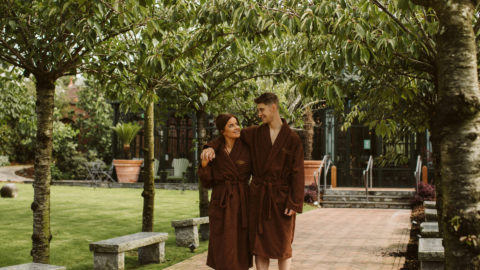
On your next visit to Belfast, why not show some love to the planet by visiting these Green Tourism accredited hotels, that are playing their part in making Belfast more sustainable.
Did you know Belfast is one of the top cities in the UK for green attractions? If you’re looking to make your visit as eco-friendly as possible, put these parks, gardens and tours at the top of your list.
Ideas and Inspiration
Check out our blog articles for some inspiration of things to do in and around Belfast.

Find hotel offers, restaurant deals and money off top visitor attractions with these unmissable offers in Belfast – all you need to plan a cheap city break!

You have to be in it to win it! Enter one of our exclusive competitions for your chance to win a trip to Belfast, festival tickets, visitor attraction experiences and nights out.
Each area of Belfast has its own character and charm, and its own unique variety of shops, restaurants, cafes, museums and attractions. Take time to discover the city’s hidden treasures in Belfast’s neighbourhoods.
Northern Ireland is the Home of Thrones. The popular TV series Game of Thrones® was filmed in Belfast and across Northern Ireland. Our rugged coast lines, historic castles and breathtaking scenery are the perfect setting for this epic story. Get the full experience and explore the filming locations with a Game of Thrones tour.

We're here to help, so if you can't find the info you're after, or you just want to ask a really odd question, then we're here for you.
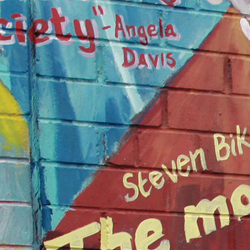
Visit Belfast Newsletter
Sign up to the Visit Belfast newsletter and receive inspiring ideas, events and offers which showcase the best of Belfast and Northern Ireland.
Ask a Question
" * " indicates required fields

Choose a date
- This Weekend
If you select a location more than 15km from the Visit Belfast Welcome Centre, your location will be set to Belfast City Centre.
Hide this tool

2 Weeks in Ireland and Northern Ireland: 2 Itineraries
DISCLAIMER: This post might have links to travel services and products that we enjoy. We might make a commission from it at no extra cost to you.
Ireland is the second largest island of the British Isles. It is located in the North Atlantic Ocean and is separated from Great Britain by the North Channel, St George’s Channel, and the Irish Sea.
Ireland is divided into the Republic of Ireland and Northern Ireland. Northern Ireland is part of the UK. Ireland is known for constructing Titanic, St Patrick’s Day, four-leaf clovers, bagpipes, and more.
In this 2 weeks in Ireland itinerary, it will include cities in Northern Ireland. But don’t worry, Ireland and the UK have an open border between Ireland and Northern Ireland, which is fine for visitors.
If you want to see the entire UK, we have an itinerary for 2 weeks in the UK . We also recommend this 3 weeks in the UK and Ireland itinerary if you have the time.
BASIC TRAVEL INFORMATION FOR IRELAND AND NORTHERN IRELAND

Before we get right into the itineraries, here are some helpful tips to make your trip easier and less hassle-free. Travelling to Ireland, if it’s your first time,, can feel confusing and intimidating, but this basic yet important information will help ease your mind.
When is the best time to travel to Ireland
Ireland has 4 seasons. The summer season is from June until the end of August. The peak season is from June to September. Winter starts during the first week of December until the end of February.
Are 2 weeks enough for Ireland
14 days are plenty of time for Ireland, including Northern Ireland. But it’s still important that you have some sort of idea of which cities you want to see and activities you want to do. In this way, you don’t miss anything.
This also ensure that you’re not spending too little or too much time in one place or listing too many places and ended up making the itinerary too busy.
How to get around
The first rule of public transport here is to buy a Leap card because that way, you can get substantial discounts on train, tram, and bus fares across the country. Travelling by train is the best option for inter-city trips.
Ferry services or boat hires are available for island trips. If you prefer privacy and a flexible schedule, you could rent a car or ride a taxi, but they are costly.
Language and currency
Ireland and Northern Ireland’s main language is Irish (Gaeilge), but it is spoken daily by a minority. English, however, is the predominant language and is spoken fluently throughout the country. Tourists can easily get around using English, as it’s universally understood and communicated in both urban and rural areas.
Ireland uses the Euro (€) as its currency, while Northern Ireland uses the British Pound Sterling (£) given its status within the UK. Paying in USD is not commonly accepted in either region. Both cash and card are accepted, but bank card payments are increasingly prevalent, especially in urban areas.
In most establishments, including restaurants, shops, and hotels, credit and debit cards are widely accepted. However, carrying some cash is advisable for smaller purchases or in rural areas.
Ireland Northern Ireland has different visa policies. Ireland is a member of the EU but doesn’t implement Schengen State border rules regarding Schengen visa holders (not EU citizens). On the other hand, Northern Ireland is part of the UK. This means that its visa policy aligns with the UK.
If you have a passport from the US, Canada, Brazil, Chile, Argentina, Bolivia, Paraguay, Uruguay, Ukraine, Australia, New Zealand, South Africa, Botswana, Japan, Singapore, Malaysia, and South Korea, you can enter and travel around Ireland for up to 90 days in a 180-day calendar. EU citizens have freedom of movement in Ireland.
If you plan to enter and travel around Northern Ireland and you travel with a passport from most places in North and Latin America, Botswana, Australia, New Zealand, Japan, South Korea, Malaysia, Singapore, and the EU, you can travel here for up to 6 months.
But for those not mentioned, you must secure a visa for both countries in advance. Schengen visa for Ireland and UK tourist visa for Northern Ireland.
Cost of 2 weeks in Ireland trip
Travelling in Ireland and Northern Ireland can cater to various budgets. On average, a single person’s cost for 14 days in Ireland is around €1,600 , covering accommodation, food, transportation, and activities. Here’s a rough breakdown for a two-week trip:
- Accommodation : Hostels or budget B&Bs can cost between €20-€50 per night.
- Food : Local pubs and self-catering; expect to spend €10-€20 per meal.
- Activities : Focus on free attractions, walking tours, and nature sites. Budget around €10-€20 daily.
- Estimated Total : €560-€1,260.
- Accommodation : Mid-tier hotels or guesthouses range from €60-€120 per night.
- Food : Dine in mid-range restaurants, spending €20-€40 per meal.
- Activities : Entry to some attractions and occasional guided tours; allocate €20-€50 daily.
- Estimated Total : €1,400-€3,080.
- Accommodation : Luxury hotels or castles can be €200-€500+ per night.
- Food : Fine dining experiences may cost €50-€100+ per meal.
- Activities : Private tours, spa treatments, and premium attractions. Budget €100+ daily.
- Estimated Total : €4,200-€9,800+.
Remember, these are rough estimates, and expenses can vary based on personal choices and availability. These numbers also doesn’t cover flights to Ireland and back, travel insurance, and travel items such as luggage and clothes if you need new ones for this trip.
Travel arrangement tips
Map of top sites and activities in ireland and northern ireland.
Click the icon on the top right to enlarge the map. Credit: map data: Google
2 WEEKS IN IRELAND AND NOTHERN IRELAND ITINERARY
Ireland is a wonderful country with historical sites, natural scenery, good food, and wonderful people. It was a filming site for many world-famous movies and TV series such as Game of Thrones, Lord of the Rings, and Harry Potter.
I created 2 options for your 2-week vacation itinerary, and you can choose which one you prefer. The itineraries are different because they are created for people with varied preferences, like if you prefer slow or adrenaline travel.
One final tip is if you’re planning to rent a car throughout your travel, it would be best to do it in Dublin as it has an airport that caters to international flights, so you can start in this place.
You could modify these travel itineraries however you want. It only guides you on what you could expect from various places in Ireland.
Itinerary #1: First-timer (Dublin, Belfast, Derry, Galway, Limerick, Cork)
This first itinerary is suitable for first-timers as it perfectly balances everything. Dublin, Belfast, Derry, and Limerick have rich histories, with well-preserved establishments and museums, while you could attend as many festivals as you want in Galway. Cork, on the other hand, is filled with incredible natural resources.
Dublin for 3 days
Dublin is the capital of Ireland, a perfect place to start your travel as it is the largest city in Ireland. Hence, you’ll find most of what you need here, food stocks, equipment, money exchange, and even transportation.
Dublin is known for its history, which stretches a thousand years, Georgian architecture, the General Post Office, a symbol of the Irish Revolution, and Grafton Street, an iconic street. This place is even referenced in Ed SHeeran’s song, Galway Girl.
Some other places to visit include Phoenix Park, Trinity College, and Croke Park, among others.

Belfast for 2 days
Your next stop is Belfast, the capital and largest city in Northern Ireland. It is a port with industrial and commercial docks and a major aerospace industry. It is famous for its murals, music scene, ginger ale, Game of Thrones, and footballer George Best.
Some places you could visit here are Giant Causeway, Queen’s University, St George’s Market, and for nature lovers, the Black and Divis Mountains and Cavehill.
Belfast is pretty close to Dublin. There are three modes of transportation to go here, and the most recommended is by train, which has a travel duration of around 2 hours and 15 minutes. Other options include riding the bus or driving.
Derry for 2 days
Derry is the second largest city in Northern Ireland and is famous for having a completely intact walled city. The city walls amazingly date back to 1613. One of the highly-known British sitcoms titled Derry Girls was also filmed here and inspired by this remarkable city.
As you walk into this place, you’ll find out how rich its history is. Some must-visit places include Free Derry Corner, Peace Bridge, Hunger Strike Monument, Siege Museum, and more.
Derry is a three-hour drive from Dublin and under a two-hour drive from Belfast. You can also ride the bus, which I highly recommend, or board the train. But if you want to save time, you can simply plan a day trip to Derry from Belfast.
Galway for 2 days
Galway is a city in West Ireland in Connacht province. It is well-known as Ireland’s festival capital, hosting an average of 122 festivals annually. With that being said, the city is filled with history, culture, exceptional music, and food. It is also a popular seaside destination.
Some of the must-visit attractions here include Dunguaire Castle, Kylemore Abbey & Victorian Walled Garden, Galway City Museum, Eyre Square, and more. They also offer day tours such as Aran Islands Day Trip & Cliffs Cruise.
There are two ways to reach Galway if you’re coming from Derry. The most recommended is via bus, which has a travel duration of more than five hours as it is cheaper than the other option, which is by driving. From Belfast to Galway, it’s a 4-hour drive.
Limerick for 3 days
Limerick is a city lying on the River Shannon. It is the third largest city and one of the oldest and is famous for various historic landmarks, including St Mary’s Cathedral and King John’s Castle.
The iconic Milk Market, Hunt Museum, Thomond Park, and Treaty City are located in Limerick. You’ll also find where the first Irish coffee was made, as well as the longest footbridge and longest-serving newspaper in Ireland – The Irish Times. From Limerick, there are also day tours to the Cliffs of Moher.
There are 3 ways to reach Limerick if you’re from Galway, and the most recommended is via train. The distance is 73.4 km and has a travel time of almost 2 hours. The ticket cost is anywhere between $12-$18. Other options include by bus or driving.
Cork for 3 days
Last but not least, is the city of Cork. Cork is such an enchanting city famous for its wildflower-studded mountains, stunning coastline, and being branded as Rebel County because of the role it played in the wars of Ireland. It is also referred to as Ireland’s food capital.
Other places to visit in Cork include Mizen Head, Cobh, Blarney Castle, and Kinsale Village.
The distance from Limerick to Cork is 98.7 km. There are 3 ways to reach Cork if you’re from Limerick. The most recommended is by train, which has a travel time of almost 2 hours. Other options are by bus or by driving.
It is ideal to end your trip here because you could experience a bit of everything. It is perfect for foodies, artwork enthusiasts, those fond of classic architecture, and those who love activities and adventure.
If you rent a car in Dublin or catch a flight home from there, the drive from here to there will take almost 3 hours, with a distance of 258.6 km.
Itinerary #2: Balanced and Slow (Dublin, Derry, Limerick, Killarney, Cork)
This second itinerary for 2 weeks in Ireland that I curated is most suitable for those who like slow but balanced travel. I included busy and less crowded cities so you could go to whichever city you prefer, depending on whether you’re in the mood for crowds.
Dublin and Limerick are the busiest cities in the bunch, but they have their charms. They have castles and parks but also have a vibrant nightlife.
Derry is filled with historical sites and has many events year-round. At the same time, Killarney and Cork, on the other hand, are famous for their natural sceneries and the adventurous activities you could do there, such as hiking, boat tours, biking, and more.
Dublin is the perfect place to start your travel because it has the country’s main airport. Some must-visit areas include Dublin Castle, Kilmainham Gaol, and Phoenix Park. Dublin also never disappoints when it comes to nightlife. There are many excellent restaurants to choose from, and then you can chill at Temple Bar.
A few things to do include the world-famous Guinness Brewery tour, picnic at St Stephen’s Green, do a pub crawl, and listen to live music at the Button Factory or Whelan’s.

Derry for 3 days
Derry is a staple cultural hub in Northern Ireland, full of murals, and history, and packed with events. One of which is the family-oriented Halloween festival.
Its surrounding villages also have spectacular sights, including Roe Valley Country Park nature reserve, where you can go glamping, and Nature Park, which hosts music festivals. Other places to visit include The Guildhall, St Columb’s Cathedral, and Tower Museum.
The distance between Dublin to Derry is 277.4 km, and the most recommended option is by bus. The travel time is more than 4 hours. Tickets cost anywhere between $27 to $35. Other options include by train and driving.
On your way to Derry, you can take a lunch break in Belfast or have a day trip and see Titanic Belfast, especially if you’re driving since it’s not a long drive from Dublin to Derry and would only take almost 3 hours before you reach your destination.
Limerick is known as a vibrant and exciting city from which the famed Limerick lace originated. It is known for its bacon and fishing industry and houses the largest Georgian quarter outside Dublin. Some activities here include biking, watching a rugby match, or listening to live music at Dolan’s.
What’s great about Limerick is that it’s near Rock Cashel, which resembles Minas Tirith for those fond of the Lord of the Rings franchise. You could take a day trip here as the travel time from Limerick to Rock Cashel is more than an hour.
There are a couple of ways to reach Limerick if you’re from Derry, and the most recommended option is by bus as it’s the cheapest. However, the travel time is between 7 and 8 hours, so if you want to reach Limerick faster, you could drive instead.
Killarney for 3 days
Killarney is a town in County Kerry, located in Southwestern Ireland. It is famous for its national park, filled with mountains you can hike, waterfalls, lakes, humongous trees, stone bridges, ruins, and wildlife.
Ross Castle is a must-see here, especially at night. Other sights to see here are The Ring of Kerry, Muckross House Gardens, The Dingle Peninsula, and more.
The distance between Killarney and Limerick is 110.4 km. There are 3 ways to reach Killarney if you’re from Limerick, and the most affordable option is by bus.
Dublin Coach is a bus line from Killarney to Limerick that operates every 4 hours. It has a travel time of almost 2 hours, and the tickets cost anywhere between $12-$22. Other options are by train and driving.

Cork for 2 days
Cork is the largest county in Ireland. Some must-visit places include The Beara Peninsula, Bantry House, Gougane Barra, The Ballycotton Cliff Walk, Lough Hyne, and more. Aside from sightseeing and day tours, whale watching, road trips, and wine tours are some things to do here.
I highly recommend taking the train if you’re going to Cork from Killarney. The travel time lasts more than an hour, and tickets cost anywhere between $11 – $16. Other options include by bus or driving.
Speaking of driving, if you rent a car from Dublin, Cork is the perfect place to end your tour because it is not that far from Dublin. Aside from that, you’ll be amazed by the numerous castles, parks, wildlife, museums, and quaint villages you’ll get to see here.
WHAT TO DO AND SEE IN IRELAND AND NOTHERN IRELAND (per city)
It’s not time to show you a list of things you can do and enjoy during your 2 weeks in Ireland and Northern Ireland. For this part of your itinerary planning , I recommend you open a map for this trip and add pins on each attraction. From there, you will have visuals which places are near one another.

- Day trip to The Cliffs of Moher – book a tour that includes Kilmacduagh Abbey and Galway
- Grafton Street
- Day trip to The Rock of Cashel – check the tour price including Cork City
- Dublin Castle – combo with Book of Kells tour
- National Museum of Ireland
- Day trip to The Dingle Peninsula and the Wild Atlantic Way – you can visit this included in a Cliffs of Moher tour
- Jameson Whiskey Distillery – book a whiskey tasting at the distillery
- Torc Waterfall
- Guinness Storehouse – get your entrance ticket
- Trinity College
- Have fun at a traditional Irish House party
- Titanic Belfast Museum
- Game of Thrones Tour – combine with Giant Causeway tour
- Carrick-a-rede
- Titanic Experience – book a tour including a visit to SS Nomadic
- Climb Slieve Binnian
- Explore Belfast on a bike
- Carrickfergus Castle
- The Giant’s Causeway – book a day trip or a combo tour with Game of Thrones
- Ulster Museum
- Belfast Castle
- Visit the Political Murals and Peace Wall – explore with a live tour
- Crumlin Road Gaol
- Ride the Political Taxi
- Glenoe Waterfall
- Book a food and street art tour
- Walk the Derry City Walls – book a tour
- Visit Guildhall
- Discover the city via a private walking tour
- Explore the Bogside Artists’ Murals – compare this tour and this one
- Cross the Peace Bridge
- Tour the Museum of Free Derry
- Derry’s Girl Filming Location – listen to the behind-the-scenes stories through this guided tour
- Enjoy a full-day trip into the world of ‘Game of Thrones’
- Dunguaire Castle
- Aran Islands – enjoy a cruise around the islands and Cliffs of Moher
- Stroll down Quay Street
- Enjoy a full-day tour to Connemara and Cong
- Visit the Latin Quarter
- Join a cruise trip across the River Corrib and onto Lough Corrib.
- Walk along the Salthill Promenade
- See the Spanish Arch
- Discover the city while riding an eBike
- Learn about local dishes and ingredients – join a food tour
- Explore Galway Market
- Visit King John’s Castle – Join a walking tour through the city
- Book a guided tour to Cliffs of Moher
- Explore The Hunt Museum – purchase the ticket beforehand
- Shop at Limerick Milk Market
- Explore the beauty of the Dingle Peninsula via a full-day tour
- Walk along or enjoy kayaking at the River Shannon
- Book a ticket to a Medieval Banquet at Bunratty Castle
- Discover the Bunratty Castle and Folk Park – skip the line by booking a ticket
- Tour Thomond Park
- Discover the city through this guided tour
- Join a day tour to Ring of Kerry and Killarney National Park
- The English Market
- Enjoy the developing culinary scene in the city – book a culinary tour
- Book a ticket to Jameson Distillery and enjoy the whiskey tasting
- Kiss the Blarney Stone at Blarney Castle
- Cork City Gaol – check ticket availability
- Visit St. Fin Barre’s Cathedral
- Enjoy a full-day trip from Cork to the majestic Cliffs of Moher and the Burren
- Join a shore excursion to Blarney Castle and Kinsale
- Walk along the River Lee
- Experience a Dinner Theatre Show in the city
- Lakes of Killarney – enjoy a boat cruise
- Explore Killarney National Park via a private horse and carriage tour
- Join a full-day tour to Dingle Peninsula, Slea Head, and Inch Beach
- Visit Ross Castle and admire the beauty of St. Mary’s Cathedral via a Jaunting Car Tour
- Innisfallen Island – book a guided boat tour
- Experience an old Irish tradition through a combination of Jaunting Car & Lake Cruise Tour
- Enjoy a day trip to Gap of Dunloe and a cruise on the Gearhameen River
- Hike to Torc Waterfall
- Drive the Ring of Kerry – check what’s included
LOCAL IRISH DISHES AND DRINKS TO TRY

Irish cuisine might not be the most popular, but we all know how famous their drinks are. Regardless, make sure to try out 3-4 dishes during your trip, and don’t miss a pint of Guinness. See which food you like the best:
- Irish Stew – a hearty dish with mutton, potatoes, and onions.
- Ulster Fry – a traditional Northern Irish breakfast with sausages, bacon, eggs, potato farl, and soda bread.
- Boxty – potato pancake, often served with a creamy sauce.
- Coddle – Dublin speciality made of sausage, bacon, onions, and potatoes.
- Colcannon – mashed potatoes mixed with cabbage or kale.
- Barmbrack – fruity bread traditionally associated with Halloween.
- Champ – creamy mashed potatoes with chopped spring onions.
- Seafood Chowder – a rich soup filled with locally sourced seafood.
- Irish Apple Cake – moist cake with juicy apple chunks.
- Carrageen Moss Pudding – dessert made from seaweed, often flavoured with vanilla and served with blackberry sauce.
- Fifteens – Northern Irish treat made of digestive biscuits, marshmallows, cherries, and coconut.
- Irish Whiskey -brands like Jameson or Bushmills are famous worldwide.
- Irish Coffee – mix of coffee, whiskey, sugar, and topped with cream.
- Guinness – the iconic Irish stout, best enjoyed in a local pub.
BEST PLACES TO STAY IN IRELAND AND NORTHERN IRELAND
Planning the 2 weeks in Ireland and Northern Ireland can be a massive task especially if it’s your first time here. So, I also included a list of recommended accommodations per city to help you make the planning a lot easier.
- Affordable: The Apache Hostel or Abbey Court Hostel
- Mid-range: Leeson Bridge Guesthouse or Egans House
- Luxury: Camden Court Hotel or The Grafton Hotel
- Affordable: Vagabonds Hostel or Belfast International Youth Hostel
- Mid-range: Tara Lodge or Ten Square Hotel
- Luxury: Grand Central Hotel or Titanic Hotel
- Affordable: Elagh View Bed & Breakfast or Groarty House/Manor or Rose Park House
- Mid-range: Number 8 The Townhouse or Holiday Inn Express or LegenDerry B&B
- Luxury: Everglades Hotel or The Belfray Country Inn or Quay 8
- Affordable: Feeney’s Audubon Lodge or Kinlay Hostel Eyre Square or Snoozles Galway City Centre
- Mid-range: Kilbree House B&B or The Nest Boutique Hostel or The Huntsman Inn
- Luxury: The Eyre Square Townhouse or Galway Bay Hotel Conference & Leisure Centre or The Hardiman
- Affordable: Castle Oaks House Hotel
- Mid-range: George Limerick Hotel or Kilmurry Lodge Hotel or The Old Quarter Townhouse
- Luxury: The Bedford Townhouse or Limerick Strand Hotel or Absolute Hotel Limerick
- Affordable: Sheilas Tourist Hostel or Bru Bar & Hostel
- Mid-range: Hotel Isaacs Cork City or Belvedere Lodge or Shandon Bells Guest House
- Luxury: Imperial Hotel Cork City or Cork International Hotel or Gabriel House Guesthouse
- Affordable: Tatler Jack or Killarney Heights Hotel or Ryebrook House
- Mid-range: Killarney Avenue or Killarney Glamping at the Grove, Suites and Lodges or The Black Sheep Hostel
- Luxury: The Lake Hotel or Killarney Randles Hotel or Killarney Dromhall Hotel
SUMMARY OF 2 WEEKS IN IRELAND AND NORTHERN IRELAND
Ireland is a small country, but it is filled to the brim with historical sites and tons of natural scenery that are captivating and memorable.
Because there are so many places to visit and things to do here, choosing which places to visit can be overwhelming. That’s why I put together this itinerary to serve as a guide. I hope you’ll enjoy your 14 days in Ireland as much as I enjoyed putting together this list.
TO SAVE THIS ITINERARY, PIN THIS IMAGE BELOW:


Tourism between Republic and Northern Ireland has tripled in a decade - 'a real opportunity for economic growth'
A new study has shown that tourism between Ireland and Northern Ireland tripled between 2013 and 2023.
The study, which was carried out by Ulster University and Dublin City University, examined levels of cross-border tourism. They found that there had been a sharp increase in the 10 years leading up to last year.
- Emmy-award winning travel show films in Ireland with hopes of enticing Americans to visit
- Northern Ireland's most scenic spots prove the area has plenty to offer explorers
While there were less than 100,000 cross-border trips made per quarter in 2013, the average rose to 300,000 across the span of a decade. The report also revealed that the Republic of Ireland received over four times the number of international visitors as Northern Ireland . Additionally, it showed that visitors from Great Britain made up two thirds of visitors to Northern Ireland compared to one third in the Republic.
‘Staycation’ tourism is a hugely important and valuable part of the overall tourism industry on both sides of the border, generating millions of euro a year and pumping it back into the economy. It also helps foster a positive and mutually beneficial relationship between the republic and north of Ireland, which social media users were delighted to see.
On X, users reacted to the promising statistic shared by DCU, with user @forlouth writing: “Excellent!.. Essential reading friends!”
Professor John Doyle, Vice President for research at Dublin City University, said the analysis: “highlights a real opportunity for economic growth, for businesses to grow their income and profitability, and for better wages in the sector.
For all the latest news straight to your inbox, sign up for our FREE newsletters here .
"Cooperation will benefit both parts of the island, but given the more developed tourism industry in the Republic, it should benefit Northern Ireland to a much greater extent.
"In order to close the gap with the Republic, public policy needs to move beyond the current levels of cooperation, to build a single tourism offering, in marketing, visa-requirements, tax and regional development policy, and, perhaps most crucially, in the perception of the visitor."
For the latest local news and features on Irish America, visit our homepage here .


Junior doctors in Northern Ireland stage 48-hour strike
The medics are taking action over pay and staff retention.

Junior doctors in Northern Ireland have started another 48-hour walkout.
They are taking part in a strike from 7am on Thursday to 7am on Saturday over pay and staff retention.
Striking junior doctors will travel to Stormont for a rally in the afternoon.
It follows a 48-hour strike from May 22 to 24 and will affect hospitals and GP surgeries across the region.

It says newly qualified medics in Northern Ireland see colleagues working elsewhere in the UK and in other jurisdictions getting better pay and conditions for less pressurised workloads, and warned doctors are leaving the health service in increasing numbers.
In a statement, a spokesperson for the Department of Health said they expect widespread disruption to services across Thursday and Friday.
They said that when the ballot for the industrial action was launched, junior doctors along with all health service staff had not received a pay award for 2023/24.
They said this is no longer the case and a backdated 2023/24 pay award for junior doctors will be paid this month, with its terms in line with the recommendations of the national pay review body.
“This pay award involves an average pay increase of 9.07% for junior doctors in Northern Ireland, with those in their first year receiving a 10.68% uplift,” they added.

£1 banknote to stay as States looks to redesign currency News | 1 hour ago
States to keep cashing in with new-look notes planned News | 1 hour ago
‘Step change is needed in States’ approach to housing’ News | 1 hour ago
Memorial service held in honour of a downed Canadian pilot News | 1 hour ago
Share your memories of Grow as it hits 40 News | 1 hour ago
Content Search
Travel and expense coordinator - uk.
- Mercy Corps
Location: Edinburgh orLondon, UK – flexible work environment (UK remote possible though not preferred)
Position Status: Full time, permanent
Salary: The starting salary range for this position in the UK is 27,280 GBP commensurate on professional experience
Closing date: Please submit application and cover letter by June 13th
Current unrestricted work authorization in the UK is required at the time of application for this position.
About Mercy Corps
Mercy Corps is powered by the belief that a better world is possible. To do this, we know our teams do their best work when they are diverse and every team member feels that they belong. We welcome diverse backgrounds, perspectives, and skills so that we can be stronger and have long term impact.
The Program / Department / Team
The Travel and Expense Department oversees the coordination of Mercy Corps travel and expense processes in partnership with external vendors. With the goal of streamlining travel planning, booking, and expense reimbursement processes while maintaining compliance requirements of Mercy Corps and donor policies.
The Position
The Travel & Expense Coordinator will play an important role in providing support to Mercy Corps travelers. This position helps support day to day travel operations, including service levels with travel vendors, customer service, team member education, as well as process/policy adherence. Additionally, this role will support the operation of Mercy Corps expense management system and related processes.
Essential Responsibilities (Example Section Below - Adapt to Specific Role)
TRAVEL COORDINATION AND COMMUNICATION
● Act as a point of contact for any travel related questions or issues from team members.
● Monitor travel inbox and provide timely responses to traveler inquiries.
● Troubleshoot problems that travelers and their arrangers may encounter in regards to travel and the travel system.
● Act as a point of contact for day to day issues that arise with Travel Management Company (TMC) and work with TMC to resolve issues.
● Coordinate with Airline and Hotel vendors as needed to support travelers and resolve issues.
COMPLIANCE AND TRAINING
- Understand donor and Mercy Corps policies (including Fly America Act), procedures, rules and regulations to monitor and ensure compliance.
- Educate Mercy Corps employees on the travel system, policies and procedures.
EXPENSE SUPPORT
- Assist as needed with day to day support of Mercy Corps expense management system (Databasics)
- Act as a point of contact for expense related questions in collaboration with Finance.
- Assist Finance with troubleshooting unmatched travel transactions
Supervisory Responsibility
Accountability.
Reports Directly To: Director of Travel and Expense
Works Directly With: Travelers, Finance, Procurement, Databasics System Team, and travel vendors
Accountability to Participants and Stakeholders
Mercy Corps team members are expected to support all efforts toward accountability, specifically to our program participants, community partners, other stakeholders, and to international standards guiding international relief and development work. We are committed to actively engaging communities as equal partners in the design, monitoring and evaluation of our field projects.
Minimum Qualifications & Transferable Skills
● Bachelor’s degree or 2+ years of administrative experience with a customer service focus
● Highly organized, detail-oriented with independent problem-solving skills.
● Strong ability to communicate clearly and succinctly and intercultural communication experience preferred.
● Ability to learn new systems quickly
● Demonstrated history of providing excellent customer service, meticulous attention to detail, and ability to follow procedures, complete tasks, meet deadlines and work well under pressure and cooperatively with team members is required
● Intermediate skills in Microsoft Word and Excel, as well as the ability to navigate the internet and intranet are required
● Demonstrated experience maintaining confidential information
Success Factors
The successful Travel & Expense Coordinator is self-directed, innovative, action-oriented and an avid learner. They are able to work independently, employ effective time management skills, thrive in fast-paced environments and handle frequent interruptions and shifting priorities without sacrificing composure or excellent customer service. This individual demonstrates flexibility, resilience and the ability to build effective relationships with a wide variety of individuals. They consistently maintain high ethical standards and treat all people with respect and dignity. The most successful Mercy Corps team members have a positive approach, a strong commitment to teamwork and personal accountability, and make effective communication a priority in all situations.
Living Conditions / Environmental Conditions
The position can be based in Edinburgh or London and may require limited travel as needed.
Ongoing Learning
In support of our belief that learning organizations are more effective, efficient and relevant to the communities we serve, we empower all team members to dedicate 5% of their time to learning activities that further their personal and/or professional growth and development
Diversity, Equity & Inclusion
Achieving our mission begins with how we build our team and work together. Through our commitment to enriching our organization with people of different origins, beliefs, backgrounds, and ways of thinking, we are better able to leverage the collective power of our teams and solve the world’s most complex challenges. We strive for a culture of trust and respect, where everyone contributes their perspectives and authentic selves, reaches their potential as individuals and teams, and collaborates to do the best work of their lives.
We recognize that diversity and inclusion is a journey, and we are committed to learning, listening and evolving to become more diverse, equitable and inclusive than we are today.
Equal Employment Opportunity
Mercy Corps is an equal opportunity employer that does not tolerate discrimination on any basis. We actively seek out diverse backgrounds, perspectives, and skills so that we can be collectively stronger and have sustained global impact.
We are committed to providing an environment of respect and psychological safety where equal employment opportunities are available to all. We do not engage in or tolerate discrimination on the basis of race, color, gender identity, gender expression, religion, age, sexual orientation, national or ethnic origin, disability (including HIV/AIDS status), marital status, military veteran status or any other protected group in the locations where we work.
Safeguarding & Ethics
Mercy Corps is committed to ensuring that all individuals we come into contact with through our work, whether team members, community members, program participants or others, are treated with respect and dignity. We are committed to the core principles regarding prevention of sexual exploitation and abuse laid out by the UN Secretary General and IASC and have signed on to the Interagency Misconduct Disclosure Scheme . We will not tolerate child abuse, sexual exploitation, abuse, or harassment by or of our team members. As part of our commitment to a safe and inclusive work environment, team members are expected to conduct themselves in a professional manner, respect local laws and customs, and to adhere to Mercy Corps Code of Conduct Policies and values at all times. Team members are required to complete mandatory Code of Conduct elearning courses upon hire and on an annual basis.
As a safeguarding measure, Mercy Corps screens all potential employees. This is done following the conclusion of recruitment and prior to assuming full employment.
Our screening process is designed to be transparent and completed in partnership with new Team Members. You will have the opportunity to disclose any prior convictions at the conclusion of the recruitment process before the check is initiated. We ask that you do not disclose any prior convictions in your application materials or during the recruitment process.
How to apply
learn more and apply here: https://jobs.jobvite.com/mercycorps/job/oKFNtfwp
Latest Updates
South Sudan
South Sudan launches $33 million project to combat climate change and food insecurity
The governor of damietta receives a delegation from unhcr to discuss ways of cooperation to support refugees.
Sudan + 3 more
Sudan Internal Displacement Set to Top 10 Million as Famine Looms – IOM
Actualização epidemiológica sobre a cólera (05.06.2024) [pt].
Exploring history and wildlife on the UK’s storied coastal paths
From jagged cliffs rising out of the sea to sandy coves and quaint fishing villages, the UK's coastline has some incredible walking trails. Here are five of the best locations.
The UK has just over 11,000 miles of coastline, encompassing UNESCO World Heritage sites, dinosaur fossils, surfing beaches, pirate coves and cliffs. For now, walkers cannot officially walk the entire periphery; there's no continuous trail and some stretches are off-limits, but there are some fine stretches to get a handle on this island nation. From a route which encompasses some of the best-preserved Neolithic ruins in Europe to an island-hopping adventure across the Isles of Scilly, here’s a selection of some of the most dramatic coastal trails as recommended by walking experts HF Holidays .
1. Meirionnydd Coast, North Wales
Which is more astonishing — that around 200 different types of shell comprise the substrate on Wales’s Shell Island, or that someone took the time to count them? Either way, also known as Mochras is a beauty to behold, with its diverse detritus and specklings of wildflowers. Mochras is one of the many attractions that dot the miles of broad, sandy beaches uniquely set against the mountainous backdrop of Eryri National Park (formerly Snowdonia).
To explore the area, embark on this epic eight-day adventure , which starts at Penrhyndeudraeth and trails south across sand dunes, fishing villages and estuarine habitats towards the Dyfi Valley. Harlech Castle, a UNESCO World Heritage-listed medieval fortification, is a particular highlight along this coastal trail — dedicate one to two hours to walk the walls and learn about its illustrious history at the on-site exhibition. On free days, walkers may choose to explore the opulent Italianate village of Portmeirion and the subterranean chambers of Llechwedd Slate Caverns.

2. Orkney & Shetland, Scotland
Abundant wildlife, maritime heritage, unique culture and local crafts — you can expect all of this and more on Orkney and Shetland, two of Scotland’s northernmost archipelagos. Providing stepping stones to Northern Europe, these isles have helped to elucidate early migration patterns on the continent — the Shetland site of Jarlshof stands testament to that, where 4,000-year-old discoveries include Bronze and Stone Age settlements, Norse longhouses and medieval smallholdings. Orkney, meanwhile, is home to one of Europe’s most significant prehistoric settlements, the UNESCO-listed Heart of Neolithic Orkney, with its 5,000-year-old ceremonial stone circles, chambered tombs, communal living quarters and sacred burial sites.
Experience the best of both isles on this eight-day adventure , which includes Marwick, Orkney and Muckle Roe, Shetland. The nine-mile clifftop coastal path from Marwick Bay to the Brough of Birsay is a particular highlight for wildlife lovers, as it overlooks RSPB Marwick Head Nature Reserve. Here, keen twitchers may spot gulls and skuas patrolling the skies, while grey and common seals bob in the waters below. The walk is followed with a visit to explore the mysterious Ring of Brodgar and the Standing Stones of Stenness, which, together with Skara Brae and Maes How, form the Heart of Neolithic Orkney.
3. North Cornwall, Southwest England
The lives of the Cornish people have always been inextricably linked to the sea. As such, coastal walks here offer the chance to get up close to the county’s storied, industrial mining heritage. These relics of Cornwall’s past have become county emblems — particularly along the rugged northern coast covered on this eight-day adventure . Starting at the sandy, surfing beach of Treyarnon Bay near Padstow and ending at Cape Cornwall, just four miles north of Land's End, this coastal trail offers all the classic sights of the Cornish coastline, including quiet coves, traditional fishing villages and a mosaic of rare coastal habitats, including saltmarshes, sand dunes and even Atlantic temperate rainforest.
Along the route, look out for the early 20 th -century tin mines of Geevor and the 19 th -century tin mine Botallack, the latter of which was made famous by BBC’s Poldark series. It’s worth keeping an eye on the blue horizon, too, where fin, minke and humpback whales may be spotted in ever-increasing numbers.
4. Somerset & North Devon, Southwest England
Stretching a mammoth 630 miles through Dorset, Devon, Cornwall and Somerset, the South West Coastal Path is the UK’s longest national trail and perhaps one of the most picturesque of all, encompassing wild countryside, sweeping seafront panoramas, pretty ports and historic county towns.
Tackle a portion of the epic coastal trail on this eight-day adventure , which begins at the quaint seaside resort of Minehead in Somerset and ends at the secluded sands of Croyde Bay in northern Devon. Porlock Weir, a bustling harbour village surrounded by steep wooded slopes, verdant farmland and heather-covered moorlands, is a particular highlight along the trail. Walkers will also enjoy visiting Lynton and Lynmouth, two sister villages dubbed ‘the Switzerland of England’ due to their distinct Alpine appearance. They also provide the gateway to Devon’s Valley of the Rocks, a dramatic dry valley known for its rugged, prehistoric landscape and spectacular views of the Bristol Channel.

5. Isles of Scilly, Southwest England
With its white-powder-sand beaches and sparkling sapphire waters, the Isles of Scilly are often touted as Britain’s somewhat chillier answer to the Caribbean coast. So remote is this archipelago, lying 28 miles off the southwest coast of mainland Cornwall, that little has left its mark: only five islands are inhabited, while the other 140 provide a haven for seabirds and other wildlife.
Drink it all in by hopping between the islands on this seven-day adventure , which traverses the archipelago via a series of dramatic coastal trails. Here, walkers can discover peaceful, secluded bays on Bryher, breathtaking landscapes dotted with wildflowers and archaeological ruins on St Agnes and St Martin’s, and wild heathland, rocky coastlines and 16th and 17th century castles on Tresco. The latter is also home to Abbey Garden, a botanical paradise with more than 3,000 species of plants and trees, and Valhalla museum, which houses figureheads salvaged from shipwrecks from around the islands' shores.
Related Topics
- WALKING TOURS
You May Also Like

A UK break in Falmouth: Cornish maritime history on the South West Coast Path

Exploring the UK's wild isles: 5 of the best new nature travel books

The new Sri Lankan hiking trail that leads to the heart of the hill country

How to plan a road trip along Ireland's Ceide Coast

The 6 best hiking boots for women

The 'original' High Line is in Paris — here's why you should walk it

Looking for a truly remote, off-the-grid adventure? Try Panama.
- Terms of Use
- Privacy Policy
- Your US State Privacy Rights
- Children's Online Privacy Policy
- Interest-Based Ads
- About Nielsen Measurement
- Do Not Sell or Share My Personal Information
- Nat Geo Home
- Attend a Live Event
- Book a Trip
- Inspire Your Kids
- Shop Nat Geo
- Visit the D.C. Museum
- Learn About Our Impact
- Support Our Mission
- Advertise With Us
- Customer Service
- Renew Subscription
- Manage Your Subscription
- Work at Nat Geo
- Sign Up for Our Newsletters
- Contribute to Protect the Planet
Copyright © 1996-2015 National Geographic Society Copyright © 2015-2024 National Geographic Partners, LLC. All rights reserved

IMAGES
COMMENTS
Places to Visit in Northern Ireland. Northern Ireland is a land of captivating contrasts, where historic landmarks and stunning landscapes beckon exploration. Unearth the mystery of the Giant's Causeway, with its otherworldly hexagonal columns, immerse yourself in Belfast's rich history at the Titanic Quarter, or walk along Derry~Londonderry's ...
3, 4 or 5 Days in Northern Ireland Itinerary. Without further ado, here is how to spend 3 to 5 days exploring Northern Ireland. This route is meant to be built upon each day so if you're only seeing Northern Ireland in 3 days, then plan to spend the first 2 in Belfast before heading onto the Causeway Coast. And if you're spending 4 days, it ...
Northern Ireland. Europe. An exploding food scene, hip cities and the stunning Causeway Coast: there's plenty to pull visitors to the North. When you cross from the Republic into Northern Ireland you'll notice a couple of changes: the road signs are in miles and the prices are in pounds sterling - you're in the UK.
1. It's both part of Ireland yet separate. While Northern Ireland may be on the island of Ireland, it's officially part of the United Kingdom (and has been that way for over a century). The border is open and easy to cross, but note that you're entering an entirely different country when you do. 2.
A Game of Thrones tour - for fans of the hit TV show. 24. St. George's Market, Belfast - for Northern Irish food and vibes. 23. Climb Slieve Binnian, Co. Down - the most beautiful peak in Northern Ireland. 22. The Derry Walls, Derry - the only remaining complete city walls in Ireland. 21.
Northern Ireland is an underrated and often overlooked region that surprises visitors with its striking scenery and urban vitality. While it shares an island with the Republic of Ireland, when you cross into Northern Ireland, you're crossing an international border into the United Kingdom (where you change stamps, phone cards, and money). Its coast boasts the alligator-skin volcanic geology of ...
Visit Northern Ireland's most delicious and first bean-to-bar chocolate maker and learn all about their chocolate-making process. Set amongst the beautiful countryside of County Down, overlooking the coast, sits NearyNogs Stoneground Chocolate, a family business making unforgettable chocolate since 2011.
How to Book. Siobhan Byrne Learat, a member of T+L's A-List of top travel advisors, can orchestrate a journey across Northern Ireland that encompasses five-star hotels, walking tours of Belfast ...
Get information on Northern Ireland Travel Guide - Expert Picks for your Vacation hotels, restaurants, entertainment, shopping, sightseeing, and activities. Read the Fodor's reviews, or post your own.
The easiest way to travel into Northern Ireland, if it is possible, is to aim for Belfast City. It is the capital city of Northern Ireland and is the area that all roads in the north eventually lead to. For simplicity, the following section will be mainly focusing on getting in and out of here. Think of Belfast City as the base of Northern ...
Credit: Tourism Northern Ireland. The Stuart family planted the hedges in the 18 th-century to impress visitors approaching their Georgian mansion.. However, the site is perhaps best known today as a filming location in HBO's Game of Thrones, in which it doubled as The King's Road in season two of the epic series.. After walking among the Dark Hedges, test your bravery at the Carrick-a ...
2 Rathlin Island is Northern Ireland's only inhabited offshore island, reached by a short ferry ride. 54.166667 -6.083333. 3 Mourne Mountains are criss-crossed by tracks past woodland up to the peaks: Slieve Donard at 852 m / 2796 ft is the highest in Northern Ireland. 54.618333 -6.395278.
Book your Northern Ireland tour package with Trafalgar and discover the urban Belfast, with a twinkling waterfront and regal Victorian architecture. ... The scenic highlight of any Northern Ireland travel experience, we'll take you through pretty Donegal Town, with a serene harbor, the 15th-century Donegal Abbey and the ancient Donegal Castle.
The best way to arrive in Northern Ireland for your week-long vacation is to fly directly into Belfast International Airport. Most flights arrive during the day, meaning you will have enough time to pick up your rental car and make your way to Northern Ireland's capital city, Belfast. The airport is actually located near Lough Neagh and you ...
Dunluce Castle is one of the most iconic monuments in Northern Ireland, situated rather precariously on the rugged Antrim coast. It provides a very important chapter in the history of the MacDonnells of Antrim and north-east Ulster. Ruins of Dunluce Castle. (Photo by Rainbow79/Getty Images)
Northern Ireland Travel Guide. Your ultimate Northern Ireland travel guide, with tips, and things to see and things to do in Northern Ireland. Great for first-time and returning travelers. Founded in 1921, Northern Ireland is separate from Ireland itself and is part of the United Kingdom. It has a population of 1.8 million.
Here, you'll need pound sterling, not the Euro as used in the south. Learn more about the best places to visit with our list of the top attractions in Northern Ireland. On This Page: 1. The Giant's Causeway. 2. The Causeway Coast and Dunluce Castle. 3. Carrick-a-Rede Rope Bridge.
Location: 44 Causeway Road, Bushmills. Open: Dawn to dusk. Cost: Adult £13.50, Children £6.75 for parking and tour, free to walk down otherwise. Just a little way from Cushendun Village, Giant's Causeway is a wonder in its own right on your Northern Ireland road trip.
Day 2: The countryside. Our Irish road trip continued as we headed out on the scenic R697 to the Priory of Kells. The 12th-century ruin—one of our favorites—was the largest and most important Augustinian monastic site in Ireland. Currently undergoing restoration, it's a magnificent sight to see.
14 Places To Visit In Northern Ireland. 1. Giant's Causeway, Co. Antrim. Giant Causeway, Image by Christine Rogador. Exquisite, dramatic, awe-inspiring. It's easy to run out of ways to describe the Giant's Causeway, but one will always find more reasons to go back.
Northern Ireland is the Home of Thrones. The popular TV series Game of Thrones® was filmed in Belfast and across Northern Ireland. Our rugged coast lines, historic castles and breathtaking scenery are the perfect setting for this epic story. Get the full experience and explore the filming locations with a Game of Thrones tour.
Ireland is known for constructing Titanic, St Patrick's Day, four-leaf clovers, bagpipes, and more. In this 2 weeks in Ireland itinerary, it will include cities in Northern Ireland. But don't worry, Ireland and the UK have an open border between Ireland and Northern Ireland, which is fine for visitors. If you want to see the entire UK, we ...
Northern Ireland's most scenic spots prove the area has plenty to offer explorers While there were less than 100,000 cross-border trips made per quarter in 2013, the average rose to 300,000 across ...
Junior doctors in Northern Ireland are to stage another 48-hour walkout. They will take part in a strike from 7am on Thursday to 7am on Saturday over pay and staff retention. Striking junior doctors will travel to Stormont for a rally in the afternoon. It follows a 48-hour strike from May 22-24 and ...
With a packed events calendar kicking off across Northern Ireland, Translink is encouraging the public to take the hassle out of getting to and from venues, and travel with Translink. Providing bus, coach and rail travel to some of the biggest concerts, sporting events and festivals throughout this summer, Translink has a great range of additional transport options for upcoming events.
The number of tourist visits from the Republic of Ireland to Northern Ireland has tripled in the past decade, new analysis suggests. Economists at Ulster University and Dublin City University have ...
The Travel & Expense Coordinator will play an important role in providing support to Mercy Corps travelers. ... United Kingdom of Great Britain and Northern Ireland; City London or Edinburgh ...
3. North Cornwall, Southwest England. The lives of the Cornish people have always been inextricably linked to the sea. As such, coastal walks here offer the chance to get up close to the county ...